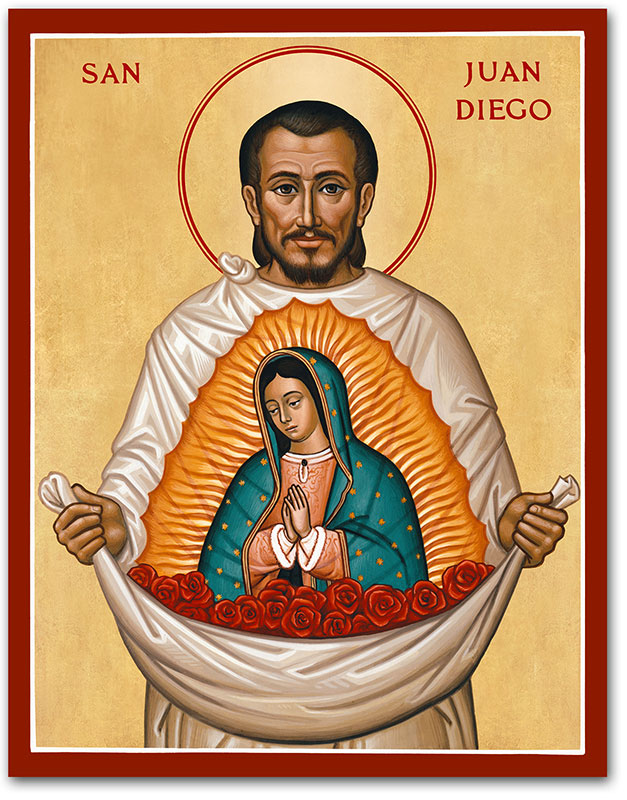
ファン・ディエゴ
Juan Diego Cuauhtlatoatzin, 1474-1548
☆フアン・ディエゴ・クアウテラトアツィン(Juan Diego Cuauhtlatoatzin)、 通称フアン・ディエゴ(スペイン語発音:[ˌxwanˈdjeɣo]、1474年~1548年)は、ナワ族の農民であり、マリアの幻視者であった。彼は 1531年12月に4回、グアダルペの聖母マリアの幻視を授かったと言われている。3回はテペヤックの丘で、4回目は当時メキシコ司教であったドン・フア ン・デ・スマラガの前でだった。テペヤックのふもとにあるグアダルペ聖母大聖堂には、伝統的にフアン・ディエゴのものと言われているマント(ティルマフト リ)が保管されており、聖母マリアの像が奇跡的にそのマントに刻印されたことで、その出現の真実性が証明されたと言われている。 フエイ・トラマウィソルティカなどの口頭および書面による植民地時代の資料に記されているフアン・ディエゴの幻視と奇跡的なイメージの伝達は、合わせてグ アダルペの出来事(スペイン語:el acontecimiento Guadalupano)として知られ、グアダルペの聖母への崇敬の基盤となっている。この崇敬はメキシコ全土に広がり、スペイン語圏のアメリカ大陸全体 に浸透し、さらにその範囲を広げている[b]。その結果、グアダルペの聖母大聖堂は、今や世界有数のキリスト教巡礼地となっており、2010年には 2200万人の訪問者を受け入れた。フアン・ディエゴはアメリカ大陸で生まれた最初のカトリックの聖人である。1990年に列福され、2002年に教皇ヨ ハネ・パウロ2世によって列聖された。教皇は両式典に出席するため、メキシコシティを訪れた。
| Juan Diego
Cuauhtlatoatzin,[a] also known simply as Juan Diego (Spanish
pronunciation: [ˌxwanˈdjeɣo]; 1474–1548), was a Nahua peasant and
Marian visionary. He is said to have been granted apparitions of Our
Lady of Guadalupe on four occasions in December 1531: three at the hill
of Tepeyac and a fourth before don Juan de Zumárraga, then bishop of
Mexico. The Basilica of Our Lady of Guadalupe, located at the foot of
Tepeyac, houses the cloak (tilmahtli) that is traditionally said to be
Juan Diego's, and upon which the image of the Virgin is said to have
been miraculously impressed as proof of the authenticity of the
apparitions. Juan Diego's visions and the imparting of the miraculous image, as recounted in oral and written colonial sources such as the Huei tlamahuiçoltica, are together known as the Guadalupe event (Spanish: el acontecimiento Guadalupano), and are the basis of the veneration of Our Lady of Guadalupe. This veneration is ubiquitous in Mexico, prevalent throughout the Spanish-speaking Americas, and increasingly widespread beyond.[b] As a result, the Basilica of Our Lady of Guadalupe is now one of the world's major Christian pilgrimage destinations, receiving 22 million visitors in 2010.[4][c] Juan Diego is the first Catholic saint indigenous to the Americas.[d] He was beatified in 1990 and canonized in 2002[8] by Pope John Paul II, who on both occasions traveled to Mexico City to preside over the ceremonies. |
フアン・ディエゴ・クアウテラトアツィン(Juan Diego
Cuauhtlatoatzin)[a]、通称フアン・ディエゴ(スペイン語発音:[ˌxwanˈdjeɣo]、1474年~1548年)は、ナワ族の農
民であり、マリアの幻視者であった。彼は1531年12月に4回、グアダルペの聖母マリアの幻視を授かったと言われている。3回はテペヤックの丘で、4回
目は当時メキシコ司教であったドン・フアン・デ・スマラガの前でだった。テペヤックのふもとにあるグアダルペ聖母大聖堂には、伝統的にフアン・ディエゴの
ものと言われているマント(ティルマフトリ)が保管されており、聖母マリアの像が奇跡的にそのマントに刻印されたことで、その出現の真実性が証明されたと
言われている。 フエイ・トラマウィソルティカなどの口頭および書面による植民地時代の資料に記されているフアン・ディエゴの幻視と奇跡的なイメージの伝達は、合わせてグ アダルペの出来事(スペイン語:el acontecimiento Guadalupano)として知られ、グアダルペの聖母への崇敬の基盤となっている。この崇敬はメキシコ全土に広がり、スペイン語圏のアメリカ大陸全体 に浸透し、さらにその範囲を広げている[b]。その結果、グアダルペの聖母大聖堂は、今や世界有数のキリスト教巡礼地となっており、2010年には 2200万人の訪問者を受け入れた[ 4][c] フアン・ディエゴはアメリカ大陸で生まれた最初のカトリックの聖人である[d]。1990年に列福され、2002年に[8]教皇ヨハネ・パウロ2世によっ て列聖された。教皇は両式典に出席するため、メキシコシティを訪れた。 |
Biography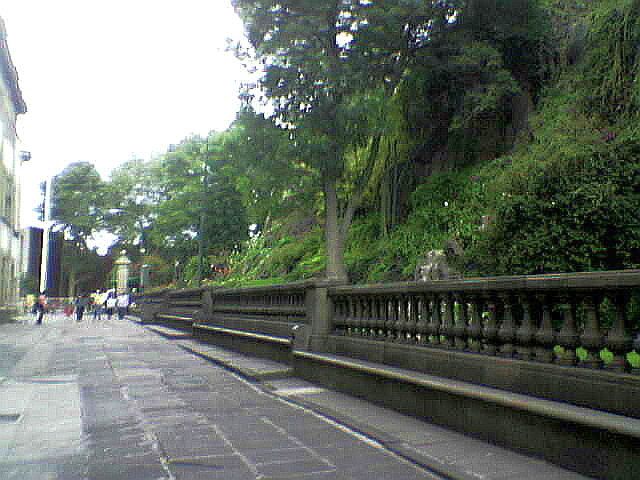 At the foot of the Tepeyac Hill According to major sources, Juan Diego was born in 1474 in Cuauhtitlan,[e] and at the time of the apparitions he lived there or in Tolpetlac.[f] Although not destitute, he was neither rich nor influential.[g] His religious fervor, his artlessness, his respectful but gracious demeanour towards the Virgin Mary and the initially skeptical Bishop Juan de Zumárraga, as well as his devotion to his sick uncle and, subsequently, to the Virgin at her shrine – all of which are central to the tradition – are among his defining characteristics and testify to the sanctity of life which is the indispensable criterion for canonization.[h] He and his wife, María Lucía, were among the first to be baptized after the arrival of the main group of twelve Franciscan missionaries in Mexico in 1524.[i] His wife died two years before the apparitions, although one source (Luis Becerra Tanco, possibly through inadvertence) claims she died two years after them.[j] There is no firm tradition as to their marital relations. It is variously reported (a) that after their baptism he and his wife were inspired by a sermon on chastity to live celibately; alternatively (b) that they lived celibately throughout their marriage; and in the further alternative (c) that both of them lived and died as virgins.[k] Alternatives (a) and (b) may not necessarily conflict with other reports that Juan Diego (possibly by another wife) had a son.[9] Intrinsic to the narrative is Juan Diego's uncle, Juan Bernardino; but beyond him, María Lucía, and Juan Diego's putative son, no other family members are mentioned in the tradition. At least two 18th-century nuns claimed to be descended from Juan Diego.[10] After the apparitions, Juan Diego was permitted to live next to the hermitage erected at the foot of the hill of Tepeyac,[l] and he dedicated the rest of his life to serving the Virgin Mary at the shrine erected in accordance with her wishes. The date of death (in his 74th year) is given as 1548.[12] Main sources The earliest notices of an apparition of the Virgin Mary at Tepeyac to an indigenous man are to be found in various annals which are regarded by Dr. Miguel León-Portilla, one of the leading Mexican scholars in this field, as demonstrating "that effectively many people were already flocking to the chapel of Tepeyac long before 1556, and that the tradition of Juan Diego and the apparitions of Tonantzin (Guadalupe) had already spread."[13] Others (including leading Nahuatl and Guadalupe scholars in the USA) go only as far as saying that such notices "are few, brief, ambiguous and themselves posterior by many years".[14][m] If correctly dated to the 16th century, the Codex Escalada – which portrays one of the apparitions and states that Juan Diego (identified by his indigenous name) died "worthily" in 1548 – must be accounted among the earliest and clearest of such notices. 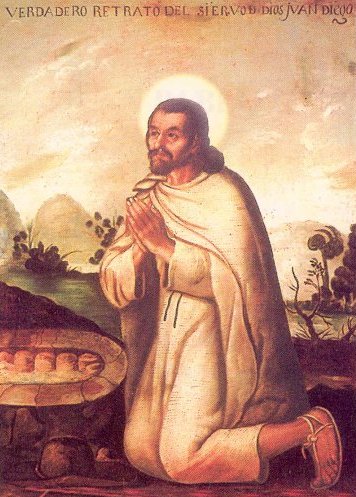 Juan Diego by Miguel Cabrera After the annals, a number of publications arose:[16] 1. Sánchez (1648) has a few scattered sentences noting Juan Diego's uneventful life at the hermitage in the sixteen years from the apparitions to his death. 2. The Huei tlamahuiçoltica (1649), at the start of the Nican Mopohua and at the end of the section known as the Nican Mopectana, there is some information concerning Juan Diego's life before and after the apparitions, giving many instances of his sanctity of life.[17] 3. Becerra Tanco (1666 and 1675). Juan Diego's town of origin, place of residence at the date of the apparitions, and the name of his wife are given at pages 1 and 2 of the 6th (Mexican) edition. His heroic virtues are eulogized at pages 40 to 42. Other biographical information about Juan Diego (with dates of his birth and death, of his wife's death, and of their baptism) is set out on page 50. On page 49 is the remark that Juan Diego and his wife remained chaste – at the least after their baptism – having been impressed by a sermon on chastity said to have been preached by Fray Toribio de Benevente (popularly known as Motolinía). 4. Slight and fragmented notices appear in the hearsay testimony (1666) of seven of the indigenous witnesses (Marcos Pacheco, Gabriel Xuárez, Andrés Juan, Juana de la Concepción, Pablo Xuárez, Martín de San Luis, and Catarina Mónica) collected with other testimonies in the Informaciones Jurídicas de 1666.[n] 5. Chapter 18 of Francisco de la Florencia's Estrella de el norte de México (1688) contains the first systematic account of Juan Diego's life, with attention given to some divergent strands in the tradition.[o] |
伝記 テペヤック丘のふもと 主要な情報源によると、フアン・ディエゴは1474年にクアウティトランで生まれ[e]、聖母マリアの出現時にはクアウティトランかトルペトラクに住んで いた[f]。彼は貧しいわけではなかったが、裕福でも有力でもなかった[g]。彼の宗教的熱意、素朴さ、聖母マリアと当初懐疑的だったフアン・デ・スマラ ガ司教に対する敬意に満ちた態度、病に苦しむ叔父への献身、そして聖母マリアの聖堂への献身は、いずれもこの伝承の中心をなすものであり、彼の特徴であ り、列聖に不可欠な基準である生命の聖性を証明するものである[h]。彼と彼の妻マリア・ルシア 聖母マリアと、当初は懐疑的だったフアン・デ・スマラガ司教に対する彼の敬虔な態度、病に苦しむ叔父への献身、そしてその後、聖母マリアの聖堂への献身な ど、伝承の中心となるこれらの特徴は、彼の特徴的な性格を表しており、列聖に不可欠な基準である生命の尊厳を証明している[h]。彼と彼の妻マリア・ルシ ア 、1524年にメキシコにやってきた12人のフランシスコ会宣教師の主要グループ到着後、最初に洗礼を受けた人々のうちの1組であった[i]。彼の妻は、 聖母の出現の2年前に亡くなったが、ある情報源(ルイス・ベセラ・タンコ、おそらく不注意によるものと思われる)によると、彼女は聖母の出現の2年後に亡 くなった[j]。彼らの夫婦関係については確かな伝統はない。洗礼を受けた後、夫妻は貞操に関する説教に感銘を受け、生涯独身で過ごすようになったという 説(a)と、結婚期間中ずっと独身で過ごしたという説(b)、さらに、夫妻とも処女として生涯を終えたという説(c)がある[k]。 )と(b)は、フアン・ディエゴが(おそらく別の妻との間に)息子をもうけたとする他の報告と必ずしも矛盾するわけではない[9]。この物語に欠かせない のはフアン・ディエゴの叔父フアン・ベルナルディーノであるが、彼とマリア・ルシア、そしてフアン・ディエゴの推定上の息子以外には、この伝承には家族に ついて言及されていない。少なくとも2人の18世紀の修道女が、フアン・ディエゴの子孫であると主張した[10]。出現の後、フアン・ディエゴはテペヤッ クの丘のふもとにつくられた隠者の庵の隣に住むことが許され[l]、その後は生涯を聖母マリアの願いに従って建てられた聖堂でマリアに仕えることに捧げ た。彼の死(74歳)の年は1548年とされている[12]。 主な情報源 先住民に対するテペヤックの聖母マリアの出現に関する最も古い記録は、この分野におけるメキシコを代表する学者ミゲル・レオン=ポルティージャ博士が、 「1556年よりもずっと前から、すでに多くの人々がテペヤックの礼拝堂に集まっていたこと、そしてフアン・ディエゴとトンアンツィン(グアダルペ)の幻 影の伝説がすでに広まっていたことを示している」[13]。一方、他の人々(米国の主要なナワトル語およびグアダルペ研究家を含む)は、そのような記録は 「数が少ない 、簡潔で曖昧であり、それ自体何年も後付けである」[14][m]。エスカラダ写本が16世紀に正確に作成されたとすれば、その写本には出現の1つを描写 し、フアン・ディエゴ(先住民の名前で特定されている)が1548年に「立派に」亡くなったと記されている。  ミゲル・カブレラ作のフアン・ディエゴ 年代記の発表後、多くの出版物が発行された:[16] 1.サンチェス(1648年)は、出現から彼の死までの16年間、隠遁生活を送ったフアン・ディエゴの平穏な生活を数行にわたって記している。 2. 『Huei tlamahuiçoltica』(1649年)では、『Nican Mopohua』の冒頭と『Nican Mopectana』として知られる章の終わりに、出現の前後におけるフアン・ディエゴの人生に関するいくつかの情報が記載されており、彼の神聖な生き方 について多くの例が挙げられている[17]。 3. Becerra Tanco』(1666年および1675年)。フアン・ディエゴの出身地、出現当時の居住地、妻の名前は、第6版(メキシコ版)の1ページ目と2ページ目 に記載されている。彼の英雄的美徳は40ページから42ページにかけて称賛されている。フアン・ディエゴに関するその他の伝記的情報(彼の生没年、妻の死 没年、洗礼日)は50ページに記載されている。49ページには、フアン・ディエゴと彼の妻は少なくとも洗礼後は貞操を守り続けた、という記述がある。これ は、トーリビオ・デ・ベネベント(通称モトリニア)神父が説いたとされる貞操についての説教に感銘を受けたためである。 4. 1666年の『Informaciones Jurídicas』に掲載された他の証言とともに収集された、先住民の目撃者7人(マルコス・パチェコ、ガブリエル・スアレス、アンドレス・フアン、フ アナ・デ・ラ・コンセプシオン、パブロ・スアレス、マルティン・デ・サン・ルイス、カタリナ・モニカ)による伝聞証言(1666年)には、断片的かつわず かな記述がある[n]。 5. フランシスコ・デ・ラ・フロレンシア著『メキシコ北部の星』(1688年)の第18章には、伝承の異なる部分にも注目しながら、フアン・ディエゴの人生について初めて体系的に記述されている。 |
Guadalupe narrative Engraving published in the book Happiness of Mexico in 1666 and 1669 (Spain) representing Juan Diego during the appearance of the Virgin of Guadalupe The following account is based on that given in the Nican mopohua which was first published in Nahuatl in 1649 as part of a compendious work known as the Huei tlamahuiçoltica. No part of that work was available in Spanish until 1895 when, as part of the celebrations for the coronation of the image of the Virgin of Guadalupe in that year, there was published a translation of the Nican Mopohua dating from the 18th century. This translation, however, was made from an incomplete copy of the original. Nor was any part of the Huei tlamahuiçoltica republished until 1929, when a facsimile of the original was published by Primo Feliciano Velásquez together with a full translation into Spanish (including the first full translation of the Nican Mopohua), since then the Nican Mopohua, in its various translations and redactions, has supplanted all other versions as the narrative of preference.[p] The precise dates in December 1531 (as given below) were not recorded in the Nican Mopohua, but are taken from the chronology first established by Mateo de la Cruz in 1660.[20] Juan Diego, as a devout neophyte, was in the habit of regularly walking from his home to the Franciscan mission station at Tlatelolco for religious instruction and to perform his religious duties. His route passed by the hill at Tepeyac. First apparition At dawn on Wednesday December 9, 1531, while on his usual journey, he encountered the Virgin Mary who revealed herself as the ever-virgin Mother of God and instructed him to request the bishop to erect a chapel in her honour so that she might relieve the distress of all those who call on her in their need. He delivered the request, but was told by the bishop (Fray Juan Zumárraga) to come back another day after he had had time to reflect upon what Juan Diego had told him. Second apparition Later the same day: returning to Tepeyac, Juan Diego encountered the Virgin again and announced the failure of his mission, suggesting that because he was "a back-frame, a tail, a wing, a man of no importance" she would do better to recruit someone of greater standing, but she insisted that he was whom she wanted for the task. Juan Diego agreed to return to the bishop to repeat his request. This he did on the morning of Thursday December 10, when he found the bishop more compliant. The bishop asked for a sign to prove that the apparition was truly of heaven. Third apparition Juan Diego returned immediately to Tepeyac. Upon encountering the Virgin Mary, he reported the bishop's request for a sign; she conceded to provide one on the following day (December 11).[q] 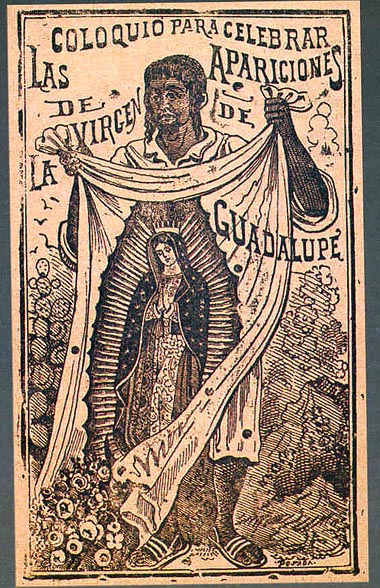 Juan Diego, hoja religiosa, etching by José Guadalupe Posada, n.d. but possibly pre-1895 By Friday December 11, Juan Diego's uncle Juan Bernardino had fallen sick and Juan Diego was obliged to attend to him. In the very early hours of Saturday, December 12, Juan Bernardino's condition had deteriorated overnight. Juan Diego set out to Tlatelolco to get a priest to hear Juan Bernardino's confession and minister to him on his death-bed. Fourth apparition In order to avoid being delayed by the Virgin and embarrassed at having failed to meet her on the Monday as agreed, Juan Diego chose another route around the hill, but the Virgin intercepted him and asked where he was going; Juan Diego explained what had happened and the Virgin gently chided him for not having had recourse to her. In the words which have become the most famous phrase of the Guadalupe event and are inscribed over the main entrance to the Basilica of Guadalupe, she asked: "¿No estoy yo aquí que soy tu madre?" ("Am I not here, I who am your mother?"). She assured him that Juan Bernardino had now recovered and she told him to climb the hill and collect flowers growing there. Obeying her, Juan Diego found an abundance of flowers unseasonably in bloom on the rocky outcrop where only cactus and scrub normally grew. Using his open mantle as a sack (with the ends still tied around his neck) he returned to the Virgin; she rearranged the flowers and told him to take them to the bishop. On gaining admission to the bishop in Mexico City later that day, Juan Diego opened his mantle, the flowers poured to the floor, and the bishop saw they had left on the mantle an imprint of the Virgin's image which he immediately venerated.[r] Fifth apparition The next day Juan Diego found his uncle fully recovered, as the Virgin had assured him, and Juan Bernardino recounted that he too had seen her, at his bed-side; that she had instructed him to inform the bishop of this apparition and of his miraculous cure; and that she had told him she desired to be known under the title of Guadalupe. The bishop kept Juan Diego's mantle first in his private chapel and then in the church on public display where it attracted great attention. On December 26, 1531, a procession formed for taking the miraculous image back to Tepeyac where it was installed in a small, hastily erected chapel.[s] In the course of this procession, the first miracle was allegedly performed when an indigenous man was mortally wounded in the neck by an arrow shot by accident during some stylized martial displays executed in honour of the Virgin. In great distress, the indigenous carried him before the Virgin's image and pleaded for his life. Upon the arrow being withdrawn, the victim made a full and immediate recovery.[t] |
グアダルーペの物語 1666年と1669年に『メキシコの幸福』(スペイン)で出版された版画。聖母グアダルーペの出現の際のフアン・ディエゴを描いたもの 以下の記述は、1649年にナワトル語で初めて出版された『Huei tlamahuiçoltica』という簡潔な作品の一部として発表された『Nican mopohua』に基づくものである。この作品のスペイン語訳は、1895年にグアダルーペの聖母の像の戴冠式を祝う行事の一環として、18世紀に書かれ た『ニカン・モポフア』の翻訳が出版されるまで、入手不可能であった。しかし、この翻訳は原本の不完全な写本から作成されたものであった。また、1929 年にプリモ・フェリシアーノ・ベラスケスが原本の複製を出版し、スペイン語への完全な翻訳(『ニカン・モポフア』の最初の完全な翻訳を含む)を出版するま で、『フエイ・トラマウィシオルティカ』のどの部分も再出版されなかった。それ以来、『ニカン・モポフア』は、さまざまな翻訳や編集を経て、他のすべての バージョンを凌駕する物語として好まれるようになった[p ] 1531年12月という正確な日付(下記参照)は『ニカン・モポフア』には記載されていなかったが、1660年にマテオ・デ・ラ・クルスが最初に確立した 年表から引用したものである[20]。 フアン・ディエゴは敬虔な新参者として、定期的に自宅からフランシスコ会の伝道所があるトラテロルコまで歩いて行き、宗教的な指導を受け、宗教的な義務を果たす習慣があった。彼の通る道はテペヤックの丘を通っていた。 最初の出現 1531年12月9日水曜日の夜明け、いつものように旅をしていた彼は、聖母マリアに遭遇した。聖母マリアは永遠の処女である神の母であると自らを明か し、マリアに助けを求める人々の苦しみを和らげるために、司教にマリアを称える礼拝堂を建てるよう求めるよう彼に指示した。彼はその願いを伝えたが、フア ン・ディエゴが話したことをよく考える時間が必要だと、司教(フアン・フマラガ)に言われた。 2度目の出現 同じ日の午後、テペヤックに戻ったフアン・ディエゴは再び聖母マリアに遭遇し、自分の使命が失敗に終わったことを告げ、自分は「背骨、尻尾、羽、取るに足 らない人間」なので、もっと地位の高い人物を選んだほうが良いと示唆した。しかし、聖母は彼がその任務にふさわしいと主張した。フアン・ディエゴは司教の もとに再び出向き、願いを再度伝えることに同意した。彼は12月10日(木)の朝、より協力的になった司教のもとに再び出向いた。司教は、その出現が本当 に天からのものであることを証明する印を求め、 3度目の出現 フアン・ディエゴはすぐにテペヤックに戻った。聖母マリアに遭遇したフアン・ディエゴは、司教の「印」を求める要求を報告し、マリアは翌日(12月11日)に印を与えることを承諾した[q]。  フアン・ディエゴ、宗教画、ホセ・グアダルペ・ポサダによるエッチング、年代不明だが1895年以前の可能性あり 12月11日(金)までに、フアン・ディエゴの叔父フアン・ベルナルディーノは病に倒れ、フアン・ディエゴは看病を余儀なくされた。12月12日(土)の 早朝、フアン・ベルナルディーノの容態は一晩で悪化した。フアン・ディエゴは、フアン・ベルナルディーノの告白を聞き、臨終の床で彼に奉仕する司祭を連れ てくるためにトラテロルコへと向かった。 4回目の出現 約束していた月曜日に聖母に会えずに恥をかくことを避けるため、フアン・ディエゴは丘の別のルートを選んだが、聖母に呼び止められ、どこへ行くのか尋ねら れた。フアン・ディエゴは起こったことを説明し、聖母は彼に、聖母に頼らなかったことを優しく叱責した。グアダルーペの出来事で最も有名な言葉であり、グ アダルーペ聖堂の正面入口に刻まれている言葉である。「私はここにいるではないか、あなたの母なのだから」(「Am I not here, I who am your mother?」)と彼女は言った。彼女はフアン・ベルナルディーノが回復したことを伝え、丘に登ってそこに咲く花を摘んできてほしいと彼に言った。彼女 の言うとおりにしたフアン・ディエゴは、サボテンや低木しか生えていない岩の突起に、季節外れの花が咲き乱れているのを発見した。彼はマントを袋代わりに 使い(両端は首に結んだまま)、聖母のもとに戻った。聖母は花を手に取り、司教のもとに持って行くよう彼に言った。その日のうちにメキシコシティの司教に 謁見したフアン・ディエゴはマントを開くと、花は床にこぼれ落ち、司教はマントに聖母の像の跡が残っているのを見て、すぐにそれを崇拝した。 5回目の出現 翌日、フアン・ディエゴは叔父が完全に回復したことを知った。回復していた。聖母マリアは彼にそう約束していたのだ。そして、フアン・ベルナルディーノ は、自分もベッドの側で聖母マリアを見たこと、聖母マリアは彼に、この出現と奇跡的な治癒について司教に報告するよう指示したこと、そして、聖母マリアは グアダルペの称号で知られることを望んでいると彼に告げたことを語った。司教はフアン・ディエゴのマントをまず私設礼拝堂に、次に一般公開されている教会 に保管し、人々の注目を集めた。1531年12月26日、奇跡の聖像をテペヤックに運ぶ行列が組まれ、急造の小さな礼拝堂に安置された[s]。行列の途 中、先住民が聖母マリアを称えるために行われた様式化された武術の演舞の最中に誤って放たれた矢で首に致命傷を負った際、最初の奇跡が起こったとされる。 苦しみ悶える先住民は、聖母マリア像の前に彼を運び、命乞いをした。矢が抜かれると、被害者はすぐに回復した。 |
Beatification and canonization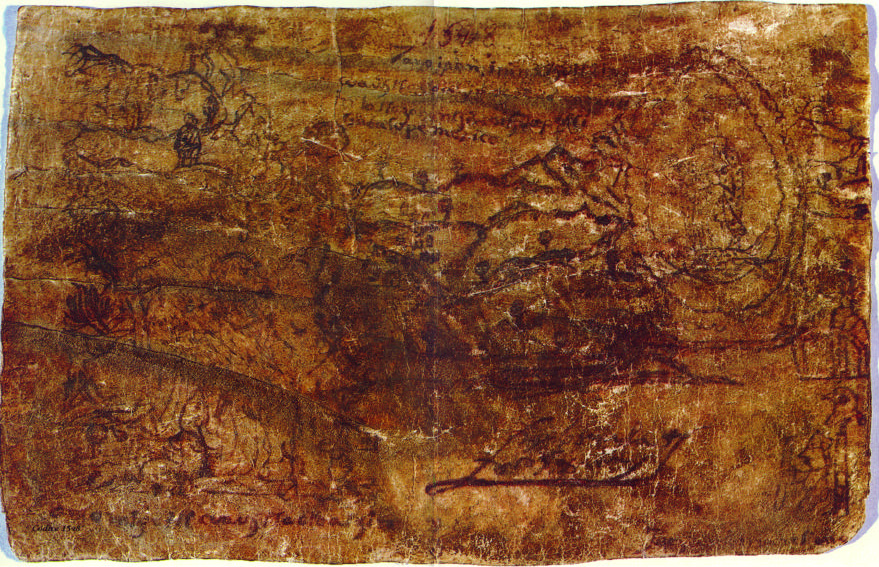 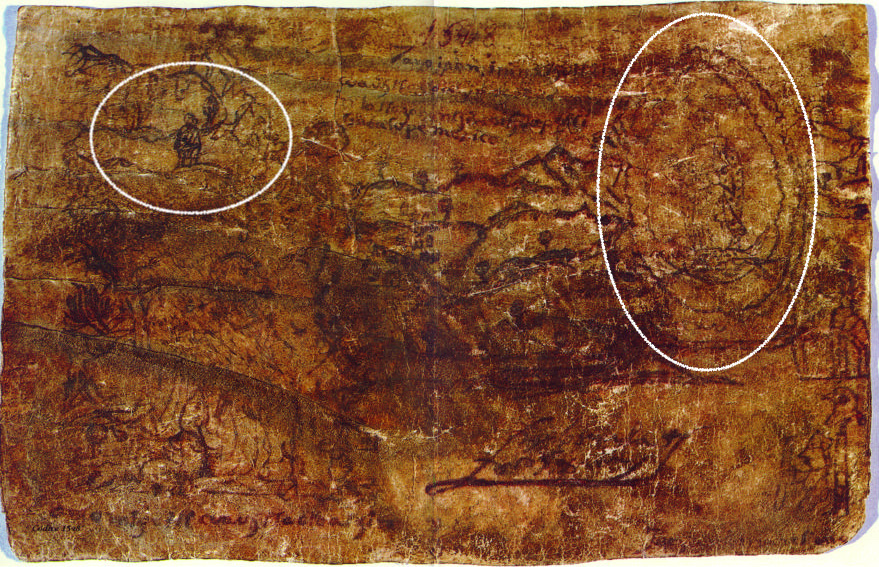 The Codex Escalada, dated from the middle of the sixteenth century The modern movement for the canonization of Juan Diego (to be distinguished from the process for gaining official approval for the Guadalupe cult, which had begun in 1663 and was realized in 1754)[26] can be said to have arisen in earnest in 1974 during celebrations marking the five hundredth anniversary of the traditional date of his birth,[u] but it was not until January 1984 that the then Archbishop of Mexico, Cardinal Ernesto Corripio Ahumada, named a Postulator to supervise and coordinate the inquiry, and initiated the formal process for canonization.[27][v] The procedure for this first, or diocesan, stage of the canonization process had recently been reformed and simplified by order of Pope John Paul II.[28] Beatification The diocesan inquiry was formally concluded in March 1986,[29] and the decree opening the Roman stage of the process was obtained on April 7, 1986. When the decree of validity of the diocesan inquiry was given on January 9, 1987, permitting the cause to proceed, the candidate became officially "venerable". The documentation (known as the Positio or "position paper") was published in 1989, in which year all the bishops of Mexico petitioned the Holy See in support of the cause.[30] Thereafter, there was a scrutiny of the Positio by consultors expert in history (concluded in January 1990) and by consultors expert in theology (concluded in March 1990), following which the Congregation for the Causes of Saints formally approved the Positio and Pope John Paul II signed the relative decree on April 9, 1990. The process of beatification was completed in a ceremony presided over by Pope John Paul II at the Basilica of Guadalupe on May 6, 1990, when December 9 was declared as the feast day to be held annually in honor of the candidate for sainthood, thereafter known as "Blessed Juan Diego Cuauthlatoatzin".[31] In accordance with the exceptional cases provided for by Urban VIII (1625, 1634) when regulating the procedures for beatification and canonization, the requirement for an authenticating miracle prior to beatification was dispensed with, on the grounds of the antiquity of the cult.[w] Miracles Not withstanding the fact that the beatification was "equipollent",[33] the normal requirement is that at least one miracle must be attributable to the intercession of the candidate before the cause for canonization can be brought to completion. The events accepted as fulfilling this requirement occurred between May 3 and May 9, 1990, in Querétaro, Mexico (precisely during the period of the beatification) when a 20-year-old drug addict named Juan José Barragán Silva fell 10 meters (33 ft) head first from an apartment balcony onto a cement area in an apparent suicide bid. His mother Esperanza, who witnessed the fall, invoked Juan Diego to save her son who had sustained severe injuries to his spinal column, neck and cranium (including intra-cranial hemorrhage). Barragán was taken to the hospital where he went into a coma from which he suddenly emerged on May 6, 1990. A week later he was sufficiently recovered to be discharged.[x] The reputed miracle was investigated according to the usual procedure of the Congregation for the Causes of Saints: first the facts of the case (including medical records and six eye-witness testimonies including those of Barragán and his mother) were gathered in Mexico and forwarded to Rome for approval as to sufficiency, which was granted in November 1994. Next, the unanimous report of five medical consultors (as to the gravity of the injuries, the likelihood of their proving fatal, the impracticability of any medical intervention to save the patient, his complete and lasting recovery, and their inability to ascribe it to any known process of healing) was received, and approved by the Congregation in February 1998. From there the case was passed to theological consultors who examined the nexus between (i) the fall and the injuries, (ii) the mother's faith in and invocation of Blessed Juan Diego, and (iii) the recovery, inexplicable in medical terms. Their unanimous approval was signified in May 2001.[34] Finally, in September 2001, the Congregation for the Causes of Saints voted to approve the miracle, and the relative decree formally acknowledging the events as miraculous was signed by Pope John Paul II on December 20, 2001.[35] The Catholic Church considers an approved miracle to be a divinely-granted validation of the results achieved by the human process of inquiry, which constitutes a cause for canonization. Canonization 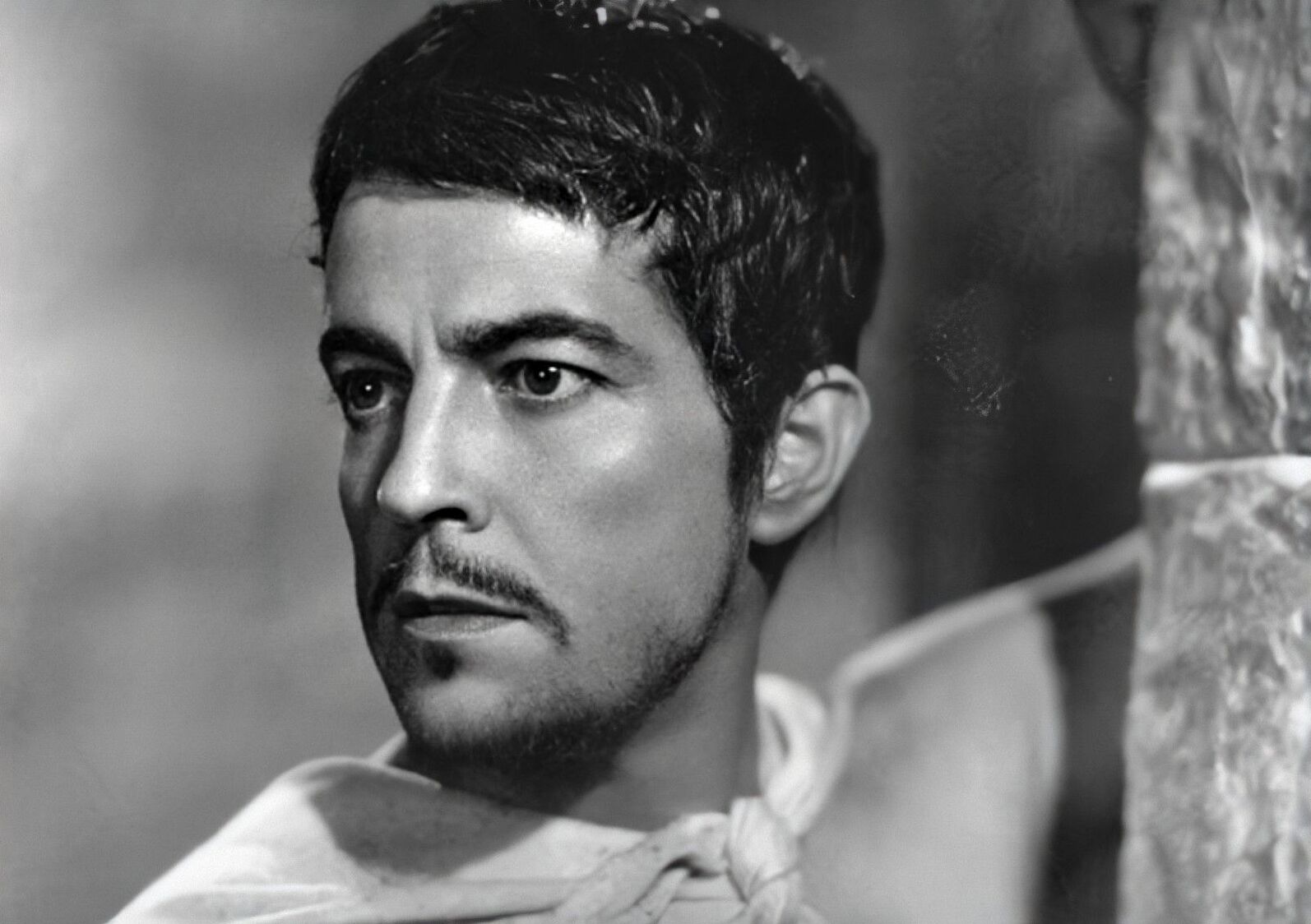 Ramon Novarro portraying Juan Diego in The Saint Who Forged a Country (1942) As not infrequently happens, the process for Diego's canonization was subject to delays and obstacles. In this case, certain interventions were initiated through unorthodox routes in early 1998 by a small group of ecclesiastics in Mexico (then or formerly attached to the Basilica of Guadalupe) pressing for a review of the sufficiency of the historical investigation.[y] This review, which not infrequently occurs in cases of equipollent beatifications,[36] was entrusted by the Congregation for the Causes of Saints (acting in concert with the Archdiocese of Mexico) to a special Historical Commission headed by the Mexican ecclesiastical historians Fidel González, Eduardo Chávez Sánchez, and José Guerrero. The results of the review were presented to the Congregation for the Causes of Saints on October 28, 1998, which unanimously approved them.[37][38][z] In the following year, the Commission's work was published in book form by González, Chávez Sánchez and Guerrero under the title Encuentro de la Virgen de Guadalupe y Juan Diego. This served, however, only to intensify the protests of those who were attempting to delay or prevent the canonization, and the arguments over the quality of the scholarship displayed by the Encuentro were conducted first in private and then in public.[aa] The main objection against the Encuentro was that it failed adequately to distinguish between the antiquity of the cult and the antiquity of the tradition of the apparitions; the argument on the other side was that every tradition has an initial oral stage where documentation will be lacking. The authenticity of the Codex Escalada and the dating of the Nican Mopohua to the 16th or 17th century have a material bearing on the duration of the oral stage.[ab] Final approbation of the decree of canonization was signified in a consistory held on February 26, 2002, at which Pope John Paul II announced that the rite of canonization would take place in Mexico at the Basilica of Guadalupe on July 31, 2002,[40] as indeed occurred.[41] |
列福と列聖  16世紀中期の『エスカラダ写本』 フアン・ディエゴの列聖を求める近代的な動き(1663年に始まり1754年に実現したグアダルーペ崇拝の公式承認を求めるプロセスとは区別される) [26]は、 1974年、彼の生誕500年を記念する祝典の際に本格的に始まったが[u]、1984年1月になってようやく、当時のメキシコ大司教エルネスト・コリピ オ・アウマダ枢機卿が調査を監督・調整する代理人(Postulator)を任命し、正式な列聖手続きを開始した[27][v]。この最初の、あるいは教 区段階の列聖手続きは、最近、教皇ヨハネ・パウロ2世の命令により改革され、簡素化されたばかりであった[28]。 列福 教区調査は1986年3月に正式に終了し[29]、ローマ段階の開始令は1986年4月7日に下された。1987年1月9日に教区調査の有効性が認めら れ、手続きを進めることが許可されると、候補者は正式に「尊敬すべき人物」となった。1989年にポジティオ(Positio)と呼ばれる文書(「立場に 関する文書」)が公表され、同年、メキシコの司教全員が教皇庁にこの聖人の列福を支持する嘆願書を提出した[30]。その後、ポジティオは、歴史に精通し た顧問団( 1990年1月に終了)、神学に精通した顧問による審査(1990年3月に終了)が行われ、その後、列聖聖人省が正式にポジティオを承認し、1990年4 月9日に教皇ヨハネ・パウロ2世が関連法令に署名した。列福のプロセスは、1990年5月6日にグアダルーペ聖堂で教皇ヨハネ・パウロ2世が主宰する式典 で完了し、12月9日が列聖候補者を称えるために毎年祝われる祝日として宣言された。以後、この人物は「福者フアン・ディエゴ・クアウトラトアツィン」と して知られるようになった[31]。ウルバヌス8世(1625年、16 34)が、列聖と聖人認定の手続きを規定した際に定めた例外的な規定に従い、列聖前の奇跡の証明要件は、その崇拝の古さを理由に免除された[w]。 奇跡 列聖が「同等の価値を持つ」[33]という事実にもかかわらず、通常の要件として、少なくとも1つの奇跡が候補者の取り成しによるものであることが証明さ れなければ、列聖の手続きを完了することはできない。この要件を満たすものとして認められた出来事は、1990年5月3日から5月9日の間、メキシコのケ レタロで起こった(正確には列福の期間中の出来事である)。20歳の薬物中毒患者、フアン・ホセ・バラガン・シルバが、アパートのバルコニーから10メー トル下のコンクリートの地面に向かって、頭から落下するという自殺未遂を起こしたのである。落下を目撃した彼の母親エスペランサは、背骨、首、頭蓋骨(頭 蓋内出血を含む)に重傷を負った息子を救うためにフアン・ディエゴに祈りを捧げた。バラガンは病院に搬送され、そこで昏睡状態に陥ったが、1990年5月 6日に突然目を覚ました。1週間後、彼は十分に回復し、退院することができた[x]。この奇跡は、聖人列聖のための聖省(Congregation for the Causes of Saints)の通常の手続きに従って調査された。まず、この事件に関する事実(医療記録、バラガンと彼の母親を含む6人の目撃証言を含む)がメキシコで 集められ、十分な証拠として承認を得るためにローマに送られた。次に、5人の医学顧問による全会一致の報告書(怪我の重大性、致命傷となる可能性、患者を 救うための医療介入の非現実性、患者の完全かつ持続的な回復、そして既知の治癒プロセスに起因するものではないという見解)が受理され、1998年2月に 聖人列福委員会により承認された。その後、この件は神学顧問団に引き継がれ、(i) 落下と負傷、(ii) 母親の聖フアン・ディエゴへの信仰と祈願、(iii) 医学的には説明のつかない回復、の関連性が検討された。2001年5月、神学顧問団は満場一致でこれを承認した[34]。そして2001年9月、列聖省は 奇跡を承認することを投票で決定し、奇跡として正式に認定する関連法令は、 2001年12月20日にヨハネ・パウロ2世によって署名された[35]。カトリック教会は、奇跡が承認されたことを、人間の探究のプロセスによって得ら れた結果を神が認めたものと見なし、列聖の理由となるとしている。 列聖  『国を造った聖人』(1942年)でフアン・ディエゴを演じたラモン・ノヴァロ しばしば起こるように、ディエゴの列聖手続きは遅れや障害に直面した。このケースでは、1998年初頭に、メキシコ(当時またはかつてグアダルーペ大聖堂 に所属していた)の聖職者からなる少人数のグループが、歴史的調査の妥当性についての再調査を要求するという、正統的ではないルートを通じた介入を開始し た[y]。同種の列福の場合にしばしば行われる[36]この調査は、列聖省(メキシコ大司教区と協力)が、メキシコの教会史家であるフィデル・ゴンサレ ス、エドゥアルド・チャベス・サンチェス、ホセ・ゲレロが率いる特別歴史委員会に委託した。 審査結果は1998年10月28日に聖人列福委員会に提出され、全会一致で承認された[37][38][z]。翌年、ゴンサレス、チャベス・サンチェス、 ゲレロが『グアダルペの聖母とファン・ディエゴの出会い』というタイトルで委員会の成果を書籍として出版した。しかし、これは、列聖を遅らせたり阻止しよ うとしている人々の抗議を激化させるだけだった。エンクエントロで提示された学術的資質の是非をめぐる議論は、まず非公開で、次に公開で行われた [aa]。エンクエントロに対する主な異論は、崇拝の古さと出現の伝統の古さを適切に区別できていないというものであった。反対側の議論は、あらゆる伝統 には、文書化が不十分な初期の口承段階があるというものだった。『エスカラダ法典』の真正性と『ニカン・モポフア』の16世紀または17世紀の年代は、口 承段階の期間に重大な影響を及ぼす[ab]。列聖令の最終承認は、2002年2月26日に開かれたコンシステリアで表明された。 2002年2月26日に開かれた会議で、教皇ヨハネ・パウロ2世は、列聖式が2002年7月31日にメキシコのグアダルーペ大聖堂で行われると発表した [40]。実際にその通りになった[41]。 |
| Historicity debate This article uses texts from within a religion or faith system without referring to secondary sources that critically analyze them. Please help improve this article. (May 2018) (Learn how and when to remove this message) The debate over the historicity of St. Juan Diego and, by extension, of the apparitions and the miraculous image, begins with a contemporary to Juan Diego, named Antonio Valeriano. Valeriano was one of the best Indian scholars at the College of Santiago de Tlatelolco at the time that Juan Diego was alive; he was proficient in Spanish as well as Latin, and a native speaker of Nahuatl. He knew Juan Diego personally [42][additional citation(s) needed] and wrote his account of the apparitions on the basis of Juan Diego's testimony.[disputed (for: Later-dated source.) – discuss] A copy of Valeriano's document was rediscovered by Jesuit Father Ernest J. Burrus in the New York Public Library.[42][43] 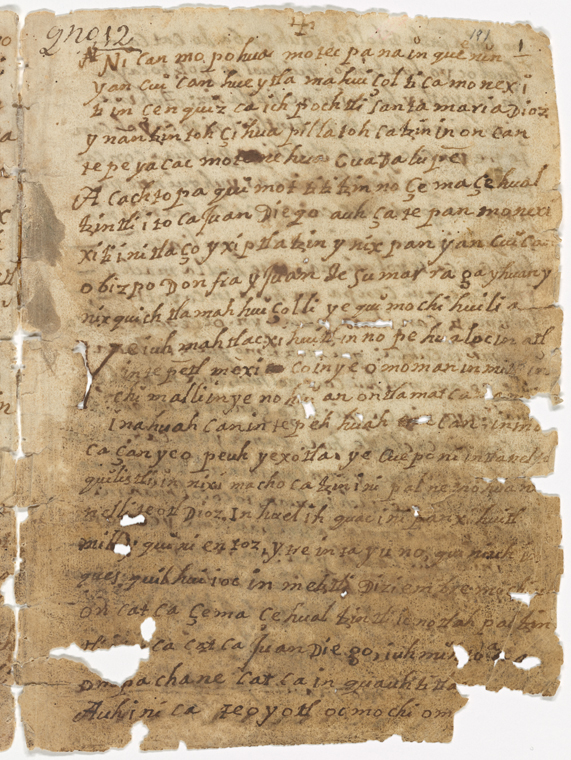 Copy of Huei tlamahuiçoltica preserved at the New York Library Some objections to the historicity of the Guadalupe event, grounded in the silence of the very sources which – it is argued – are those most likely to have referred to it, were raised as long ago as 1794 by Juan Bautista Muñoz and were expounded in detail by Mexican historian Joaquín García Icazbalceta in a confidential report dated 1883 commissioned by the then Archbishop of Mexico and first published in 1896. The silence of the sources is discussed in a separate section, below. The most prolific contemporary protagonist in the debate is Stafford Poole, a historian and Vincentian priest in the United States of America, who questioned the integrity and rigor of the historical investigation conducted by the Catholic Church in the interval between Juan Diego's beatification and his canonization. For a brief period in mid-1996, a vigorous debate was ignited in Mexico when it emerged that Guillermo Schulenburg, who at that time was 80 years of age, did not believe that Juan Diego was a historical person. That debate, however, was focused not so much on the weight to be accorded to the historical sources which attest to Juan Diego's existence as on the propriety of Abbot Schulenburg retaining an official position which – so it was objected – his advanced age, allegedly extravagant life-style and heterodox views disqualified him from holding. Abbot Schulenburg's resignation (announced on September 6, 1996) terminated that debate.[44] The scandal, however, re-erupted in January 2002 when the Italian journalist Andrea Tornielli published in the Italian newspaper Il Giornale a confidential letter dated December 4, 2001, which Schulenburg (among others) had sent to Cardinal Sodano, the then Secretary of State at the Vatican, reprising reservations over the historicity of Juan Diego.[45] Partly in response to these and other issues, the Congregation for the Causes of Saints (the body within the Catholic Church with oversight of the process of approving candidates for sainthood) reopened the historical phase of the investigation in 1998, and in November of that year declared itself satisfied with the results.[46] Following the canonization in 2002, the Catholic Church considers the question closed. |
歴史性に関する議論 この記事は、批判的に分析した二次資料を参照することなく、宗教または信仰体系内のテキストを使用しています。この記事の改善にご協力ください。(2018年5月) (削除方法と時期について) 聖フアン・ディエゴ、ひいては聖母マリアの出現と奇跡の像の歴史性についての議論は、フアン・ディエゴと同時代のアントニオ・バレリアーノから始まる。バ レリアーノは、フアン・ディエゴが生きていた当時、サンティアゴ・デ・トラテロルコ大学で最高のインディアン学者の一人であった。スペイン語とラテン語に 堪能で、ナワトル語を母国語としていた。彼はフアン・ディエゴと個人的に知り合い[42][追加の引用が必要]、フアン・ディエゴの証言に基づいて出現の 記述を書いた[議論の余地あり(根拠:日付の古い情報源) - 議論]。  ニューヨーク図書館に保存されているフエイ・トラマウィシコルティカの写し ニューヨーク図書館 グアダルーペの出来事の史実性に対する異論は、それについて言及した可能性が最も高いとされる情報源が沈黙していることに端を発しており、1794年には フアン・バウティスタ・ムニョスによってすでに提起されていた。1883年に当時のメキシコ大司教の依頼で作成された極秘報告書の中で、メキシコの歴史家 ホアキン・ガルシア・イカスバルセタが詳細に論じている。資料の沈黙については、以下の別項で議論する。この論争において最も活発に活動している現代の論 客は、アメリカ合衆国の歴史学者であり、ヴィンセンティアン会の司祭でもあるスタッフォード・プールである。彼は、フアン・ディエゴの列福と列聖の間の期 間にカトリック教会が行った歴史調査の完全性と厳密性を疑問視している。 1996年半ば、当時80歳だったギジェルモ・シュレンバーグ神父がフアン・ディエゴが実在の人物であるとは信じていないことが明らかになり、メキシコで は短期間ではあるが激しい論争が巻き起こった。しかし、この論争は、フアン・ディエゴの存在を証明する歴史的資料の信憑性よりも、シュレンブルク修道院長 が公職に就くことの妥当性、つまり、彼の高齢、贅沢な生活スタイル、異端的な見解により、その地位に就く資格がないという批判に焦点を当てていた。シュレ ンブルク修道院長の辞任(1996年9月6日発表)により、この論争は終結した[44]。しかし、2002年1月、イタリア人ジャーナリストのアンドレ ア・トルニエッリが、2001年12月4日付のソダーノ枢機卿(当時バチカン市国国務長官)宛ての極秘文書をイタリアの新聞「イル・ジョルナーレ」に掲載 し、このスキャンダルが再燃した。 フアン・ディエゴの歴史性に対する疑念を表明していた。 これらの問題やその他の問題への反応もあり、列聖聖人委員会(列聖候補者の承認プロセスを監督するカトリック教会内の機関)は1998年に調査の史実調査 段階を再開し、同年11月にその結果に満足していると発表した。[46] 2002年の列聖を受けて、カトリック教会はこの問題を終了したとみなしている。 |
| Earliest published narrative sources for the Guadalupe event Sánchez, Imagen de la Virgen María The first written account to be published of the Guadalupe event was a theological exegesis hailing Mexico as the New Jerusalem and correlating Juan Diego with Moses at Mount Horeb and the Virgin with the mysterious Woman of the Apocalypse in chapter 12 of the Book of Revelation. Entitled Imagen de la Virgen Maria, Madre de Dios de Guadalupe, Milagrosamente aparecida en la Ciudad de México (Image of the Virgin Mary, Mother of God of Guadalupe, who miraculously appeared in the City of Mexico), it was published in Spanish in Mexico City in 1648 after a prolonged gestation.[ac] The author was a Mexican-born Spanish priest, Miguel Sánchez, who asserted in his introduction (Fundamento de la historia) that his account of the apparitions was based on documentary sources (few, and only vaguely alluded to) and on an oral tradition which he calls "antigua, uniforme y general" (ancient, consistent and widespread). The book is structured as a theological examination of the meaning of the apparitions to which is added a description of the tilma and of the sanctuary, accompanied by a description of seven miracles associated with the cult, the last of which related to a devastating inundation of Mexico City in the years 1629–1634. Although the work inspired panegyrical sermons preached in honour of the Virgin of Guadalupe between 1661 and 1766, it was not popular and was rarely reprinted.[48][49] Shorn of its devotional and scriptural matter and with a few additions, Sánchez' account was republished in 1660 by a Jesuit priest from Puebla named Mateo de la Cruz, whose book, entitled Relación de la milagrosa aparición de la Santa Virgen de Guadalupe de México ("Account of the miraculous apparition of the Holy Image of the Virgin of Guadalupe of Mexico"), was soon reprinted in Spain (1662), and served greatly to spread knowledge of the cult.[50] Nican Mopohua 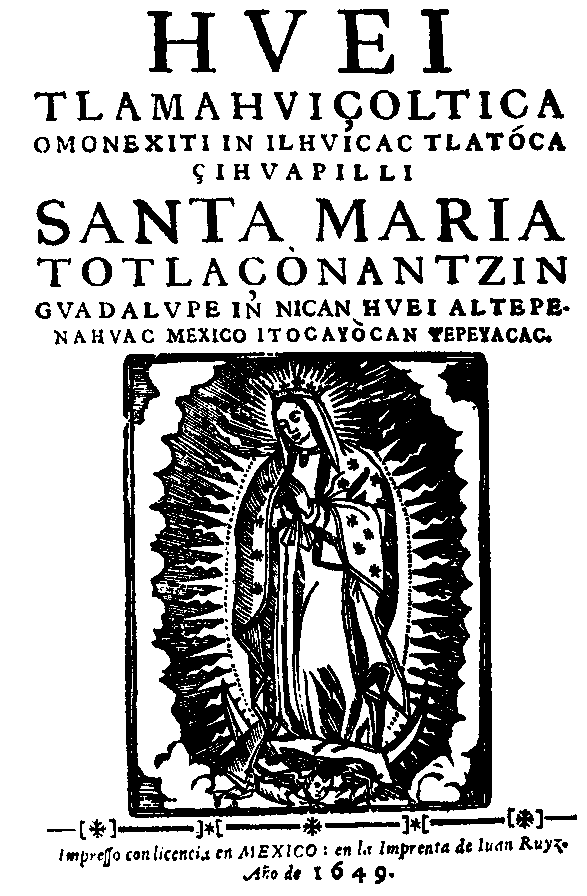 The first page of the Huei tlamahuiçoltica The second-oldest published account is known by the opening words of its long title: Huei tlamahuiçoltica ("The great event"). It was published in Nahuatl by the then vicar of the hermitage at Guadalupe, Luis Lasso de la Vega, in 1649. In four places in the introduction, he announced his authorship of all or part of the text, a claim long received with varying degrees of incredulity because of the text's consummate grasp of a form of classical Nahuatl dating from the mid-16th century, the command of which Lasso de la Vega neither before nor after left any sign.[51] The complete work comprises several elements including a brief biography of Juan Diego and, most famously, a highly wrought and ceremonious account of the apparitions known from its opening words as the Nican Mopohua ("Here it is told"). Despite the variations in style and content which mark the various elements, an exclusively textual analysis by three American investigators published in 1998 provisionally (a) assigned the entire work to the same author or authors, (b) saw no good reason to strip de la Vega of the authorship role he had claimed, and (c) of the three possible explanations for the close link between Sánchez's work and the Huei tlamahuiçoltica, opted for a dependence of the latter upon the former which, however, was said to be indicated rather than proved. Whether the role to be attributed to Lasso de la Vega was creative, editorial or redactional remains an open question.[ad] Nevertheless, the broad consensus among Mexican historians (both ecclesiastical and secular) has long been, and remains, that the Nican Mopohua dates from as early as the mid-16th century and (so far as it is attributed to any author) that the likeliest hypothesis as to authorship is that Antonio Valeriano wrote it, or at least had a hand in it.[ae]The Nican Mopohua was not reprinted or translated in full into Spanish until 1929, although an incomplete translation had been published in 1895 and Becerra Tanco's 1675 account (see next entry) has close affinities with it.[55] Becerra Tanco, Felicidad de México The third work to be published was written by Luis Becerra Tanco who professed to correct some errors in the two previous accounts. Like Sánchez a Mexican-born Spanish diocesan priest, Becerra Tanco ended his career as professor of astronomy and mathematics at the Royal and Pontifical University of Mexico.[56][57][58] As first published in Mexico City in 1666, Becerra Tanco's work was entitled Origen milagroso del Santuario de Nuestra Señora de Guadalupe ("Miraculous origin of the Sanctuary of Our Lady of Guadalupe") and it gave an account of the apparitions mainly taken from de la Cruz' summary (see entry [1], above).[59] The text of the pamphlet was incorporated into the evidence given to a canonical inquiry conducted in 1666, the proceedings of which are known as the Informaciones Jurídicas de 1666 (see next entry). A revised and expanded edition of the pamphlet (drawing more obviously on the Nican Mopohua) was published posthumously in 1675 as Felicidad de Mexico and again in 1685 (in Seville, Spain). Republished in Mexico in 1780 and (as part of a collection of texts) republished in Spain in 1785, it became the preferred source for the apparition narrative until displaced by the Nican Mopohua which gained a new readership from the Spanish translation published by Primo Velázquez in Mexico in 1929 (becoming thereafter the narrative of choice).[60] Becerra Tanco, as Sánchez before him, confirms the absence of any documentary source for the Guadalupe event in the official diocesan records, and asserts that knowledge of it depends on the oral tradition handed on by the natives and recorded by them first in paintings and later in an alphabetized Nahuatl.[61] More precisely, Becerra Tanco claimed that before 1629 he had himself heard "cantares" (or memory songs) sung by the natives at Guadalupe celebrating the apparitions, and that he had seen among the papers of Fernando de Alva Ixtlilxochitl (1578?–1650) (i) a mapa (or pictographic codex) which covered three centuries of native history, ending with the apparition at Tepeyac, and (ii) a manuscript book written in alphabetized Nahuatl by an Indian which described all five apparitions.[62] In a separate section entitled Testificación he names five illustrious members of the ecclesiastical and secular elite from whom he personally had received an account of the tradition – quite apart from his Indian sources (whom he does not name).[63] Informaciónes Jurídicas de 1666 The fourth in time (but not in date of publication) is the Informaciones Jurídicas de 1666 already mentioned. As its name indicates, it is a collection of sworn testimonies. These were taken down in order to support an application to Rome for liturgical recognition of the Guadalupe event. The collection includes reminiscences in the form of sworn statements by informants (many of them of advanced age, including eight Indians from Cuauhtitlán) who claimed to be transmitting accounts of the life and experiences of Juan Diego which they had received from parents, grandparents or others who had known or met him. The substance of the testimonies was reported by Florencia in chapter 13 of his work Estrella de el Norte de México (see next entry). Until very recently the only source for the text was a copy dating from 1737 of the translation made into Spanish which itself was first published in 1889.[64][65] An original copy of the translation (dated April 14, 1666) was discovered by Eduardo Chávez Sánchex in July 2001 as part of his researches in the archives of the Basilica de Guadalupe.[66] de Florencia, Estrella de el Norte de México The last to be published was Estrella de el Norte de México by Francisco de Florencia, a Jesuit priest. This was published in Mexico in 1688 and then in Barcelona and Madrid, Spain, in 1741 and 1785, respectively.[af][68] Florencia, while applauding Sánchez's theological meditations in themselves, considered that they broke the thread of the story. Accordingly, his account of the apparitions follows that of Mateo de la Cruz's abridgement.[69] Although he identified various Indian documentary sources as corroborating his account (including materials used and discussed by Becerra Tanco, as to which see the preceding entry), Florencia considered that the cult's authenticity was amply proved by the tilma itself,[70] and by what he called a "constant tradition from fathers to sons ... so firm as to be an irrefutable argument".[71] Florencia had on loan from the famous scholar and polymath Carlos de Sigüenza y Góngora two such documentary sources, one of which – the antigua relación (or, old account) – he discussed in sufficient detail to reveal that it was parallel to but not identical with any of the materials in the Huei tlamahuiçoltica. So far as concerns the life of Juan Diego (and of Juan Bernardino) after the apparitions, the antigua relación reported circumstantial details which embellish rather than add to what was already known.[72] The other documentary source of Indian origin in Florencia's temporary possession was the text of a memory song said to have been composed by Don Placido, lord of Azcapotzalco, on the occasion of the solemn transfer of the Virgin's image to Tepeyac in 1531 – this he promised to insert later on in his history, but never did.[ag] |
グアダルーペの出来事の最も古い出版された物語的資料 サンチェス著『マリアの聖母の像 グアダルーペの出来事の最初の出版された記述は、メキシコを新しいエルサレムとして称賛し、ホレブ山でのモーゼと黙示録第12章の黙示録の神秘的な女とを 関連づける神学的な解釈であった。「グアダルペの聖母マリア、神の母マリア、奇跡的にメキシコシティに現れたマリアの像」と題されたこの本は、長い準備期 間を経て1648年にメキシコシティでスペイン語で出版された[ac]。著者はメキシコ生まれのスペイン人司祭ミゲル・サンチェスで、序文 (Fundamento de la historia)で、出現の記述は(数が少なく、曖昧にしか言及されていない)文書資料と、彼が「antigua, uniforme y general」(古代、一貫性があり、広範囲に普及している)と呼ぶ口承伝承に基づいていると主張している。この本は、聖像出現の意味を神学的に考察す る構成となっており、ティルマと聖域の説明に加え、この信仰と関連のある7つの奇跡の説明も付されている。最後の奇跡は、1629年から1634年にかけ てメキシコシティを襲った壊滅的な洪水に関するものである。この本は、1661年から1766年にかけてグアダルペの聖母マリアを称える賛美の説教の題材 となったが、人気が出ず、再版されることはほとんどなかった[48][49]。信仰や聖書の記述を削除し、いくつかの内容を追加したサンチェスの記述は、 プエブラ出身のイエズス会の司祭マテオ・デ・ラ・クルスが1660年に再出版した。彼の著書『Relación de la milagrosa aparición de la 『メキシコ・グアダルペの聖母』(「メキシコ・グアダルペの聖母の聖像の奇跡的な出現の記録」)は、まもなくスペインでも再版され(1662年)、この崇 拝に関する知識の普及に大きく貢献した[50]。 『ニカン・モポフア』  『ウエイ・トラマウィソルティカ』の最初のページ 出版された記録の中で2番目に古いものは、長いタイトルの冒頭で知られている。1649年、グアダルーペの隠遁所の当時の司祭であったルイス・ラッソ・ デ・ラ・ベガによってナワトル語で出版された。序文の4か所において、彼はこの文章のすべてまたは一部を自分が書いたと明言している。この文章は16世紀 中期の古典ナワトル語を完璧に理解しており、ラッソ・デ・ラ・ベガはその文章を完全に理解していたため、この主張は長い間、さまざまなレベルで疑いの目を 向けられてきた。ラソ・デ・ラ・ベガは、その前にも後も、その証拠を残さなかった[51]。この作品は、フアン・ディエゴの簡単な伝記や、最も有名な「ニ カン・モポフア」(「ここに語られる」)として冒頭で知られる、非常に精巧で厳粛な出現の記述など、いくつかの要素から構成されている。各要素のスタイル や内容には違いが見られるが、1998年に発表された3人のアメリカ人研究者によるテキストのみの分析では、暫定的に(a)この作品をすべて同じ著者また は著者たちが書いたものと見なし、(b)デ・ラ・ベガが主張していた著者の役割を剥奪する十分な理由はないと結論づけ、(c)サンチェスの作品とフエイ・ トラマヒュイコルティカの密接な関係について考えられる3つの説明のうち、後者が前者に依存しているとする説を採用した。ただし、これは証明されたという よりも示唆されたものであるとされている。 主張していたヒップの役割を奪う正当な理由はないと結論付け、(c) サンチェスの作品とHuei tlamahuiçolticaの密接な関係について考えられる3つの説明のうち、後者が前者に依存しているという説を採用した。ただし、これは証明され たというよりも示唆されたものであるとされている。ラッソ・デ・ラ・ベガが果たした役割が、創造的、編集的、または校正的であったかどうかは、依然として 未解決の問題である[ad]。しかし、メキシコの歴史家(教会関係者および世俗関係者)の間で広く認められているのは、ニカン・モポフアは16世紀半ばに はすでに存在していたという見解であり、 (作者として考えられるのは)アントニオ・バレリアーノが書いたか、少なくともそれに手を加えたという説が最も有力である[ae]。ニカン・モポフアは、 1895年に不完全な翻訳が出版されていたものの、1929年までスペイン語に全文が再版されたり翻訳されたりすることはなかった。 95年に不完全な翻訳が出版され、ベセラ・タンコの1675年の記述(次の項目参照)はそれに近い内容となっている[55]。 ベセラ・タンコ『メキシコの幸福』 3番目に出版された作品は、ルイス・ベセラ・タンコによって書かれたもので、彼は2つの以前の記述の誤りを訂正すると主張していた。メキシコ生まれのスペ イン人司祭サンチェスと同様、ベセラ・タンコはメキシコ王立教皇大学の天文学と数学の教授としてその生涯を終えた[56][57][58]。1666年に メキシコシティで初めて出版されたベセラ・タンコの著作は、『グアダルペの聖母聖域の奇跡的な起源』(Origen milagroso del Santuario de Nuestra Señora de Guadalupe)と題され、主にデ・ラ・クルスの要約(上記の項目[1]を参照)から引用した出現の記述が掲載されていた[59]。グアダルペの聖母 の聖域の奇跡的な起源」)と題され、主にデ・ラ・クルスの要約(上記の項目[1]を参照)から引用された出現の記述が掲載されていた[59]。この小冊子 の文章は、1666年に実施された教会法上の調査の証拠として提出され、その手続きは「1666年の司法情報」(次の項目を参照)として知られている。こ のパンフレットは、ニカン・モポフアを参考にさらに改訂・拡大され、1675年に『フェリシダッド・デ・メヒコ』として死後出版された。1780年にメキ シコで再出版され、(テキスト集の一部として)1785年にスペインで再出版された後、この本は聖母マリア出現の物語の最も好まれる情報源となった。しか し、1929年にプリモ・ベラスケスがメキシコで出版したスペイン語訳により、新たな読者層を獲得した『ニカン・モポフア』にその座を奪われた(その後、 この本は最も好まれる物語となった)。 )[60] ベセラ・タンコは、サンチェス同様、グアダルペの出来事の公式教区記録に文書資料が存在しないことを確認し、その知識は先住民から口頭で伝えられ、最初に 絵画で、後にアルファベット化されたナワトル語で記録されたものによると主張している[61]。より正確には、ベセラ・タンコは、1 629年以前、彼はグアダルーペで聖母マリアの出現を祝うために先住民が歌う「カンターレス」(記憶の歌)を自ら耳にし、フェルナンド・デ・アルヴァ・イ クストリルコチル(1578年?–1650年)の書類の中に、(i) 先住民の3世紀にわたる歴史を網羅し、テペヤックの聖母マリアの出現で終わる「地図」(絵文字の写本)、 テペヤックでの出現で終わっている。また、(ii) 5つの出現のすべてについて、アルファベット表記のナワトル語で書かれた、インディアンによる手書きの原稿本も存在していた[62]。 Testificación(証言)と題された別のセクションでは、教会と世俗のエリート層から5人の著名な人物が挙げられており、その人物たちから、彼 は個人的に伝承について話を聞いた。これは、インディアンからの情報源(名前は挙げられていない)とはまったく別である[63]。 1666年の法廷情報 4番目に登場するのは(出版日は異なるが)、すでに触れた1666年の『Informaciones Jurídicas de 1666』である。その名の通り、宣誓証言を集めたものである。これらは、グアダルペの出来事を典礼としてローマに承認してもらうための申請を裏付けるた めに記録された。このコレクションには、情報提供者(その多くは高齢で、クアウティトラン出身の8人のインディアンを含む)が宣誓証言した回想録が含まれ ている。情報提供者たちは、両親や祖父母、あるいは彼を知っていたり会ったことのある人々から聞いた、フアン・ディエゴの人生や経験に関する話を伝えたと 主張している。証言の要点は、フローレンシアが著書『Estrella de el Norte de México』の第13章で報告している(次の項目参照)。ごく最近まで、このテキストの唯一の資料は、1737年にスペイン語に翻訳されたもののコピー であり、そのスペイン語訳は1889年に初めて出版されたものであった[64][65]。翻訳のオリジナルコピー(1666年4月14日付)は、 2001年7月、エドゥアルド・チャベス・サンチェスがグアダルーペ聖堂の文書館で研究していた際に、この翻訳のオリジナル(1666年4月14日付)を 発見した[66]。 フランシスコ・デ・フローレンシア著『メキシコの北の星 最後に出版されたのは、イエズス会の司祭フランシスコ・デ・フローレンシア著『メキシコの北の星』であった。これは1688年にメキシコで、1741年に スペインのバルセロナで、1785年にマドリードで出版された。[af][68] フローレンシアは、サンチェスの神学的な考察自体を称賛しながらも、それが物語の筋を壊していると考えていた。したがって、彼の霊現の記述はマテオ・デ・ ラ・クルスの要約に続くものである[69]。彼は、彼の記述を裏付けるさまざまなインディアン文献資料を特定したが(ベセラ・タンコが使用し、議論した資 料については、前の項目を参照)、フロレンシアは、その教団の信憑性はティルマ自体によって十分に証明されていると考え、また、彼が「父から子へと受け継 がれてきた...反論の余地のない確固とした伝統」と呼んだものによっても証明されていると考えた[70]。父から子へと受け継がれてきた...反論の余 地のない確固とした伝統」[71]である。フローレンシアは、著名な学者であり博識家でもあったカルロス・デ・シグエンサ・イ・ゴンゴラから、2つのその ような文献資料を借り受けていた。そのうちの1つである「アンティグア・レシオン(古い記録)」について、フローレンシアは十分な詳細を論じており、それ がフエイ・トラマウィソルトカの資料のいずれとも一致しないが、並行するものであることを明らかにしていた。出現後のフアン・ディエゴ(およびフアン・ベ ルナルディーノ)の人生に関しては、アンティーグア・レシオンは、既知の事実を補強するよりもむしろ美化する状況の詳細を報告している[72]。フローレ ンシアが一時的に所有していたもう一つのインディアン起源の文書資料は、 1531年にアスカポツァルコの領主ドン・プラシドが、聖母の像をテペヤックに移す厳粛な儀式のために作曲したとされる記憶の歌の歌詞である。彼は後にこ の歌を自身の歴史書に加えることを約束したが、結局それは実現しなかった[ag]。 |
Historicity arguments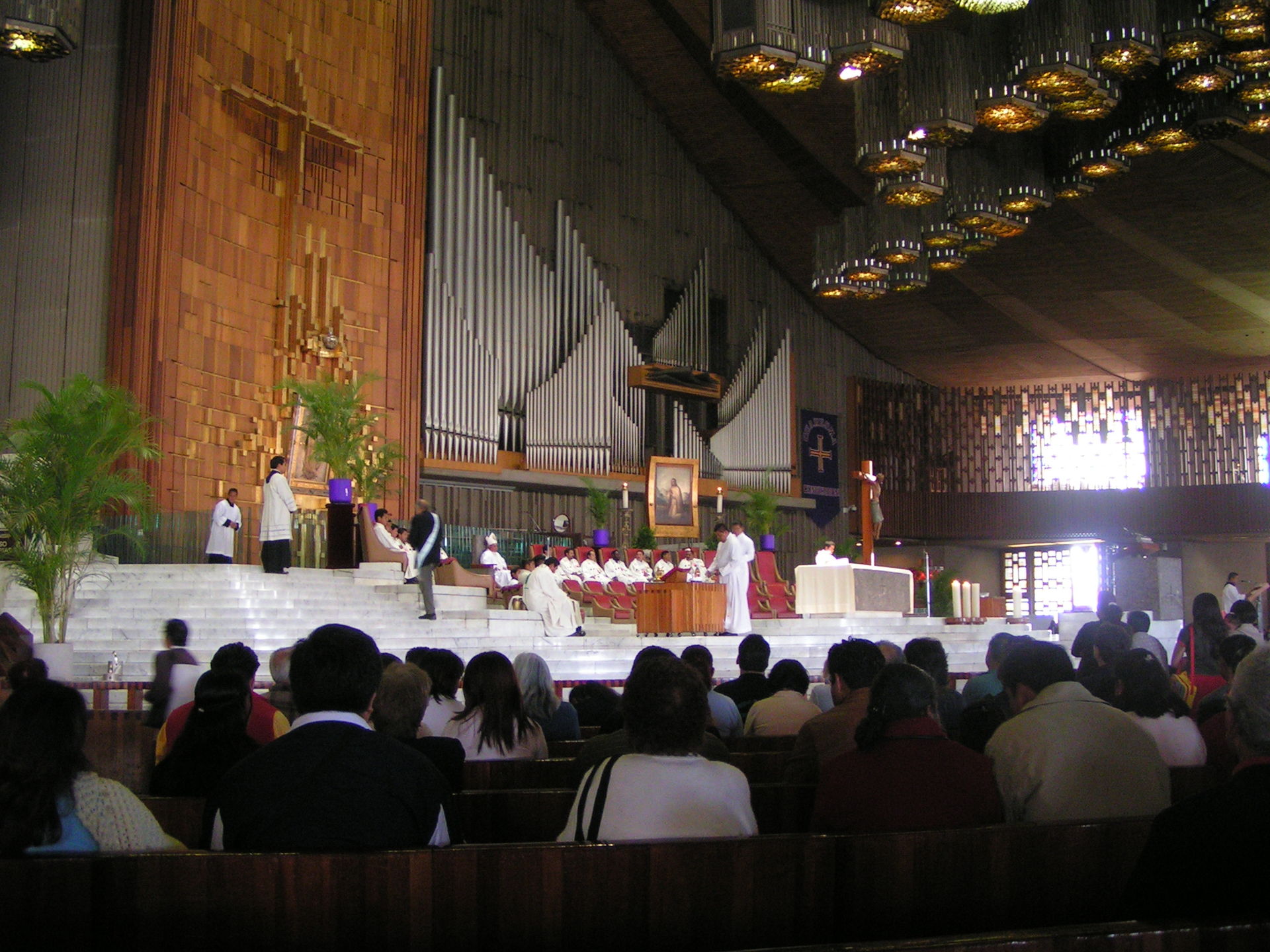 Basilica of Our Lady of Guadalupe (interior) The primary doubts about the historicity of Juan Diego (and the Guadalupe event itself) arise from the silence of those major sources who would be expected to have mentioned him, including, in particular, Bishop Juan de Zumárraga and the earliest ecclesiastical historians who reported the spread of the Catholic faith among the Indians in the early decades after the capture of Tenochtítlan in 1521. Despite references in near-contemporary sources which do attest a mid-16th-century Marian cult attached to a miraculous image of the Virgin at a shrine at Tepeyac under the title of Our Lady of Guadalupe, and despite the weight of oral tradition concerning Juan Diego and the apparitions (which, at the most, spans less than four generations before being reduced to writing), the fundamental objection of this silence of core 16th-century sources remains a perplexing feature of the history of the cult which has, nevertheless, continued to grow outside Mexico and the Americas. The first writer to address this problem of the silence of the sources was Francisco de Florencia in chapter 12 of his book Estrella de el norte de Mexico (see previous section). However, it was not until 1794 that the argument from silence was presented to the public in detail by someone – Juan Bautista Muñoz – who clearly did not believe in the historicity of Juan Diego or of the apparitions. Substantially the same argument was publicized in updated form at the end of the 19th and 20th centuries in reaction to renewed steps taken by the ecclesiastical authorities to defend and promote the cult through the coronation of the Virgin in 1895 and the beatification of Juan Diego in 1990.[ah][75] The silence of the sources can be examined by reference to two main periods: (i) 1531–1556 and (ii) 1556–1606 which, for convenience, may loosely be termed (i) Zumárraga's silence, and (ii) the Franciscan silence. Despite the accumulation of evidence by the start of the 17th century (including allusions to the apparitions and the miraculous origin of the image),[ai][76] the phenomenon of silence in the sources persists well into the second decade of that century, by which time the silence ceases to be prima facie evidence that there was no tradition of the Guadalupe event before the publication of the first narrative account of it in 1648. For example, Bernardo de Balbuena wrote a poem while in Mexico City in 1602 entitled La Grandeza Mexicana in which he mentions all the cults and sanctuaries of any importance in Mexico City except Guadalupe, and Antonio de Remesal published in 1620 a general history of the New World which devoted space to Zumárraga but was silent about Guadalupe.[77] Zumárraga's silence Period (i) extends from the date of the alleged apparitions down to 1556, by which date there first emerges clear evidence of a Marian cult (a) located in an already existing ermita or oratory at Tepeyac, (b) known under the name Guadalupe, (c) focussed on a painting, and (d) believed to be productive of miracles (especially miracles of healing). This first period itself divides into two unequal sub-periods either side of the year 1548 when Bishop Zumárraga died. Post-1548 The later sub-period can be summarily disposed of, for it is almost entirely accounted for by the delay between Zumárraga's death on June 3, 1548, and the arrival in Mexico of his successor, Archbishop Alonso de Montúfar, on June 23, 1554.[78][79] During this interval there was lacking not only a bishop in Mexico City (the only local source of authority over the cult of the Virgin Mary and over the cult of the saints), but also an officially approved resident at the ermita – Juan Diego having died in the same month as Zumárraga, and no resident priest having been appointed until the time of Montúfar. In the circumstances, it is not surprising that a cult at Tepeyac (whatever its nature) should have fallen into abeyance. Nor is it a matter for surprise that a cult failed to spring up around Juan Diego's tomb at this time. The tomb of the saintly fray Martín de Valencia (the leader of the twelve pioneering Franciscan priests who had arrived in New Spain in 1524) was opened for veneration many times for more than thirty years after his death in 1534 until it was found, on the last occasion, to be empty. But, dead or alive, fray Martín had failed to acquire a reputation as a miracle-worker.[80] Pre-1548 Turning to the years before Zumárraga's death, there is no known document securely dated to the period 1531 to 1548 which mentions Juan Diego, a cult to the Virgin Mary at Tepeyac, or the Guadalupe event. The lack of any contemporary evidence linking Zumárraga with the Guadalupe event is particularly noteworthy, but, of the surviving documents attributable to him, only his will can be said to be just such a document as might have been expected to mention an ermita or the cult.[aj] In this will Zumárraga left certain movable and personal items to the cathedral, to the infirmary of the monastery of St. Francis, and to the Conceptionist convent (all in Mexico City); divided his books between the library of the monastery of St Francis in Mexico City and the guesthouse of a monastery in his home-town of Durango, Spain; freed his slaves and disposed of his horses and mules; made some small bequests of corn and money; and gave substantial bequests in favour of two charitable institutions founded by him, one in Mexico City and one in Veracruz.[81] Even without any testamentary notice, Zumárraga's lack of concern for the ermita at Tepeyac is amply demonstrated by the fact that the building said to have been erected there in 1531 was, at best, a simple adobe structure, built in two weeks and not replaced until 1556 (by Archbishop Montúfar, who built another adobe structure on the same site).[ak] Among the factors which might explain a change of attitude by Zumárraga to a cult which he seemingly ignored after his return from Spain in October 1534, the most prominent is a vigorous inquisition conducted by him between 1536 and 1539 specifically to root out covert devotion among natives to pre-Christian deities. The climax of the sixteen trials in this period (involving 27 mostly high-ranking natives) was the burning at the stake of Don Carlos Ometochtli, lord of the wealthy and important city of Texcoco, in 1539 – an event so fraught with potential for social and political unrest that Zumárraga was officially reprimanded by the Council of the Indies in Spain and subsequently relieved of his inquisitorial functions (in 1543).[82] In such a climate and at such a time as that he can hardly have shown favour to a cult which had been launched without any prior investigation, had never been subjected to a canonical inquiry, and was focussed on a cult object with particular appeal to natives at a site arguably connected with popular devotion to a pre-Christian female deity. Leading Franciscans were notoriously hostile to – or at best suspicious of – Guadalupe throughout the second half of the 16th century precisely on the grounds of practices arguably syncretic or worse. This is evident in the strong reaction evinced in 1556 when Zumárraga's successor signified his official support for the cult by rebuilding the ermita, endowing the sanctuary, and establishing a priest there the previous year (see next sub-section). It is reasonable to conjecture that had Zumárraga shown any similar partiality for the cult from 1534 onwards (in itself unlikely, given his role as Inquisitor from 1535), he would have provoked a similar public rebuke.[83] The Franciscan silence The second main period during which the sources are silent extends for the half century after 1556 when the then Franciscan provincial, fray Francisco de Bustamante, publicly rebuked Archbishop Montúfar for promoting the Guadalupe cult. In this period, three Franciscan friars (among others) were writing histories of New Spain and of the peoples (and their cultures) who either submitted to or were defeated by the Spanish Conquistadores. A fourth Franciscan friar, Toribio de Benevente (known as Motolinía), who had completed his history as early as 1541, falls outside this period, but his work was primarily in the Tlaxcala-Puebla area.[al] One explanation for the Franciscans' particular antagonism to the Marian cult at Tepeyac is that (as Torquemada asserts in his Monarquía indiana, Bk.X, cap.28) it was they who had initiated it in the first place, before realising the risks involved.[85][am] In due course this attitude was gradually relaxed, but not until some time after a change in spiritual direction in New Spain attributed to a confluence of factors including (i) the passing away of the first Franciscan pioneers with their distinct brand of evangelical millennarianism compounded of the ideas of Joachim de Fiore and Desiderius Erasmus (the last to die were Motolinía in 1569 and Andrés de Olmos in 1571), (ii) the arrival of Jesuits in 1572 (founded by Ignatius Loyola and approved as a religious order in 1540), and (iii) the assertion of the supremacy of the bishops over the Franciscans and the other mendicant Orders by the Third Mexican Council of 1585, thus signalling the end of jurisdictional arguments dating from the arrival of Zumárraga in Mexico in December 1528.[87][88] Other events largely affecting society and the life of the Church in New Spain in the second half of the 16th century cannot be ignored in this context: depopulation of the indigenous through excessive forced labour and the great epidemics of 1545, 1576–1579 and 1595,[89] and the Council of Trent, summoned in response to the pressure for reform, which sat in twenty-five sessions between 1545 and 1563 and which reasserted the basic elements of the Catholic faith and confirmed the continuing validity of certain forms of popular religiosity (including the cult of the saints).[90] Conflict over an evangelical style of Catholicism promoted by Desiderius Erasmus, which Zumárraga and the Franciscan pioneers favoured, was terminated by the Catholic Church's condemnation of Erasmus' works in the 1550s. The themes of Counter-reformation Catholicism were strenuously promoted by the Jesuits, who enthusiastically took up the cult of Guadalupe in Mexico.[91][92] The basis of the Franciscans' disquiet and even hostility to Guadalupe was their fear that the evangelization of the natives had been superficial, that the indigenous had retained some of their pre-Christian beliefs, and, in the worst case, that Christian baptism was a cloak for persisting in pre-Christian devotions.[85][93][94] These concerns are to be found in what was said or written by leading Franciscans such as fray Francisco de Bustamante (involved in a dispute on this topic with Archbishop Montúfar in 1556, as mentioned above); fray Bernardino de Sahagún (whose Historia general de las cosas de Nueva España was completed in 1576/7 with an appendix on surviving superstitions in which he singles out Guadalupe as a prime focus of suspect devotions); fray Jerónimo de Mendieta (whose Historia eclesiástica indiana was written in the 1590s); and fray Juan de Torquemada who drew heavily on Mendieta's unpublished history in his own work known as the Monarquía indiana (completed in 1615 and published in Seville, Spain, that same year). There was no uniform approach to the problem and some Franciscans were less reticent than others. Bustamante publicly condemned the cult of Our Lady of Guadalupe outright precisely because it was centred on a painting (allegedly said to have been painted "yesterday" by an Indian) to which miraculous powers were attributed,[95] whereas Sahagún expressed deep reservations as to the Marian cult at Tepeyac without mentioning the cult image at all.[96][97][98] Mendieta made no reference to the Guadalupe event although he paid particular attention to Marian and other apparitions and miraculous occurrences in Book IV of his history – none of which, however, had evolved into established cults centred on a cult object. Mendieta also drew attention to the natives' subterfuge of concealing pre-Christian cult objects inside or behind Christian statues and crucifixes in order to mask the true focus of their devotion.[99] Torquemada repeated, with variations, an established idea that churches had been deliberately erected to Christian saints at certain locations (Tepeyac among them) in order to channel pre-Christian devotions towards Christian cults.[100] Significance of silence The non-reference by certain church officials of Juan Diego does not necessarily prove that he did not exist.[an] The relevance of the silence has been questioned by some, citing certain documents from the time of Zumárraga, as well as the fact that Miguel Sánchez preached a sermon in 1653 on the Immaculate Conception in which he cites chapter 12 of the Book of Revelation, but makes no mention of Guadalupe.[102] |
歴史性に関する議論 グアダルペの聖母大聖堂(内部) フアン・ディエゴ(およびグアダルペの出来事自体)の歴史性に対する主な疑念は、フアン・ディエゴについて言及しているはずである主要な情報源が沈黙して いることから生じている。特に、1521年のテノチティトラン陥落後、最初の数十年間にインディアンへのカトリック信仰の普及について報告したフアン・ デ・スマラガ司教や初期の教会史家などが該当する。16世紀中期のマリア崇拝が、テペヤックの聖母グアダルペの聖堂にある奇跡的な聖母マリア像と結びつい ていたことを示す、ほぼ同時代の資料への言及があるにもかかわらず、また、フアン・ディエゴと聖母マリアの出現に関する口承の重要性にもかかわらず (最も長いものでも、文章化されるまでに4世代未満しか経っていない)にもかかわらず、16世紀の主要な情報源が沈黙しているという事実は、この教団の謎 めいた歴史の特徴であり続けている。この資料の沈黙の問題を最初に取り上げたのは、フランシスコ・デ・フロレンシアで、著書『メキシコ北部の星』の第12 章で述べている(前節参照)。しかし、沈黙の議論が詳細に公表されたのは、フアン・バウティスタ・ムニョスという人物によってであり、それは1794年の ことである。彼は明らかにフアン・ディエゴや聖母の出現の史実性を信じていなかった。1895年の聖母戴冠式や1990年のフアン・ディエゴの列福など、 教会の当局が聖母マリアの崇拝を擁護し推進する新たな措置を講じたことに対する反発として、19世紀末から20世紀初頭にかけて、実質的に同じ論点が更新 された形で公表された。 資料の沈黙については、次の2つの主要な時期を基準に検討することができる。(i) 1531年~1556年、(ii) 1556年~1606年。便宜上、(i) スマラガの沈黙、(ii) フランシスコ会の沈黙と呼ぶことができる。17世紀初頭までに、出現や像の奇跡的な起源に関する言及を含む証拠が蓄積されたにもかかわらず[ai] [76]、資料における沈黙の現象は、1648年にグアダルペの出来事の最初の物語的記述が発表されるまで、グアダルペの出来事の伝統が存在しなかったこ とを示す明白な証拠ではなくなった。例えば、ベルナルド・デ・バルブエナは1602年にメキシコシティで『ラ・グランデサ・メヒカーナ』と題する詩を書 き、その中でメキシコシティの重要なあらゆる崇拝と聖域について言及しているが、グアダルーペについては言及していない。また、アントニオ・デ・レメサル は1620年に新世界の一般史を出版したが、その中にはズマラガについては詳しく書かれているが、グアダルーペについては何も書かれていない。 ズマラガ ズマラガの沈黙 (i) は、聖母マリアの幻影が報告された日から1556年までを指し、この年にはマリア崇拝の明確な証拠が初めて現れた。それは、(a) テペヤックの既存の礼拝堂や祈りの部屋にある、(b) グアダルーペの名で知られている、(c) 絵画に焦点を当てている、(d) 奇跡(特に癒しの奇跡)をもたらすと考えられている。この最初の時期は、1548年に司教ズマラガが死去した前後で、2つの異なるサブ期間に分けられる。 1548年以降 後者の期間は、1548年6月3日にズマラガが死去してから、後継者であるモンテファー大司教が1554年6月23日にメキシコに到着するまでの間の遅れ によってほぼ完全に説明できるため、簡単にまとめることができる[78][ 79] この期間、メキシコシティには司教(聖母マリアと聖人崇拝の唯一の地元権威)がいないだけでなく、エルミタに正式に承認された居住者もいなかった。フア ン・ディエゴはズマラガと同じ月に亡くなり、モンテファーの時代になるまで居住司祭が任命されなかったのだ。このような状況では、テペヤックの礼拝堂(そ の性質が何であれ)が休止状態に陥ったとしても驚くには当たらない。また、この時期にフアン・ディエゴの墓の周りに礼拝堂が建設されなかったとしても驚く には当たらない。聖人マルティン・デ・バレンシア(1524年に新スペインに到着した12人の先駆的フランシスコ会修道士たちのリーダー)の墓は、 1534年に彼が亡くなった後、30年以上何度も参拝のために開かれ、最後に空であることが分かった。しかし、生きているか死んでいるかにかかわらず、フ ラ・マルティンは奇跡を起こす人物としての評判を得ることはできなかった[80]。 1548年以前 ツマラガの死の前年について言えば、1531年から1548年の間に、フアン・ディエゴ、テペヤックの聖母マリア崇拝、グアダルペの出来事を言及した確実 な日付の文書は知られていない。ズマラガとグアダルーペの出来事を結びつけるような同時代の証拠がないことは特に注目に値するが、彼に帰せられる現存する 文書のうち、エルミタや崇拝について言及している可能性があると期待される文書は、彼の遺言書だけである[aj]。この遺言書で、ズマラガは、大聖堂、サ ンフランシスコ修道院の診療所、 そしてコンセプシオニスタ修道院(いずれもメキシコシティ)に遺贈し、蔵書をメキシコシティのサンフランシスコ修道院の図書館と故郷であるスペインのドゥ ランゴにある修道院のゲストハウスに分け、奴隷を解放し、馬とラバを手放し、トウモロコシと金銭を少し遺贈し、自身が設立した慈善団体2団体に多額の遺贈 を行った。そして、ベラクルスに設立された2つの慈善団体に多額の遺産を残した。同じ場所に別の土造りの建物を建てた)[ak]。1534年10月にスペ インから帰国した後、ズマラガがそれまで無視していたように見えたこの宗教に対する態度を変化させた要因として考えられるものの中で、最も顕著なのは、 1536年から1539年にかけて、特に先住民のキリスト教以前の神々に対する隠れた信仰を根絶するために、彼が主導した活発な異端審問である。この期間 に行われた16件の裁判(主に高位の人々が関与した27件)のクライマックスは、1539年にテスココの裕福で重要な都市の領主ドン・カルロス・オメトク トリが火あぶりにされたことであった。この出来事は、社会や政治の不安要素を孕む可能性があったため、スペインのインド評議会から公式に叱責されたズマラ ガは、その後 (1543年)[82]。このような時代背景の中で、事前調査も正式な調査もなされておらず、先住民の信仰の対象となっている、キリスト教以前の女神への 信仰と関連があるとされる場所に置かれている、先住民にとって特別な魅力を持つ聖像に焦点を当てたカルトを、彼が好意的に受け止めることはあり得なかっ た。16世紀後半を通じて、グアダルーペに対して敵意を抱く、あるいはせいぜい疑いの目を向けるフランシスコ会の指導者は多かった。その理由は、明らかに 折衷的、あるいはそれ以上の要素を含むとされる慣習にあった。これは、1556年にズマラガの後任者が前年にエルミタを再建し、聖域に資金を投入し、そこ に司祭を置いたことで、この教団への公式な支持を表明した際に示された強い反発からも明らかである(次の小節を参照)。1534年以降、ズマラガがカルト に対して同様の偏愛を示していたら(1535年から彼が宗教裁判官を務めていたことを考えると、それ自体が考えにくい)、同様の公の非難を招いたであろう と推測するのは妥当である[83]。 フランシスコ会の沈黙 資料が沈黙している2つ目の主な期間は、1556年以降半世紀にわたって続いた。当時のフランシスコ会管区長、フラビオ・デ・ブスタマンテが、グアダルー ペの崇拝を推奨したモンテファル大司教を公然と非難した時期である。この期間、3人のフランシスコ会の修道士(そのほか数人)が、スペインの征服者たちに 服従したか、あるいは征服者たちに敗北した人々(およびその文化)に関する、新スペインの歴史を執筆していた。1541年にすでに歴史を完成させていた、 第4のフランシスコ会修道士トリビオ・デ・ベネベント(モトリニアとして知られる)は、この期間に含まれないが、彼の作品は主にトラスカラ・プエブラ地域 を対象としていた[al]。フランシスコ会がテペヤックの聖母崇拝に特に敵対していた理由の一つとして、(トルケマーダが『Monarquía Indiana』第10巻第28章で主張しているように トルケマーダが『インディアナ君主論』第10巻第28章で主張しているように、フランシスコ会はそもそも、危険性を認識する前にそれを始めたのだという説 がある[85][am]。やがてこの姿勢は徐々に緩和されたが、それは(i)ヨアヒム・デ・フィオレとデシデリウス・エラスムスの思想を融合させた独自の 福音主義千年王国説を持つ最初のフランシスコ会の開拓者たちが相次いで死去したこと(最後に亡くなったのは1569年のモトリニアと1571年のアンドレ ス・デ・オルモス)、(ii)1572年のイエズス会の到来(イグナティウス・ロヨラが創設し、1540年に修道会として承認された)、(iii)トルケ マーダの主張など、さまざまな要因が重なった結果、ニュースペインにおける精神的な方向性が変化してからしばらく経ってからであった。ヨアヒム・デ・フィ オーレとデシデリウス・エラスムスの思想を融合させた独自の千年王国説を信奉していた最初のフランシスコ会の開拓者たちが相次いで死去したこと(最後に亡 くなったのは、1569年のモトリニヤと1571年のアンドレス・デ・オルモス)、(ii) 1572年のイエズス会の到来(イグナティウス・ロヨラによって創設され、1540年に修道会として承認された)、(iii) 1585年の第3回メキシコ公会議で、司教がフランシスコ会や他の托鉢修道会よりも優位にあることが主張されたことにより、1528年12月のズマラーガ のメキシコ到着以来続いていた管轄権をめぐる論争に終止符が打たれた[87][88]。16世紀後半にニュースペインの社会と教会の生活に大きく影響を与 えたその他の出来事として、 1545年、1576年から1579年、1595年に起こった大流行病や、過酷な強制労働による先住民の人口減少[89]、改革を求める圧力を受けて招集 されたトレント公会議(1545年から1563年にかけて25回開催された)など、16世紀後半のニュースペインにおける社会や教会の生活に大きく影響を 与えた出来事を無視することはできない。そして、カトリック信仰の基本的要素を再確認し、特定の形式の民間信仰(聖人崇拝を含む)の継続的な妥当性を確認 した[90]。デシデリウス・エラスムスが推進し、ズマラガやフランシスコ会の先駆者たちが支持した福音主義的カトリック様式をめぐる対立は、1550年 代にカトリック教会がエラスムスの著作を非難したことで終結した。対抗宗教改革のカトリックのテーマは、メキシコにおけるグアダルーペの崇拝に熱狂的に取 り組んだイエズス会によって精力的に推進された[91][92]。 フランシスコ会の不安、さらにはグアダルーペに対する敵意の根底には、先住民への布教が表面的なものであったこと、先住民がキリスト教以前の信仰の一部を 保持していること、そして最悪の場合、キリスト教の洗礼はキリスト教以前の信仰を固執するための隠れ蓑となっているのではないかという懸念があった [85][93][94]。 キリスト教以前の信仰を固執するための隠れ蓑である、という最悪のケースも想定されていた。[85][93][94] これらの懸念は、フランシスコ会の指導的立場にあったフランシスコ・デ・ブスタマンテ修道士(前述の通り、1556年にモンテファール大司教とこのテーマ で論争した)、ベルナルディーノ・デ・サアグン修道士(1576年/7年に『ヌエバ・エスパーニャの事物全般史』を完成させ、付録として 彼はグアダルーペを疑わしい崇拝の主な焦点として取り上げた、生き残っている迷信に関する付録を添えて、1576年から1577年に『ヌエバ・エスパー ニャの事物全般に関する歴史』を完成させた)。また、フアン・デ・トルケマーダ修道士は、メンディエタの未発表の歴史を大いに参考にしながら、自身の著作 『インディアン王政』を執筆した(1615年に完成し、同年スペインのセビリアで出版)。この問題に対するアプローチは統一されておらず、フランシスコ会 の修道士の中には、他の人よりも口数が少ない者もいた。ブスタマンテは、奇跡的な力が宿るとされる絵画(インディアンが「昨日」描いたとされる)を中心に 展開されるグアダルペの聖母崇拝を公然と非難した[95]のに対し、サアグンはテペヤックの聖母崇拝について深い懸念を表明したが、 その聖像については一切言及していない[96][97][98]。メンディエタは、マリアやその他の出現、奇跡的な出来事に特に注意を払ったものの、グア ダルーペの出来事に一切言及しなかった。しかし、これらの出来事はいずれも、聖像を中心とした確立した崇拝へと発展することはなかった。メンディエタは、 先住民がキリスト教の像や十字架の中に、あるいはその裏側に、キリスト教以前の信仰の対象を隠して、自分たちの真の信仰の対象を隠すという策略にも注目し た[99]。トルケマーダは、教会が特定の場所(テペヤックもその一つ)に意図的に建てられたのは、キリスト教以前の信仰をキリスト教の信仰対象へと導く ためだったという定説を、バリエーションを変えて繰り返した[100]。 沈黙の重要性 フアン・ディエゴについて言及しない一部の教会関係者の発言は、必ずしも彼が実在しなかったことを証明するものではない[an]。沈黙の妥当性について は、ズマラガの時代からの特定の文書や、ミゲル・サンチェスが1653年に無原罪の御宿りを説教し、ヨハネの黙示録第12章を引用したが、グアダルペにつ いては言及しなかった事実を引用し、疑問視する者もいる[102]。 |
| Pastoral significance in the Catholic Church in Mexico and beyond The evangelization of the New World Both the author of the Nican Mopectana and Miguel Sánchez explain that the Virgin's immediate purpose in appearing to Juan Diego (and to don Juan, the seer of the cult of los Remedios) was evangelical – to draw the peoples of the New World to faith in Jesus Christ:[103] In the beginning when the Christian faith had just arrived here in the land that today is called New Spain, in many ways the heavenly lady, the consummate Virgin Saint Mary, cherished, aided and defended the local people so that they might entirely give themselves and adhere to the faith. ...In order that they might invoke her fervently and trust in her fully, she saw fit to reveal herself for the first time to two [Indian] people here. The continuing importance of this theme was emphasised in the years leading up to the canonization of Juan Diego. It received further impetus in the Pastoral Letter issued by Cardinal Rivera in February 2002 on the eve of the canonization, and was asserted by John Paul II in his homily at the canonization ceremony itself when he called Juan Diego "a model of evangelization perfectly inculturated" – an allusion to the implantation of the Catholic Church within indigenous culture through the medium of the Guadalupe event.[104] Reconciling two worlds 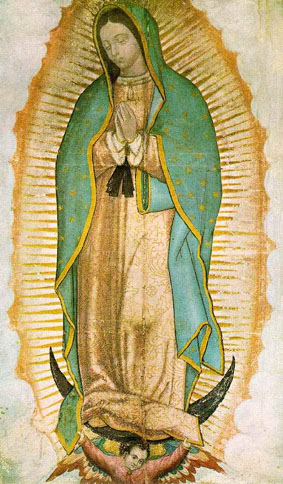 Image of Our Lady of Guadalupe as it currently appears on the tilma In the 17th century, Miguel Sánchez interpreted the Virgin as addressing herself specifically to the indigenous people, while noting that Juan Diego himself regarded all the residents of New Spain as his spiritual heirs, the inheritors of the holy image.[105] The Virgin's own words to Juan Diego as reported by Sánchez were equivocal: she wanted a place at Tepeyac where she can show herself,[106] as a compassionate mother to you and yours, to my devotees, to those who should seek me for the relief of their necessities. By contrast, the words of the Virgin's initial message as reported in Nican Mopohua are, in terms, specific to all residents of New Spain without distinction, while including others, too:[107] I am the compassionate mother of you and of all you people here in this land, and of the other various peoples who love me, who cry out to me. The special but not exclusive favour of the Virgin to the indigenous peoples is highlighted in Lasso de la Vega's introduction:[108] You wish us your children to cry out to [you], especially the local people, the humble commoners to whom you revealed yourself. At the conclusion of the miracle cycle in the Nican Mopectana, there is a broad summary which embraces the different elements in the emergent new society, "the local people and the Spaniards [Caxtilteca] and all the different peoples who called on and followed her".[109] The role of Juan Diego as both representing and confirming the human dignity of the indigenous populations and of asserting their right to claim a place of honour in the New World is therefore embedded in the earliest narratives, nor did it thereafter become dormant awaiting rediscovery in the 20th century. Archbishop Lorenzana, in a sermon of 1770, applauded the evident fact that the Virgin signified honour to the Spaniards (by stipulating for the title "Guadalupe"), to the natives (by choosing Juan Diego), and to those of mixed race (by the colour of her face). In another place in the sermon he noted a figure of eight on the Virgin's robe and said it represented the two worlds that she was protecting (the old and the new).[110] This aim of harmonising and giving due recognition to the different cultures in Mexico rather than homogenizing them was also evident in the iconography of Guadalupe in the 18th century as well as in the celebrations attending the coronation of the image of Guadalupe in 1895 at which a place was given to 28 natives from Cuautitlán (Juan Diego's birthplace) wearing traditional costume.[111] The prominent role accorded indigenous participants in the actual canonization ceremony (not without criticism by liturgical purists) constituted one of the most striking features of those proceedings.[112] |
メキシコおよびその他の地域のカトリック教会における司牧的な意義 新世界の福音化 『ニカン・モペクタナ』の作者とミゲル・サンチェスは、聖母マリアがフアン・ディエゴ(およびロス・レメディオス教団の預言者ドン・フアン)の前に姿を現した直接的な目的は福音化、すなわち 新世界の民をイエス・キリストへの信仰へと導くためであった[103]。 キリスト教の信仰が、今日ニュー・スペインと呼ばれるこの地に初めて伝わった当初、天上の聖母マリアは、人々が完全に信仰に身を捧げ、それに従うことがで きるよう、さまざまな形で現地の人々を慈しみ、助け、守った。...人々が彼女を熱烈に呼び求め、完全に信頼できるよう、彼女はここで2人の[インディア ン]人々に初めて姿を現すことにした。 このテーマの重要性は、フアン・ディエゴの列聖に至るまで強調され続けた。2002年2月に、列聖式の前夜にリベラ枢機卿が発表した司牧書簡により、この テーマは一層強調され、列聖式典での説教で、教皇ヨハネ・パウロ2世はフアン・ディエゴを「完全に現地文化に根付いた伝道の模範」と呼び、 グアダルーペの出来事を媒介として先住民文化に根付いたカトリック教会のことを暗示している[104]。 2つの世界の和解  ティルマに描かれた現在のグアダルーペの聖母のイメージ 17世紀、ミゲル・サンチェスは聖母が先住民に特に語りかけていると解釈し、一方、フアン・ディエゴ自身は新スペインの住民全員を精神的後継者、すなわち 聖なる像の継承者たちである。[105] サンチェスが報告した、聖母マリアがフアン・ディエゴに語った言葉には曖昧さがあった。 彼女はテペヤックに、自分自身を顕現できる場所が欲しいと望んでいた。あなたとあなたの家族、私の信奉者たち、そして私を求めて必要を満たそうとする人々に、慈愛に満ちた母として。 それとは対照的に、『ニカン・モポフア』で報告されている聖母の最初のメッセージの言葉は、他の人々も含むが、ニュースペインのすべての住民に区別なく向けられたものである。 私はあなた方、そしてこの土地に住むあなた方すべて、そして私を愛し、私に助けを求める他のさまざまな民族の慈愛に満ちた母です。 先住民に対する聖母の特別な、しかし排他的な恩恵は、ラッソ・デ・ラ・ベガの序文で強調されている:[108] あなたは、私たちをあなたの子供たちとして、特に地元の民、あなたがお姿を現された謙虚な平民たちに、あなたに助けを求めて叫んでほしいと望んでいる。 『ニカン・モペクテナ』の奇跡の物語の結末には、新たに生まれた社会におけるさまざまな要素を包括する次のような概要がある。「現地の人々やスペイン人(カシュティルテカ)や、彼女を呼び求め、彼女に従ったさまざまな人々」。[1 09] 先住民の尊厳を代弁し、確認し、新世界における名誉ある地位を要求する権利を主張するというフアン・ディエゴの役割は、したがって最も古い物語に組み込ま れている。また、20世紀になって再発見されるのを待つために眠っていたわけでもない。1770年の説教でロレンサナ大司教は、聖母マリアがスペイン人 (グアダルペという称号を定めたことで)、先住民(フアン・ディエゴを選んだことで)、混血の人々(聖母の顔の色のことで)に名誉を象徴するという明白な 事実を称賛した。説教の別の箇所では、聖母の衣に描かれた数字の8に注目し、それは彼女が守っている2つの世界(古い世界と新しい世界)を表していると述 べた[110]。メキシコにおける異なる文化を同質化するのではなく調和させ、正当に評価するというこの目的は、18世紀のグアダルペの図像や、 1895年のグアダルペの聖母の像の戴冠式では、クアウティトラン(フアン・ディエゴの出身地)の28人の先住民が伝統的な衣装を着て参加し、彼らに場所 が用意された。[111]実際の列聖式で先住民参加者に与えられた重要な役割(典礼の純粋主義者からの批判もなかったわけではない)は、その手続きの最も 顕著な特徴の一つであった。[112] |
| Portal:Catholic Church/Patron Archive/December 9 |
|
| https://en.wikipedia.org/wiki/Juan_Diego |
★
Recuerdo de Tepeyac
| Tepeyac or the Hill of Tepeyac, historically known by the names Tepeyacac and Tepeaquilla, is located inside Gustavo A. Madero, the northernmost Alcaldía or borough of Mexico City. According to the Catholic tradition, it is the site where Saint Juan Diego met the Virgin of Guadalupe in December 1531, and received the iconic image of the Lady of Guadalupe. The Basilica of Our Lady of Guadalupe located there is one of the most visited Catholic shrines in the world. Spanish colonists erected a Catholic chapel at the site, Our Lady of Guadalupe, "the place of many miracles."[1]: 363 It forms part of the Sierra de Guadalupe mountain range. | テペヤック、あるいはテペヤックの丘は、歴史的にはテペヤカックやテペ
アキージャの名で知られ、メキシコシティ最北端の行政区であるグスタボ・A・マデロ区内にある。カトリックの伝承によれば、1531年12月に聖フアン・
ディエゴがグアダルーペの聖母と出会い、グアダルーペの聖母の象徴的な像を授かった場所である。そこに建つグアダルーペの聖母大聖堂は、世界で最も参拝者
の多いカトリック聖地の一つだ。スペイン人入植者たちはこの地にカトリック礼拝堂を建立した。その名は「奇跡の多い場所」を意味するグアダルーペの聖母で
ある[1]: 363 。この丘はグアダルーペ山脈の一部を成している。 |
| Pre-Columbian history Tepeyac Hill "had been a place for worshipping Aztec earth goddesses."[2] Tepeyac is believed to have been a Pre-Columbian worship site for the indigenous mother goddess Tonantzin Coatlaxopeuh ("Tonantzin" is a title of the greatest respect and "Coatlaxopeuh" is a name). |
コロンブス以前の歴史 テペヤックの丘は「アステカの地母神を祀る場所であった」[2]。テペヤックは先住民の母なる女神トナントシンの崇拝地であったと考えられている。トナントシンは「トナントシン」が最高の敬意を表す称号で、「コアトラクソペウ」が名前である。 |
| Etymology In Nahuatl, Tepeyacac is a proper noun, a combination of tepetl ("mountain"), yacatl ("nose"), and the relational word -c, ("at"). According to scholars of the Nahuatl language, "the term would generally be expected to mean 'a settlement on the ridge or brow of a hill.' Since yacatl (the nose going first) often implies antecedence, here the word may refer to the fact that the hill is the first and most prominent of a series of three."[3] |
語源 ナワトル語において、テペヤカックは固有名詞であり、「山」を意味するテペトル、「鼻」を意味するヤカトル、そして関係詞の接尾辞-c(「〜で」)が組み 合わさったものである。ナワトル語の研究者によれば、「この用語は一般的に『丘の尾根や頂上にある集落』を意味すると考えられる。ヤカトル(鼻が先に来 る)はしばしば先行性を示すため、ここではこの言葉が、その丘が三つの丘の中で最初で最も目立つことを指している可能性がある」[3]。 |
| Basilica of Our Lady of Guadalupe El Tepeyac National Park |
グアダルーペの聖母大聖堂 エル・テペヤック国立公園 |
| 1. Diaz, B., 1969, The Conquest of New Spain, London: Penguin Books, ISBN 0140441239 2. "National Geographic Magazine". Archived from the original on November 10, 2015. 3. Sousa, Lisa, Stafford Poole, and James Lockhart, eds. (1998). The Story of Guadalupe: Luis Laso de la Vega's Huei tlamahuicoltica of 1649. Stanford University Press. pp. 60, fn. 2 – via Google Books. |
1. ディアス, B., 1969, 『新スペイン征服史』, ロンドン: ペンギンブックス, ISBN 0140441239 2. 「ナショナルジオグラフィック誌」. 2015年11月10日時点のオリジナルからアーカイブ. 3. Sousa, Lisa, Stafford Poole, and James Lockhart, eds. (1998). 『グアダルーペの物語:ルイス・ラソ・デ・ラ・ベガの1649年『ウエ・トラマウィコルティカ』』. スタンフォード大学出版局. pp. 60, fn. 2 – Google Books経由. |
| https://en.wikipedia.org/wiki/Tepeyac |
☆グアダルーペの聖母(Nuestra Señora de Guadalupe)
| Nuestra Señora de Guadalupe,
conocida comúnmente como la Virgen de Guadalupe,[2] es una aparición
mariana de la Iglesia católica de origen mexicano, cuya imagen tiene su
principal centro de culto en la Basílica de Guadalupe, ubicada en las
faldas del cerro del Tepeyac, en el norte de la Ciudad de México. De acuerdo al relato guadalupano conocido como Nican mopohua (1556) que narra que tras la primera aparición, la Virgen ordenó a Juan Diego que se presentara ante el primer obispo de México, Juan de Zumárraga, para decirle que le erigieran un templo el cual recogió la tradición oral mexicana,[3] y lo descrito por otros documentos históricos como el códice Escalada (1548), el Nican Motecpana (1590), Nican Tlantica, el Huei Tlamahuizoltica (1649) y otros documentos, María, la madre de Jesús se apareció en cuatro ocasiones al indígena chichimeca Juan Diego Cuauhtlatoatzin en el cerro del Tepeyac, y en una ocasión a Juan Bernardino, tío de Juan Diego. El obispo Juan de Zumárraga pidió una prueba a Juan Diego, pues era escéptico a dicha aparición. En la última aparición de la Virgen y por orden suya, Juan Diego llevó en su ayate unas rosas de Castilla que cortó en el Tepeyac y se dirigió al palacio del obispado. Al desplegar su ayate ante Juan de Zumárraga, dejó al descubierto la imagen de la Virgen María, cuyos rasgos han sido interpretados como "mestizos" a pesar de ser de piel mucho más clara que su homónima española. El parecido entre esa figura y la bordada en el entonces por todos conocido Pendón de Hernán Cortés sería la causa de que se le denominara Virgen de Guadalupe.[4] Según el Nican Mopohua, texto hagiográfico publicado en el siglo xvii,[5] las apariciones tuvieron lugar en 1531, ocurriendo la cuarta el 12 de diciembre de ese mismo año. La fuente más importante que las relata fue el mismo Juan Diego, que habría contado todo lo que había acontecido. Posteriormente esta tradición oral fue recogida en un escrito con sonido náhuatl pero con caracteres latinos; este escrito es llamado el Nican mopohua, y es atribuido al indígena Antonio Valeriano (1522-1605). Posteriormente, en 1648, es publicado el libro Imagen de la Virgen María Madre de Dios de Guadalupe por el presbítero Miguel Sánchez, contribuyendo a recopilar todo lo que se sabía en la época sobre la devoción guadalupana. Según diversos investigadores, el culto guadalupano es una de las creencias más históricamente arraigadas en el actual México y parte de su identidad,[5][6][7] y ha estado presente en el desarrollo como país desde el siglo xvi[8] incluso en sus procesos sociales más importantes como la Independencia de México, la de Reforma, la Revolución mexicana[7] y en la sociedad mexicana actual, en donde cuenta con millones de fieles, algunos de ellos profesantes como guadalupanos sin ser necesariamente parte del catolicismo.[9] Las raíces devocionales primigenias de esta imagen estarían en la Virgen de Guadalupe de Extremadura, por la cual tenían devoción los conquistadores españoles.[10] |
グアダルーペの聖母は、一般にグアダルーペの聖母として知られており、メキシコに起源を持つカトリック教会の聖母マリアの御出現である。その像は、メキシコシティ北部のテペヤック山の麓にあるグアダルーペ大聖堂を主な礼拝の中心地としている。 グアダルーペの物語「ニカン・モポワ」(1556年)によると、最初の出現の後、聖母はフアン・ディエゴに、メキシコ初代司教フアン・デ・スマラガの前に 現れて、彼女のために寺院を建立するよう伝えるよう命じた。これはメキシコの口承の伝統をまとめたものであり、 [3]、また、エスカラダ写本(1548年)、ニカン・モテクパナ(1590年)、ニカン・トランティカ、 フエイ・トラマウィゾルティカ(1649年)などの歴史的文書にも記述されている。イエスの母マリアは、チチメカ族の先住民フアン・ディエゴ・クアウトラ トアツィンにテペヤックの丘で4回、またフアン・ディエゴの叔父であるフアン・ベルナルディーノに1回、出現した。司教フアン・デ・スマラガは、その出現 を懐疑的に見ていたため、フアン・ディエゴに証拠を求めた。聖母が最後に現れたとき、彼女の指示で、フアン・ディエゴはテペヤックで摘んだカスティーリャ のバラをアヤテ(布)に包んで司教の宮殿に向かった。フアン・デ・スマラガの前でアヤテを広げると、聖母マリアの姿が現れた。その顔立ちは、スペインの聖 母よりもはるかに肌の色が明るいにもかかわらず、「メスティーソ」と解釈されている。この姿と、当時誰もが知っていたエルナン・コルテスの旗に刺繍されて いた姿との類似性が、この聖母がグアダルーペの聖母と呼ばれるようになった理由である。 17世紀に出版された聖人伝『ニカン・モポワ』によれば、[5] 聖母の出現は1531年に起こり、4回目の出現は同年12月12日だった。この出来事を伝えている最も重要な情報源は、その出来事をすべて語ったとされる フアン・ディエゴ自身だった。その後、この口承の伝統は、ナワトル語の音でラテン文字を使って書かれた文書にまとめられた。この文書は『ニカン・モポワ』 と呼ばれ、先住民のアントニオ・バレリアノ(1522-1605)によるものとされている。その後、1648年に司祭ミゲル・サンチェスによって『グアダ ルーペの聖母マリア像』という本が出版され、当時グアダルーペの信仰について知られていたことをすべてまとめることに貢献した。 さまざまな研究者によると、グアダルーペの信仰は、現在のメキシコにおいて歴史的に最も根強い信仰の一つであり、そのアイデンティティの一部である [5]。[6][7] 16世紀以来、メキシコという国の発展、さらにはメキシコ独立、改革、メキシコ革命[7] といった重要な社会的プロセス、そして現在のメキシコ社会においても存在し続けており、何百万人もの信者がいる。その中には、必ずしもカトリック教徒では ないにもかかわらず、グアダルーペの信者であると公言する者もいる。この像の信仰のルーツは、スペインの征服者たちが信仰していたエストレマドゥーラのグ アダルーペの聖母にあると考えられている。 |
| Historia Relato mariano Véase también: Anexo:Documentos históricos aceptados por la Iglesia católica sobre la Virgen de Guadalupe  Nican Mopohua original Según la tradición católica, el cuerpo de documentos históricos aceptados por la iglesia, y esencialmente la narración del Nican Mopohua,[6] el llamado milagro guadalupano ocurrió de la siguiente manera: El santo Juan Diego Cuauhtlatoatzin nació en 1474 en Cuautitlán, entonces reino de Texcoco, perteneciente a la etnia de los chichimecas. Su nombre era Cuauhtlatoatzin, que en su lengua materna significaba ‘águila que habla’, o ‘el que habla con un águila’. Ya adulto y padre de familia, atraído por la doctrina de los padres franciscanos ―llegados a México en 1524―, habría recibido el bautismo y el nombre hispano de Juan Diego, y su esposa se llamó María Lucía. Se celebró también el matrimonio cristiano. Su esposa falleció en 1529. El Nican Mopohua narra que el sábado, 9 de diciembre de 1531, mientras se dirigía a pie a Tlatelolco, en un lugar denominado Tepeyac, tuvo lugar la primera aparición de la Virgen María, que se le presentó como «la perfecta siempre virgen santa María, madre del Dios verdadero». La Virgen le encargó que en su nombre pidiese al obispo capitalino ―el franciscano Juan de Zumárraga― la construcción de una iglesia en el lugar de la aparición. Como el obispo no aceptó la idea, Juan Diego volvió a ver a la Virgen ese mismo día y ella le pidió que insistiese (segunda aparición). 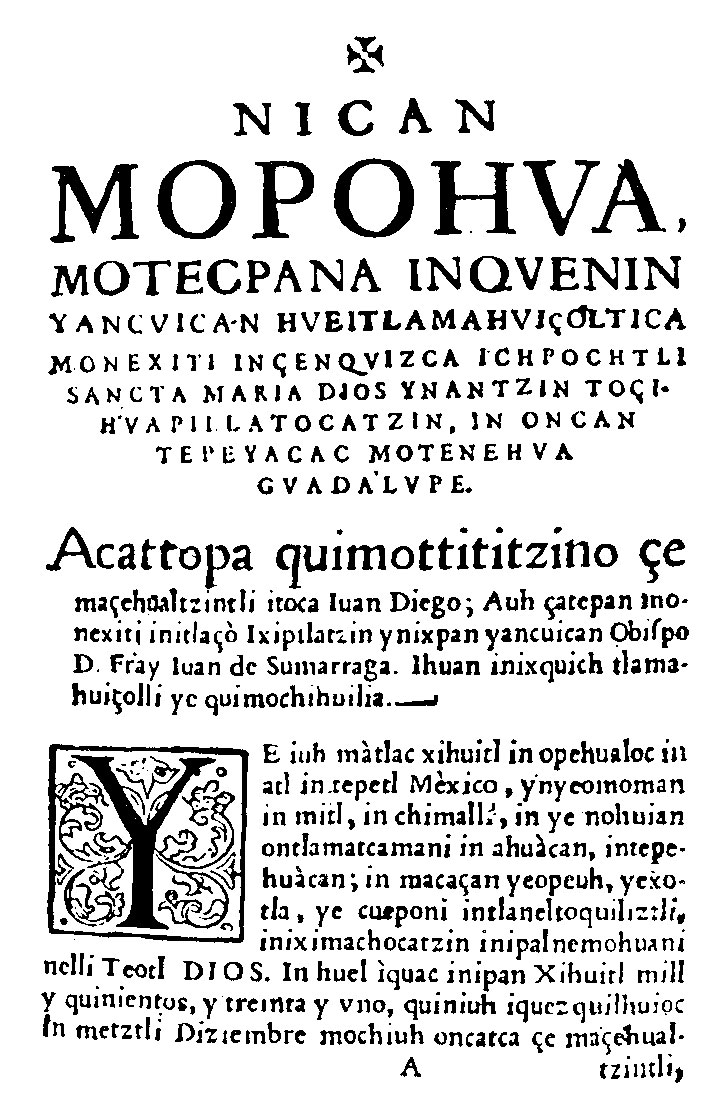 Nican Mopohua Al día siguiente, domingo 10, Juan Diego volvió a encontrar al prelado, quien lo examinó en la doctrina cristiana y le pidió pruebas objetivas en confirmación del prodigio. Ese mismo día tuvo lugar la tercera aparición en la cual la Virgen María mandó entonces a Juan Diego que al día siguiente, lunes 11, fuera a verla para que le diera la señal que haría que le creyera. El día lunes 11 Juan Diego no fue al Tepeyac porque halló a su tío Juan Bernardino enfermo. Su tío le pidió a Juan Diego que al día siguiente fuera a Tlaltelolco en busca de un confesor, pues estaba seguro de que iba a morir. Juan Diego obedeció y salió muy de mañana el día martes, 12 de diciembre de 1531, pero recordando que la Virgen lo tenía citado y temeroso de que lo entretuviera y no lo dejara ir en busca del confesor, quiso evitar su encuentro y así, en vez de seguir derecho su camino, subió por entre el Tepeyac y el cerro al que estaba unido pensando rodear el Tepeyac por la ladera que mira al oriente hasta llegar a donde ahora queda el frente de la Basílica y tomar ahí el camino de Tlaltelolco. En su camino la Virgen le salió al encuentro (cuarta aparición) y le explicó la situación de su tío. A esto respondió la Virgen María: «Oye y ten entendido, hijo mío, el más pequeño, que es nada lo que te asusta y aflige; no se turbe tu corazón; no temas esa enfermedad ni otra alguna enfermedad y angustia. ¿No estoy yo aquí, que soy tu madre? ¿No estás bajo mi sombra? ¿No soy yo tu salud? ¿No estás por ventura en mi regazo? No te apene, ni te inquiete otra cosa; no te aflija la enfermedad de tu tío, que no morirá de ella: está seguro de que ya sanó». Juan Diego convencido de lo que le dijo, pidió a la Virgen que le diera la señal y el mensaje para llevarlos al obispo.   Códice escalada o Códice 1548 La Virgen entonces le dijo que subiera a la cumbre del cerrito donde solía verlo y que cortara las flores que allí encontraría, invitándole a subir hasta la cima de la colina de Tepeyac para recoger flores y traérselas a ella. No obstante la fría estación invernal y la aridez del lugar, Juan Diego encontró varias flores entre ellas rosas de Castilla. Una vez recogidas las colocó en su «tilma» y se las llevó a la Virgen, que le mandó presentarlas al obispo como prueba de veracidad. Una vez ante el obispo el santo abrió su «tilma» y dejó caer las flores mientras que en el tejido apareció, inexplicablemente impresa, la imagen de la Virgen de Guadalupe, que desde aquel momento se convirtió en el corazón espiritual de la Iglesia en México. 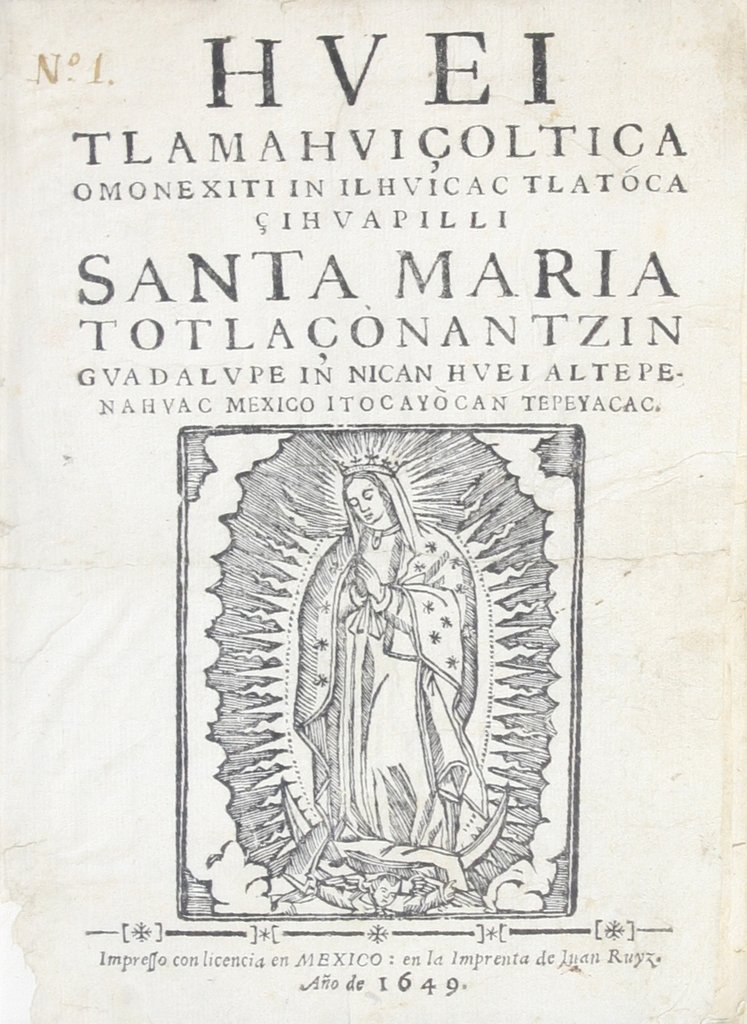 Huei Tlamahuizoltica Según la tradición católica, la imagen que hoy día se expone en la Basílica de Guadalupe sería la misma que la de ese día del año 1531, y que se imprimió en el ayate, el cual ha sido objeto de numerosos estudios por diversos especialistas, de múltiples nacionalidades en los diferentes siglos. Juan Diego no volvió a su casa sino hasta el día siguiente, pues el obispo lo detuvo un día más. Aquella mañana le dijo: «Ve a mostrarnos dónde es la voluntad de la Señora del Cielo que se le erija su templo». Juan Diego condujo a las personas que el obispo dispuso que lo acompañaran al lugar en que se había aparecido la Virgen y en el que debería erigirse su Santuario y pidió permiso de irse, pero no lo dejaron ir solo, sino que lo acompañaron a su casa. Al llegar vieron que su tío, Juan Bernardino, estaba perfectamente sano; Juan Diego explicó a su tío el motivo por el que él llegaba tan bien acompañado y le refirió las apariciones y que la Virgen le había dicho que él estaba curado. El tío, al oír el relato de su sobrino Juan Diego, manifestó que ciertamente la misma Señora lo había sanado, puesto que a él mismo se le había aparecido (quinta aparición) y añadió que le había dicho que dijera al obispo que era su voluntad que se le llamara «la Siempre Virgen Santa María de Guadalupe». 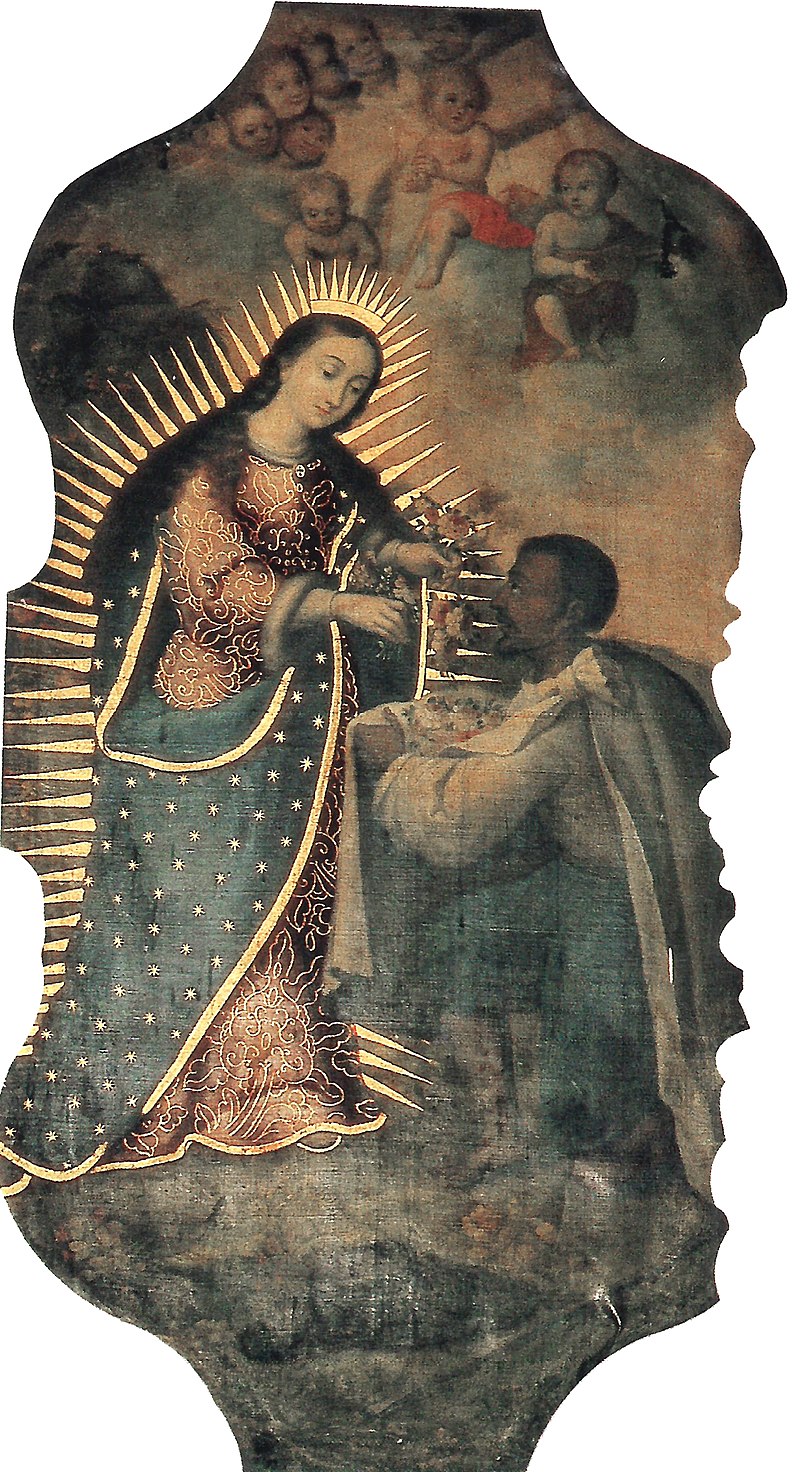 Tercera aparición de la Virgen de Guadalupe a Jun Diego Con el tiempo, Juan Diego, movido por una tierna y profunda devoción a la Madre de Dios, dejó a los suyos, la casa, los bienes y su tierra y, con el permiso del obispo, pasó a vivir en una pobre casa junto al templo de la «Señora del Cielo». Su preocupación era la limpieza de la capilla y la acogida de los peregrinos que visitaban el pequeño oratorio, hoy transformado en basílica, símbolo elocuente de la devoción mariana de los mexicanos a la Virgen de Guadalupe. Juan Diego Cuauhtlatoatzin, laico fiel a la gracia divina, gozó de tan alta estima entre sus contemporáneos que estos acostumbraban decir a sus hijos: «Que Dios os haga como Juan Diego».[11] Juan Diego murió en 1548, con fama de santidad. Su memoria, siempre unida al hecho de la aparición de la Virgen de Guadalupe, atravesó los siglos, alcanzando América, Europa y Asia. Antecedentes En el contexto de la Reconquista española, dos fueron las imágenes que adquirieron notoriedad como parte de este movimiento social, político y religioso en parte del actual territorio de España: Santiago —incluso su advocación de Matamoros— y la Virgen de Guadalupe (Extremadura, España) teniendo una importante presencia en la naciente hispanidad.[6] Esta imagen, venerada en el Real Monasterio de Santa María de Guadalupe de Extremadura, tuvo un auge a partir del siglo xiv y hasta el xvii.[6] Según la tradición católica, esta imagen llamada también Virgen morena fue esculpida por el propio apóstol Lucas, y fue hallada en el siglo xii cerca del río Guadalupe en la región de Las Villuercas.[6] Algunas coincidencias del relato mariano de Guadalupe en España encontrarán coincidencias posteriores en el de la Nueva España,[6] por ejemplo, la aparición en un entorno rural de manera casual a un vidente de bajo estrato social, el hallazgo e incredulidad de las autoridades religiosas que piden una prueba, la plasmación de su propia imagen en un objeto que dará al vidente, la sanación de un enfermo o la resucitación de un muerto como primeros milagros así como la orden de la construcción de un templo en donde se honre su hallazgo.[6] En el mismo monasterio de Extremadura existe una representación popularmente considerada el precedente iconográfico de la virgen mexicana. Se trata de la talla de Nuestra Señora de la Concepción del Coro, o Virgen del Coro, por estar situada en el testero del coro del citado recinto monacal. Muy probablemente la imagen mexicana de Guadalupe influyó iconográficamente en la imagen de Nuestra Señora de la Concepción del Coro y no al revés, como algunos otros autores habían sostenido.[12] |
歴史 マリアの物語 参照:付録:カトリック教会が認めたグアダルーペの聖母に関する歴史的文書  ニカン・モポワ原典 カトリックの伝統によれば、教会が認めた歴史的文書の集合体、そして本質的にはニカン・モポワの記述[6]によると、いわゆるグアダルーペの奇跡は次のように起こった。 聖人フアン・ディエゴ・クアウトラトアツィンは、1474年にクアウティトラン(当時はテスココ王国、チチメカ族の領土)で生まれた。彼の名はクアウトラトアツィンであり、母国語では「話す鷲」または「鷲と話す者」を意味していた。 大人になり、家庭を持った彼は、1524年にメキシコに到着したフランシスコ会の教義に惹かれ、洗礼を受け、スペイン語の名前フアン・ディエゴを授かった。妻はマリア・ルシアと名乗った。キリスト教式の結婚式も挙げられた。妻は1529年に亡くなった。 ニカン・モポワは、1531年12月9日土曜日、トラテロルコへ徒歩で向かう途中、テペヤックという場所で、聖母マリアが初めて現れ、「永遠の聖母マリ ア、真の神の母」として彼に現れたと伝えている。聖母は、首都の司教であるフランシスコ会のフアン・デ・スマルガに、彼女の名前で、出現した場所に教会を 建設するよう依頼するよう彼に命じた。司教がその考えを受け入れなかったため、フアン・ディエゴは同じ日に再び聖母に会い、彼女は彼にその要求を続けるよ う求めた(2度目の出現)。  ニカン・モポワ 翌日、10日(日曜日)、フアン・ディエゴは再び司教に会い、キリスト教の教義について問われ、奇跡を裏付ける客観的な証拠を求められた。その日、3度目 の出現があり、聖母マリアはフアン・ディエゴに、翌日11日(月曜日)に彼女に会いに行き、彼女を信じるようになるためのしるしを与えるよう命じた。 11日(月曜日)、フアン・ディエゴはテペヤックに行かなかった。叔父のフアン・ベルナルディーノが病気だったからだ。叔父は、自分が死ぬと確信していた ため、翌日、告解司祭を探すためにトラルテトルコに行くようフアン・ディエゴに頼んだ。フアン・ディエゴは叔父の言うことを聞き、1531年12月12日 火曜日の早朝に出発した。しかし、聖母が彼に会う約束をしていたことを思い出し、聖母に足を止められて告解司祭を探すことができなくなることを恐れたた め、聖母との出会いを避けようとした。まっすぐ進む代わりに、テペヤックとそれに連なる丘の間を登り、東側の斜面をテペヤックを迂回して、現在のバシリカ 正面に至る道を進み、そこからトラルテオコへの道を進むことにした。その道中で聖母は彼に会いに来た(4回目の出現)そして叔父の状況を説明した。これに 対し、聖母マリアはこう答えた。 「よく聞きなさい、私の末っ子よ。あなたを怖がらせ、苦しめているものは何もない。心を乱してはならない。その病気も、他のどんな病気や苦しみも恐れては ならない。私は、あなたの母親である私がここにいるではないか。あなたは私の影の下にいるではないか。私はあなたの救いではないか。あなたは私の膝の上に いないではないか。他のことを悲しんだり、心配したりしてはならない。叔父の病気は、彼を死に至らしめるものではない。彼はすでに癒されていると確信しな さい」と。 フアン・ディエゴは、聖母の言葉を確信し、司教に伝えるためのしるしとメッセージを聖母に求めた。   エスカラダ写本、あるいは写本1548 すると聖母は、彼がいつも会う丘の頂上に登り、そこで見つけた花を摘むよう彼に言った。テペヤックの丘の頂上に登って花を摘み、それを彼女のもとに持って 来るよう彼に勧めたのだ。厳しい冬の季節と、その場所の乾燥にもかかわらず、フアン・ディエゴは、カスティーリャのバラなど、いくつかの花を見つけた。花 を集めた後、彼はそれらを「ティルマ」に入れ、聖母のもとに持っていきました。聖母は、その真実の証として司教に花を見せるよう彼に命じました。司教の前 に立った聖人は「ティルマ」を開き、花をその中に落としました。すると、その布には、説明のつかない形で、グアダルーペの聖母の像が浮かび上がりました。 それ以来、この像はメキシコにおける教会の精神的中心的存在となったのです。  フエイ・トラマウィゾルティカ カトリックの伝統によれば、今日グアダルーペ大聖堂に展示されている像は、1531年のその日にアヤテに刻印されたものと同じであり、何世紀にもわたり、さまざまな国籍の多くの専門家によって研究の対象となってきた。 フアン・ディエゴは、司教がもう一日彼を引き留めたため、翌日まで家に戻らなかった。その朝、司教は彼に「天の聖母が、その聖堂を建てることを望んでいる場所を見せてくれ」と言った。 フアン・ディエゴは、司教が同行を命じた人々を、聖母が現れた場所、つまり聖堂が建てられるべき場所に案内し、帰りの許可を求めた。しかし、彼らは彼を一 人で行かせることはせず、彼の家まで付き添った。家に着くと、叔父のフアン・ベルナルディーノは完全に健康になっていた。フアン・ディエゴは叔父に、なぜ こんなに大勢の付き添いがあるかを説明し、聖母が現れたことや、聖母が叔父は癒されたと告げたことを話した。叔父は、甥のフアン・ディエゴの話に耳を傾 け、確かに聖母自身が彼を癒したのだと述べた。なぜなら、聖母は彼自身にも現れた(5回目の出現)からだ。そして、司教に「永遠の聖母グアダルーペ」と呼 ばれることを望むと伝えたと付け加えた。  グアダルーペの聖母によるフアン・ディエゴへの三度目の御出現 やがて、フアン・ディエゴは、神の母に対する深く優しい信仰心に動かされ、家族、家、財産、土地をすべて捨て、司教の許可を得て、「天の聖母」の寺院のそ ばの貧しい家に住むようになった。彼の関心事は、礼拝堂の清掃と、小さな礼拝堂を訪れる巡礼者たちの接待であった。この礼拝堂は、今日では大聖堂へと変貌 し、メキシコ人の聖母グアダルーペへの敬虔な信仰の象徴となっている。 神の恵みに忠実な信徒、フアン・ディエゴ・クアウトラトアツィンは、同時代の人々から非常に高く評価され、彼らは子供たちに「神があなたをフアン・ディエゴのようにしてくださいますように」とよく言ったという。[11] フアン・ディエゴは1548年に、聖人としての評判とともにこの世を去った。彼の記憶は、グアダルーペの聖母マリアの出現という出来事と常に結びつき、何世紀にもわたってアメリカ、ヨーロッパ、アジアに伝わった。 背景 スペインのレコンキスタ(再征服)の文脈において、現在のスペイン領の一部で、この社会的、政治的、宗教的運動の一部として注目された2つの像があった。 それは、サンティアゴ(その別名であるマタモロスも)と、グアダルーペの聖母(スペイン、エストレマドゥーラ)であり、これらは、誕生しつつあったイスパ ニダにおいて重要な存在であった。[6] エストレマドゥーラのサンタ・マリア・デ・グアダルーペ王立修道院で崇拝されているこの像は、14世紀から17世紀にかけて隆盛を極めた。[6] カトリックの伝統によれば、この像は「褐色の聖母」とも呼ばれ、使徒ルカ自身によって彫刻され、12世紀にラス・ビジェルカス地方のグアダルーペ川近くで 発見されたという。[6] スペインにおけるグアダルーペの聖母に関する物語には、後のヌエバ・エスパーニャ(新スペイン)の物語と一致する点がある。例えば、農村で偶然、社会的地 位の低い予言者に現れたこと、宗教当局が証拠を求めて発見を信じなかったこと、予言者に与えた物に彼女の像が刻まれたこと、病人の治癒や死者の復活といっ た最初の奇跡、そして彼女の発見を称える寺院の建設命令などだ。[6] エクストレマドゥーラにある同じ修道院には、メキシコの聖母像の図像的先例と一般に考えられている像がある。それは、修道院の聖歌隊席の正面にあることか ら、聖歌隊席の聖母、あるいは聖歌隊席の聖母と呼ばれる彫像だ。おそらく、メキシコのグアダルーペの像が、聖歌隊席の聖母の像に図像学的に影響を与えたも のであり、他の著者たちが主張しているような逆ではないだろう。[12] |
La devoción en el siglo xvi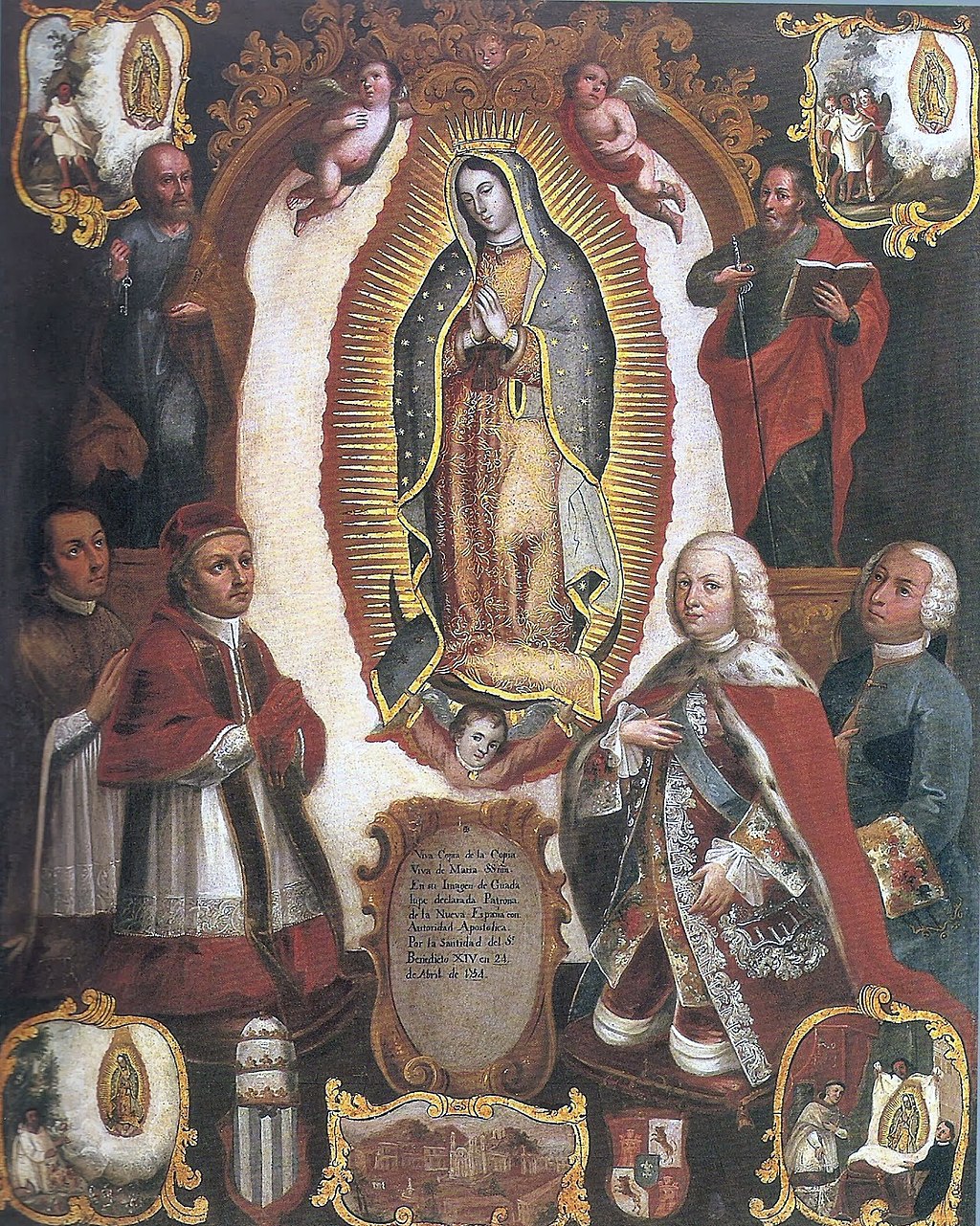 Alegoría de la declaración pontifica de Benedicto XIV el 24 de abril de 1754 del patronato Guadalupano sobre la Nueva España, anónimo novohispano, siglo xviii. Se muestra a la virgen acompañada del propio pontífice, además del Rey Fernando VI de España, San Pedro y San Pablo. Si bien no existe en el corpus epistolar de Zumárraga ninguna mención ni alusión al milagro guadalupano, las narraciones hechas en el siglo xvii[13] indican que el obispo ordenó llevar la imagen a la Catedral de México. La imagen habría sido trasladada al cerro del Tepeyac -o Tepeyacac como aún era conocido- después en una ceremonia fastuosa, presidida por el propio Zumárraga, Juan Diego y el presidente de la Segunda Audiencia, Sebastián Ramírez de Fuenleal. Es en el contexto de dicha procesión en que se cree ocurriría el primer milagro de la virgen, cuando un aborigen que participaba en una representación teatral de una batalla como parte de los fastos, fue herido con una flecha verdadera. Al ser llevado ante la virgen, la herida habría sanado milagrosamente.[13] |
16世紀の信仰 1754年4月24日、ベネディクト14世が新スペインにおけるグアダルーペの守護聖人としての地位を宣言したことを象徴する、18世紀の新スペインの匿名作家による作品。聖母マリアは教皇自身、スペインのフェルナンド6世、聖ペテロ、聖パウロに付き添われている。 スマルガの書簡集にはグアダルーペの奇跡について一切言及や暗示はないが、17世紀の記述[13]によると、司教は像をメキシコ大聖堂へ運ぶよう命じたと いう。この像は、その後、ズマラガ自身、フアン・ディエゴ、第二審裁判所長セバスティアン・ラミレス・デ・フエンレアールが主宰する盛大な式典で、テペ ヤック(当時はテペヤカックとして知られていた)の丘に移された。 この行列の中で、聖母による最初の奇跡が起こったと信じられている。祝祭の一環として戦いの演劇に参加していた先住民が、本物の矢で負傷したのだ。その傷は聖母の御前に運ばれたところ、奇跡的に癒えたという[13]。 |
| Narración en náhuatl El Nican mopohua (‘aquí se narra’, en idioma náhuatl) es el título de la narración en la que se cuentan las apariciones de la Virgen de Guadalupe. El elegante y complejo texto está escrito con sonido náhuatl pero con caracteres latinos. El Nican mopohua está contenido dentro de un libro más amplio, el Huei tlamahuiçoltica publicado en el año de 1649 por el bachiller criollo Luis Lasso de la Vega (1605-1660), capellán del santuario de Guadalupe. El título del Huei tlamahuizoltica se deriva de las dos primeras palabras del texto, impresas en gruesos caracteres en su primera publicación (‘El gran acontecimiento’, que son las dos palabras iniciales del texto). Este Huei tlamahuizoltica incluye ―además del Nican mopohua― textos introductorios, oraciones y el Nican motecpana (‘Aquí se pone en orden’) que es la lista de algunos milagros atribuidos a la Virgen en los años que siguieron a su primera aparición. Luis Lasso de la Vega atribuye el Nican Mopohua a Antonio Valeriano de Azcapotzalco (c. 1520 – c. 1605), que habría sido un indígena noble del siglo anterior (pariente de Moctezuma Xocoyotzin), y quien como estudiante del Colegio de la Santa Cruz de Tlatelolco habría sido uno de los alumnos nahuas de fray Bernardino de Sahagún (1499-1590). Lasso de la Vega además afirma que el indígena Valeriano había oído la historia directamente de labios de Juan Diego Cuauhtlatoatzin (quien ―según el mismo Lasso― habría fallecido en 1548).[cita requerida] Es probable que el manuscrito náhuatl usado por Luis Lasso de la Vega fuera el original de Antonio Valeriano. La mayoría de las autoridades están de acuerdo en esto y en la datación de cuando fue escrito el Nican Mopohua, año 1556.[14][15][16] 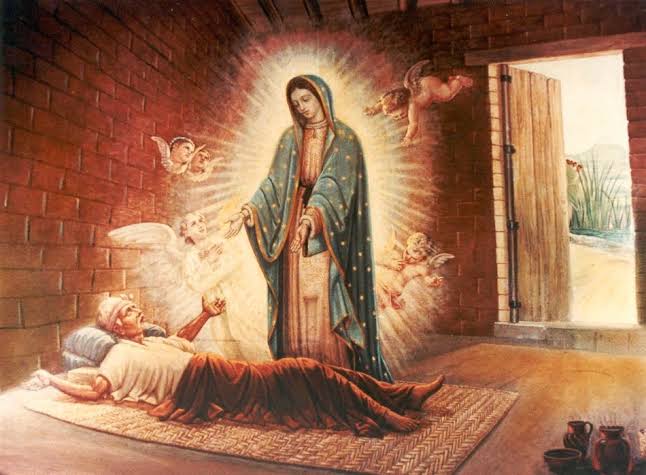 Santa María de Guadalupe se le aparece a Juan Bernardino De hecho una copia parcial muy antigua del manuscrito Nican Mopohua en 16 páginas que se cree podría datar del año 1556 se puede encontrar en la Biblioteca Pública de Nueva York que ha estado allí desde 1880.[16][17] Basándose en la fecha del Primer Concilio Provincial Mexicano ―que se celebró en Ciudad de México entre junio y noviembre de 1555―, Edmundo O'Gorman (1906-1995) opina que Antonio Valeriano había escrito el Nican mopohua en 1556.[15] León-Portilla acepta de la misma manera la hipótesis de O'Gorman.[16] En ese concilio, el arzobispo Montúfar ordenó que se examinaran las historias de los santuarios y de los iconos venerados en México, y que todos los que no tuvieran suficiente fundamento se destruyeran.[cita requerida] El sacerdote católico Luis Becerra Tanco (siglo xvii) cuenta que en una fiesta del 12 de diciembre de 1666 ―solo diecisiete años después de la publicación del Huei tlamahuizoltica ― oyó a unos aborígenes que durante la danza cantaban en náhuatl cómo la Virgen María se le había aparecido al aborigen Juan Diego Cuauhtlatoatzin, cómo había curado al tío de este y cómo se había aparecido en la tilma ante el obispo.[18] La obra está escrita en fina prosa poética (tecpiltlahtolli: ‘lengua noble’)[19] y tuvo varias traducciones, siendo las más difundidas las de: 1666: Luis Becerra Tanco. 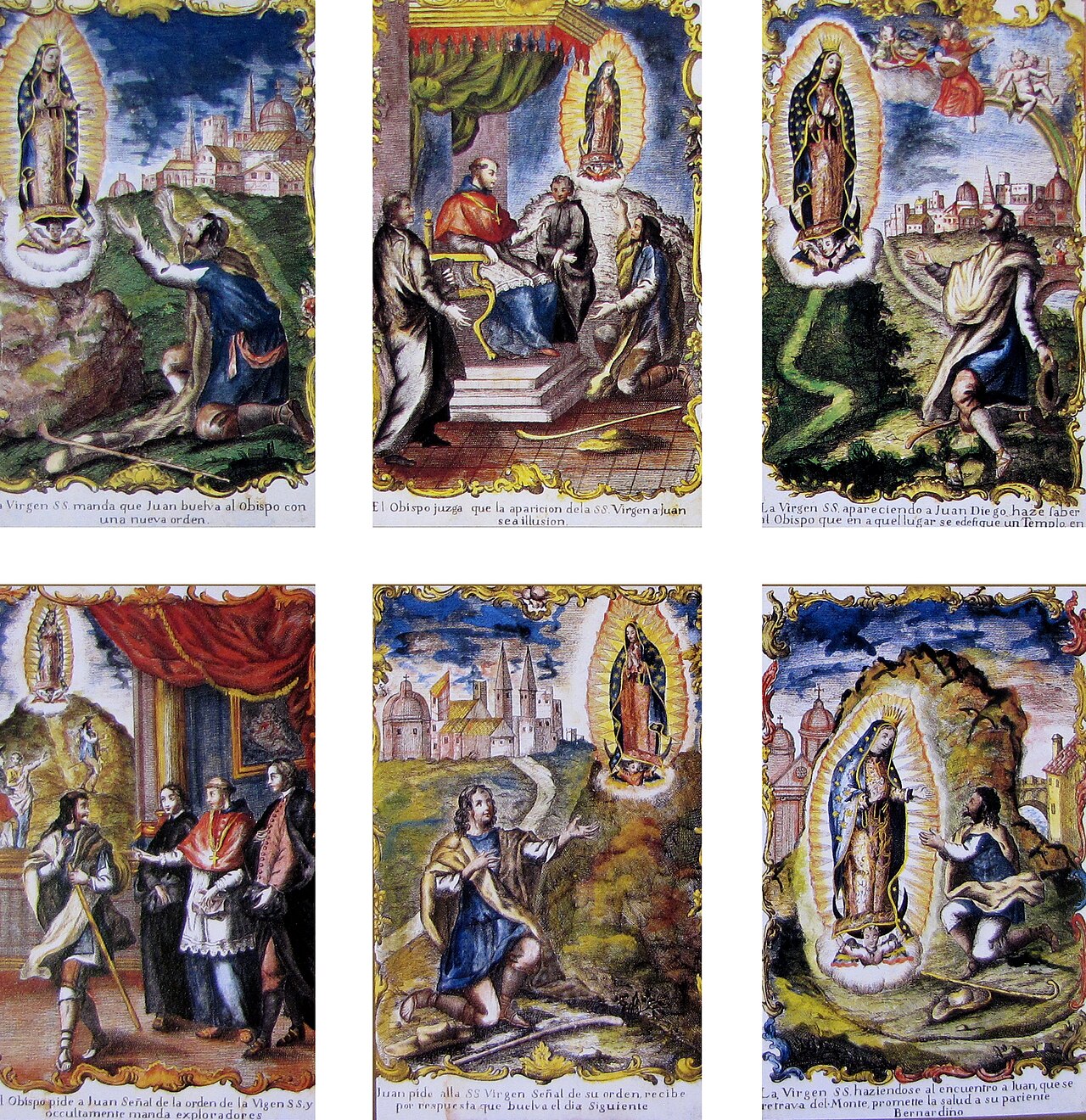 Apariciones de la Virgen de Guadalupe Antes de 1688: Fernando de Alva Ixtlilxóchitl, traducción parafrástica al castellano, que aparece en La estrella del norte de México (1688) de Francisco de Florencia. 1886: Agustín de la Rosa (traducción directa del náhuatl al latín). 1926: Primo Feliciano Velázquez 1978: Mario Rojas Sánchez (de la diócesis de Huejutla). 1978: Ángel María Garibay Kintana (1892-1967). 1989: Guillermo Ortiz de Montellano 2002: Miguel León-Portilla (primera traducción laica). |
ナワトル語による物語 ニカン・モポワ(「ここで語られる」という意味のナワトル語)は、グアダルーペの聖母マリアの出現を語る物語のタイトルである。この優雅で複雑なテキストは、ナワトル語の音で書かれているが、ラテン文字で表記されている。 ニカン・モポワは、1649年にグアダルーペ聖堂の司祭であったクリオージョのルイス・ラッソ・デ・ラ・ベガ(1605-1660)によって出版された、 より広範な書籍『ウエ・トラマウィソルティカ』の中に収められている。『ウエ・トラマウィゾルティカ』のタイトルは、初版で太字で印刷された本文の最初の 2語(「偉大な出来事」、本文の最初の2語)に由来している。この『ウエ・トラマウィゾルティカ』には、『ニカン・モポワ』に加えて、序文、祈りの言葉、 そして『ニカン・モテクパナ(ここで整理する)』が含まれている。これは、聖母マリアが最初に現れてから数年間に、聖母に起因するといわれるいくつかの奇 跡のリストだ。 ルイス・ラッソ・デ・ラ・ベガは、『ニカン・モポワ』の作者をアントニオ・バレリアノ・デ・アスカポツァルコ(1520年頃~1605年頃)と推定してい る。彼は前世紀の貴族(モクテスマ・ショコヨツィンの親族)であり、 彼はトラテロコの聖十字架学院の学生として、フラ・ベルナルディーノ・デ・サアグン(1499-1590)のナワ語を学ぶ生徒の一人であったとされる。 ラッソ・デ・ラ・ベガはさらに、先住民であるバレリアノが、フアン・ディエゴ・クアウトラトアツィン(ラッソ自身によれば、1548年に死去したとされる)から直接その話を聞いたと主張している。[要出典] ルイス・ラッソ・デ・ラ・ベガが使用したナワトル語の手書き原稿は、アントニオ・バレリアノの原本であった可能性が高い。ほとんどの権威者は、この点と『ニカン・モポワ』が1556年に書かれたという年代について一致している。[14][15][16]  サンタ・マリア・デ・グアダルーペがフアン・ベルナルディーノの前に現れる 実際、1656年に書かれたと思われる『ニカン・モポフア』の非常に古い部分的な写本(16ページ)が、1880年からニューヨーク公立図書館に所蔵されている。[16][17] 1555年6月から11月にかけてメキシコシティで開催された第1回メキシコ地方公会議の日付に基づいて、エドマンド・オゴーマン(1906-1995) は、アントニオ・バレリアーノが1556年にニカン・モポフアを書いたと推測している。[15] レオン=ポルティージャも同様にオゴルマンの仮説を受け入れている。[16] この公会議で、モントゥファー大司教は、メキシコで崇拝されている聖地や聖像の歴史を調査し、十分な根拠のないものはすべて破壊するよう命じた。[要出典] カトリックの司祭ルイス・ベセラ・タンコ(17世紀)は、1666年12月12日の祝祭で―『ウエ・トラマウィゾルティカ』の出版からわずか17年後― ― 祭りの席で、先住民たちがナワトル語で、聖母マリアが先住民フアン・ディエゴ・クアウトラトアツィンに現れ、彼の叔父を癒し、司教の前にティルマ(マン ト)に現れたことを歌っているのを聞いたと記している。[18] この作品は、洗練された詩的な散文(tecpiltlahtolli:「高貴な言葉」)で書かれており、いくつかの翻訳がある。最も広く普及しているのは以下のものだ。 1666年:ルイス・ベセラ・タンコ。  グアダルーペの聖母の御出現 1688年以前:フェルナンド・デ・アルバ・イストリルショチトル、スペイン語への意訳、フランシスコ・デ・フローレンシアの『メキシコ北部の星』(1688年)に掲載。 1886年:アグスティン・デ・ラ・ロサ(ナワトル語からラテン語への直訳)。 1926年:プリモ・フェリシアーノ・ベラスケス 1978年:マリオ・ロハス・サンチェス(ウエフジュトラ教区)。 1978年:アンヘル・マリア・ガリバイ・キンタナ(1892-1967)。 1989年:ギジェルモ・オルティス・デ・モンテジャーノ 2002年:ミゲル・レオン=ポルティージャ(最初の世俗的翻訳)。 |
| Guadalupe su nombre El nombre Guadalupe fue el nombre dado por la propia Virgen a Juan Diego, y declaró su nombre exacto como: “que bien así se le nombrara: “La perfecta Virgen Santa María de Guadalupe” y aparece registrado en los primeros documentos sobre el Gran acontecimiento, tanto en Códice escalada (1548), como en Nican Mopohua (1556) y Huei Tlamahuizoltica (1649).[20] Luis Becerra Tanco en 1675 utilizó “Tequatlanopeuh” ó Teqntaxopeuh”, lo que fue motivo de controversias.[21] que podría provenir del término náhuatl «coatlaxopeuh», que se pronuncia «quatlasupe», con lo que su valor fónico resulta parecido al de la palabra en español «Guadalupe». «Coa» significa «serpiente», «tla» equivale al artículo «la», mientras que «xopeuh» significa «aplastar», con lo que quedaría constituida la expresión «la que aplasta la (cabeza de la) serpiente».[21][22][23] 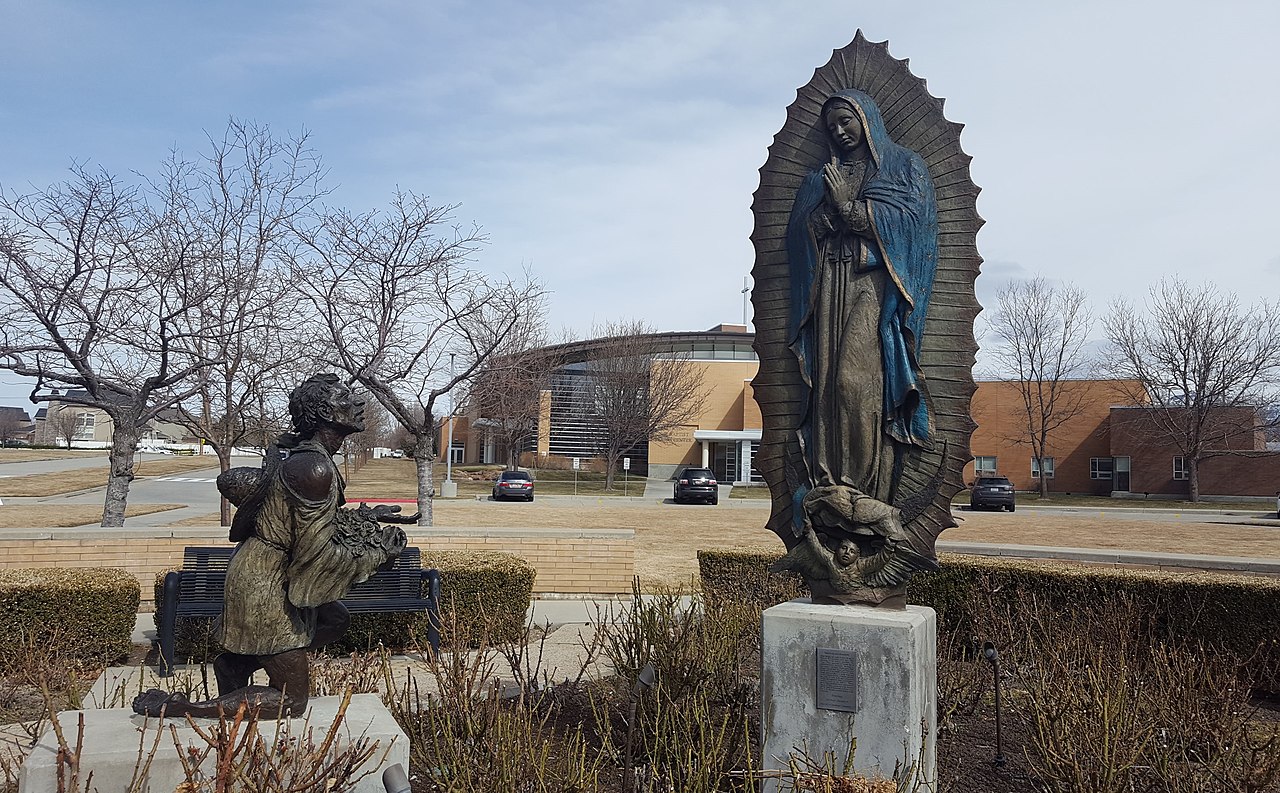 Imagen e Nuestra Señora de Guadalupe en una escuela de Draper Utah E.U.A. Si bien ya existía el nombre y otra Virgen de Guadalupe (en Extremadura), la palabra «Guadalupe» tiene un primer componente árabe -presente en diversos topónimos españoles- que es "wādī" (وَادِي = "cauce, río"), existiendo controversia en la segunda parte del nombre. Una teoría afirma que podría venir de «wadi al-iub», que significa «río de cantos negros»[23] o, según una deformación señalada por Ana Castillo, «río de amor» o «río de luz».[21][24] Otras etimologías populares incluyen la señalada por David Brading: «wadi-lupi» que significa «río de lobos»,[21] en referencia a los animales que podrían abrevar en las cercanías del santuario,[23] o a la capacidad de la advocación para vencer la idolatría.[21] Internacionalización La fidelidad se expande durante la época colonial, extendiéndose a partir de la Ciudad de México en un primer plano, hacia sus alrededores, por el sur hasta la Capitanía General de Guatemala, el Virreinato de Nueva Granada y el Virreinato del Perú, por el norte hasta la Alta California, el Territorio de Nutca, las Provincias Internas y el Territorio de La Luisiana, por el este hasta España, la Capitanía General de Cuba, la Capitanía General de Santo Domingo y la Provincia de La Florida; y, por el oeste hasta la Capitanía General de Filipinas y la Gobernación de Taiwán. Basílicas fuera de México Basílica de Nuestra Señora de Guadalupe, en Antiguo Cuscatlán, El Salvador. Basílica Nuestra Señora de Guadalupe, en la Ciudad de Santa Fe, Argentina |
グアダルーペという名前 グアダルーペという名前は、聖母自身がフアン・ディエゴに与えた名前であり、その正確な名前を「こう呼ぶのがふさわしい」と宣言した。「完璧なる聖母マリ ア・デ・グアダルーペ」と名付けよ」と宣言した。この名前は、この偉大な出来事に関する最初の文書、すなわち『コデックス・エスカラダ』(1548年)、 『ニカン・モポワ』(1556年)、『ウエ・トラマウィゾルティカ』(1649年)にも記録されている。[20] 1675年、ルイス・ベセラ・タンコは「テクアトラノペウ」または「テクンタクソペウ」という表記を使用したが、これは論争の原因となった。[21] この表記は、ナワトル語「コートラソペウ」に由来する可能性がある。これは「クアトラスペ」と発音され、その音価はスペイン語の「グアダルーペ」と似てい る。「コア」は「蛇」を意味し、「トラ」は冠詞「ラ」に相当し、「ショペウ」は「押しつぶす」を意味するため、この表現は「蛇の(頭)を押しつぶす者」と いう意味になる。[21][22][23]  米国ユタ州ドレイパーの学校にあるグアダルーペの聖母像 この名前と別のグアダルーペの聖母(エストレマドゥーラ地方)はすでに存在していたが、「グアダルーペ」という言葉は、スペインのさまざまな地名にも見ら れるアラビア語由来の「wādī」(وَادِي = 「川床、川」)という最初の構成要素を持つ。一方、名前の後半部分については議論がある。ある説では、「wadi al-iub」から来ている可能性があるとされている。これは「黒い石の川」[23]、あるいはアナ・カスティーヨが指摘した変形説によれば「愛の川」あ るいは「光の川」を意味する。[21][24] 他の一般的な語源としては、デイヴィッド・ブレイディングが指摘した「wadi-lupi」がある。これは「狼の川」を意味し[21]、聖域の近くで水 を飲む動物たち[23]、あるいは偶像崇拝を打ち負かす聖人の力[21]を指している。 国際化 忠誠心は植民地時代に拡大し、メキシコシティを中心に、その周辺、南はグアテマラ総督府、ヌエバ・グラナダ副王領、ペルー副王領、 北はアルタ・カリフォルニア、ヌトカ領、内陸諸州、ルイジアナ領、東はスペイン、キューバ総督府、サントドミンゴ総督府、フロリダ州、西はフィリピン総督 府、台湾総督府にまで広がった。 メキシコ国外の聖堂 エルサルバドル、アンティグオ・クスカトランにあるグアダルーペの聖母聖堂。 アルゼンチン、サンタフェ市にあるグアダルーペの聖母聖堂。 |
Origen de la veneración a la Virgen de Guadalupe en el Tepeyac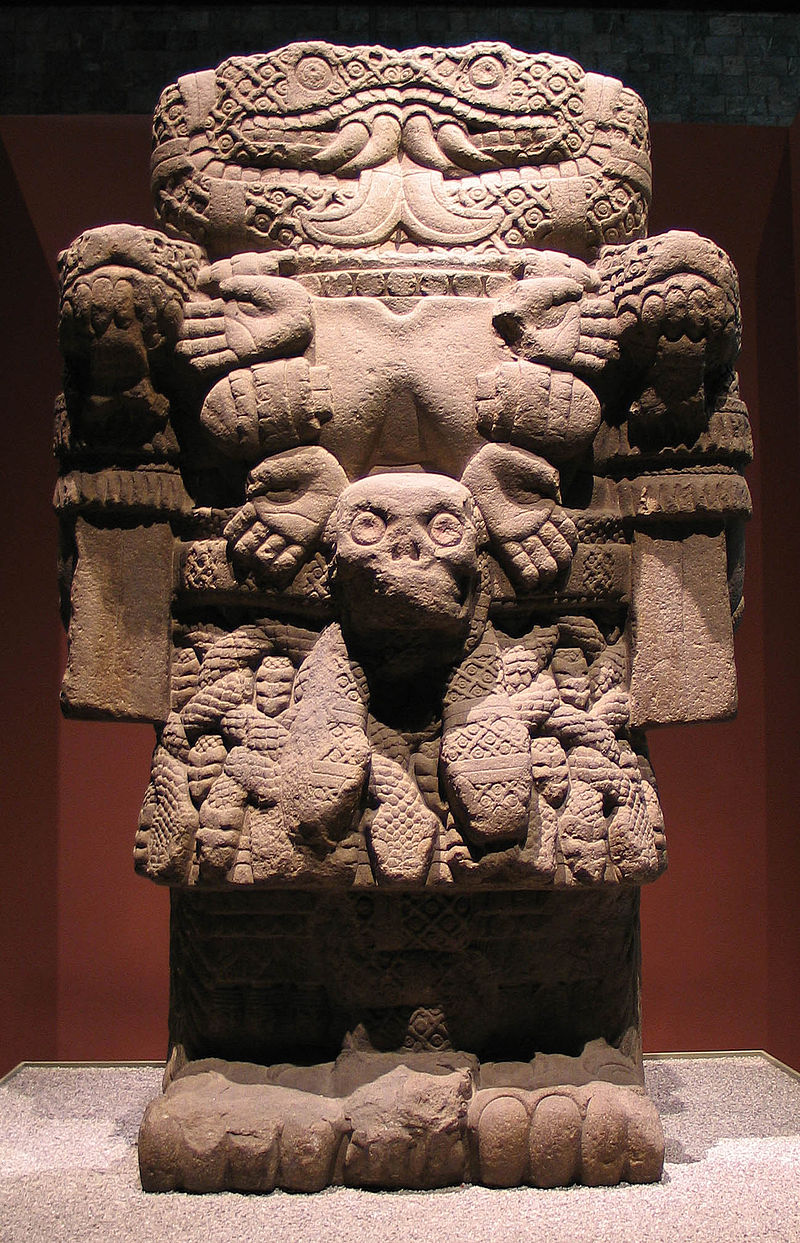 Estatua de Coatlicue exhibida en el Museo Nacional de Antropología (México) Desde la época prehispánica, el Tepeyac había sido un centro de devoción religiosa para los habitantes del valle de México.[25][26] En esta eminencia geográfica localizada en lo que fuera la ribera occidental del lago de Texcoco se encontraba el santuario más importante de la divinidad nahua de la tierra y la fertilidad. Esta diosa era llamada Coatlicue (cóatl-cuéitl, ‘señora de la falda de serpientes’, en náhuatl), que por otros nombres también fue conocida como Teteoinan (téotl-nan, ‘dios madre’, o madre de los dioses, en náhuatl), Toci[27] o Tonantzin (to-nan-tzin, ‘nuestra adorable madrecita’, en náhuatl), nombre que le fue dado posteriormente por los indígenas.[28][29] En contra de estos supuestos, los académicos Cinna Lomnitz y Heriberta Castaños Rodríguez señalaron que no existe una diosa indígena llamada Tonantzin y que en el Tepeyac no se encontró ningún adoratorio indígena —mientras que el valle de México estaba lleno de ellos—, es decir, que no se ha registrado ninguna evidencia arqueológica acerca de un culto prehispánico en el Tepeyac.[30] Poco después de la conquista, en 1525, los franciscanos levantaron, con la intención de promover un culto de sustitución, una pequeña ermita. La decisión de mantener una ermita ocurrió en el marco de una intensa campaña de destrucción de las imágenes de los dioses mesoamericanos, a los que se veía como una amenaza para la cristianización de los indígenas.[31] Décadas más tarde, no solo los indígenas acudían a la ermita del Tepeyac a venerar ―según documentos de la época― la imagen aparecida de la Virgen María. En efecto, a mediados del siglo xvi, la devoción hacia la imagen se había extendido entre los criollos. La tradición católica cree que la aparición de la imagen de la Virgen de Guadalupe fue en el año 1531, diez años después de la caída de México-Tenochtitlan en manos de los españoles. El solsticio de invierno de 1531 tuvo lugar el día 12 de diciembre, de acuerdo con la UNAM.[32][33][34][35] Esta fecha aparece registrada en el Nican mopohua (uno de los capítulos que integran el Huei tlamahuizoltica, obra en lengua náhuatl publicada por Luis Lasso de la Vega) y que la tradición atribuye al indígena Antonio Valeriano.[36] En 1555, Montúfar ordenó la remodelación de la ermita y la confió al clero secular.[37] Los primeros registros de la aparición de la imagen mariana en la ermita corresponden precisamente a los años de 1555 y 1556. Entre otros testimonios tempranos del suceso se encuentran los Diarios de Juan Bautista y los Anales de México y sus alrededores. El primer documento afirma que «en el año de 1555 fue cuando se apareció Santa María de Guadalupe, allá en Tepeyacac»,[38] mientras que los Anales ubican el suceso un año más tarde: «1556 XII Pedernal: descendió la Señora a Tepeyácac; en el mismo tiempo humeó la estrella».[39]En el siglo xvii, el chalca Domingo Francisco Chimalpahin Quauhtlehuanitzin recogería los primeros documentos en sus Relaciones de Chalco Amaquemecan, en los cuales ubica el suceso en 1556: Año 12-Pedernal, 1556 años. Iba quedando bien doblado y fuerte el muro de piedra que daría la vuelta a toda la ciudad de México. Para la obra hicieron reunir a toda la gente de todos los pueblos del rumbo, por orden de los jefes y según disposiciones de don Luis de Velasco, Visurrey. Así pudo terminarse la muralla. También entonces ocurrió la aparición, dicho sea con respeto, de nuestra querida madre, santa María de Guadalupe en el Tepeyácac.[40]  Tilma de San Juan Diego en la Nueva Basílica. Al fortalecimiento del culto a la Virgen del Tepeyac contribuyó de manera decisiva la realización del Primer Concilio mexicano, que se celebró en la Ciudad de México entre el 29 de junio y el 7 de noviembre de 1555. El concilio fue organizado por el arzobispo Alonso de Montúfar y reunió a numerosos representantes de las órdenes monásticas de la Nueva España, entre ellos al franciscano Pedro de Gante; así como a los obispos Martín Sarmiento de Hojacastro (Tlaxcala), Tomás de Casillas (Chiapas), Juan López de Zárate (Oaxaca) y Vasco de Quiroga (Michoacán).[41]Entre otras cosas, el Primer Concilio de la Iglesia novohispana resolvió reglamentar la manufactura de las imágenes religiosas, especialmente las realizadas por los indígenas. También se decidió favorecer el culto a los santos patrones de cada pueblo y todas las advocaciones marianas.[42] El Primer Concilio mexicano propuso controles a las imágenes que podían ser aceptadas en los templos o lugares de culto, así como la otorgación de licencias para su uso, se pronunció a favor de acabar con las «abusiones de pinturas e indecencia de imágenes» producidas por los indígenas que «no saben pintar ni entienden bien lo que hacen pues pintan imágenes indiferentemente de todo lo que quieren, lo cual todo resulta en menosprecio de nuestra santa fe»[43][44] El 6 de septiembre de 1556, Montúfar predicó una homilía en la cual se pronunciaba partidario de la promoción del culto a la Guadalupana entre los indígenas.[45]El 8 de septiembre de ese mismo año (1556), el arzobispo Montúfar obtuvo una respuesta sumamente crítica por parte de los franciscanos en boca de Francisco de Bustamante.[46]La labor de la Orden Franciscana en la cristianización de América había estado imbuida por la filosofía erasmiana que rechazaba la veneración de las imágenes, de modo que cuando Montúfar se mostró favorable a difundir el culto de la imagen del Tepeyac, lo que obtuvo en respuesta de Bustamante fue que el culto Guadalupano era idolátrico, acusando a Montúfar de ser divulgador de los supuestos milagros de la imagen y el santuario.[47][48] La disputa entre los franciscanos y el arzobispado de México se resolvió en favor de este último. Para ello, Montúfar y sus partidarios tuvieron que moderar su discurso sobre la índole del culto a la Virgen de Guadalupe, aproximándose aparentemente a los preceptos defendidos por los franciscanos.[49] La promoción oficial del culto guadalupano por parte de la Iglesia novohispana se inscribe en un proceso más amplio en el que la perspectiva humanista de los franciscanos y su obra misional fue sustituida por los preceptos adoptados oficialmente por medio de las resoluciones del Concilio de Trento. De acuerdo con estas, la Iglesia debería promover y conservar el culto a las imágenes de Cristo, la Virgen y todos los santos, en una clara reacción contra la iconoclastia protestante que prosperaba en el norte de Europa.[50] 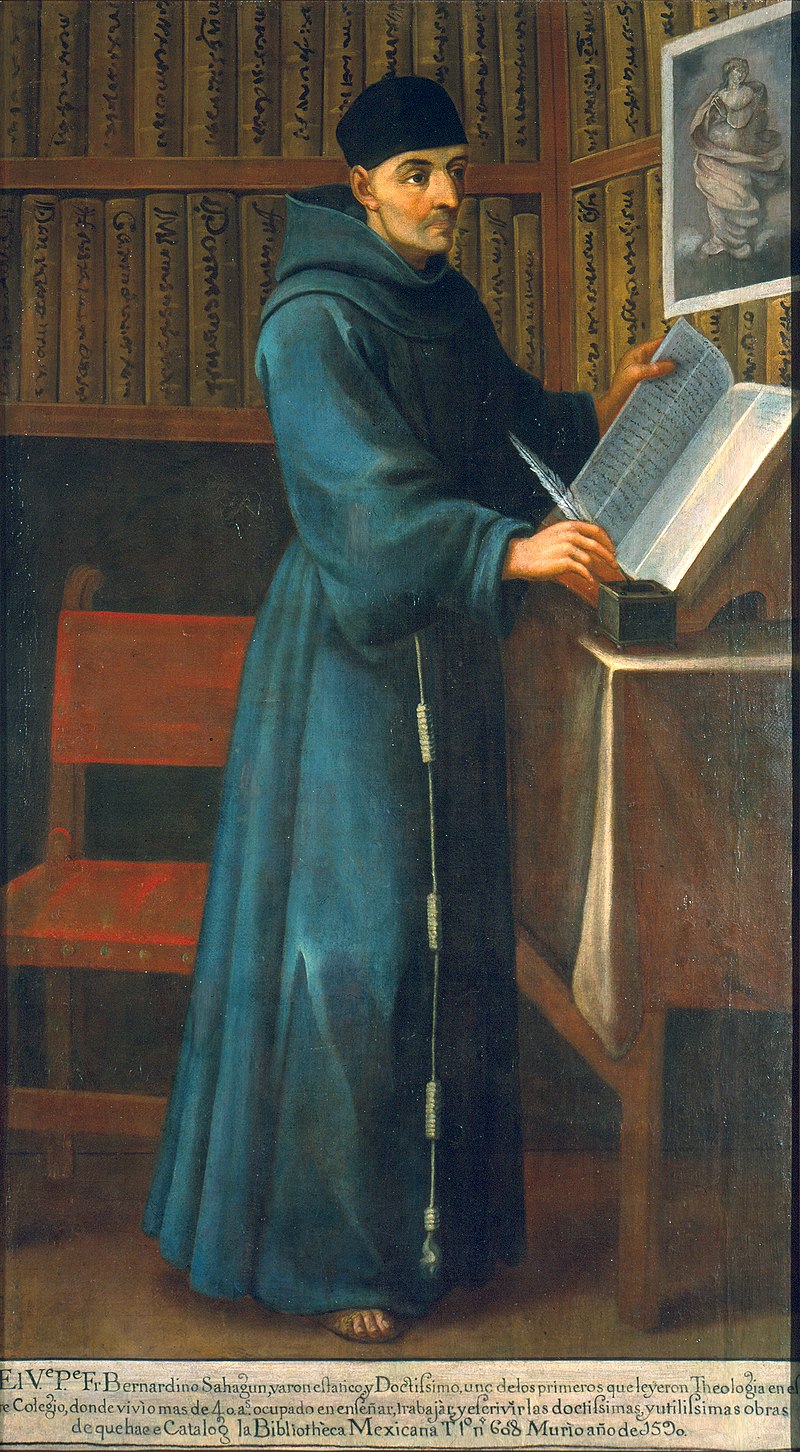 Bernardino de Sahagún (1499-1590), gran conocedor de la cultura y lengua de los nahuas, fue uno de los críticos al culto en Tepeyac y el uso del nombre de Tonantzin para llamar a Nuestra Señora de Guadalupe durante el siglo XVI. De modo pragmático, el arzobispado de México hizo caso omiso de las advertencias vertidas por los franciscanos sobre la confusión que podía generar el culto de la imagen del Tepeyac entre los recién cristianizados indígenas del centro de México. Es en este contexto, según Gruzinski, el lienzo de Guadalupe podría haber sido encargado a una manufactura indígena.[27] En la misma línea Bernardino de Sahagún (1499-1590) expresa su preocupación que podría generar el culto en Tepeyac y el uso del nombre Tonantzin para llamar a «Nuestra Señora de Guadalupe»: Cerca de los montes hay tres o cuatro lugares donde solían hacer muy solemnes sacrificios, y que venían a ellos de muy lejanas tierras. El uno de estos es aquí en México, donde está un montecillo que se llama Tepeacac, y los españoles llaman Tepeaquilla y ahora se llama Nuestra Señora de Guadalupe; en este lugar tenían un templo dedicado a la madre de los dioses que llamaban Tonantzin, que quiere decir Nuestra Madre. Allí hacían muchos sacrificios a honra de esta diosa, y venían a ellos de muy lejanas tierras, de más de veinte leguas de todas estas comarcas de México, y traían muchas ofrendas: venían hombres y mujeres y mozos y mozas. Era grande el concurso de gente en estos días; y todos decían «vamos a la fiesta de Tonantzin»; y ahora que está allí edificada la iglesia de Nuestra Señora de Guadalupe, también la llaman Tonantzin tomada ocasión de los predicadores que a Nuestra Señora la Madre de Dios la llaman Tonantzin. De dónde haya nacido esta fundación de esta Tonantzin no se sabe de cierto, pero esto sabemos de cierto: que el vocablo significa de su primera imposición a aquella Tonantzin antigua, y es cosa que se deberá remediar porque el propio nombre de la Madre de Dios, Señora nuestra, no es Tonantzin sino Dios y Nantzin. Parece esta invención satánica para paliar la idolatría debajo la equivocación de este nombre Tonantzin y vienen ahora a visitar a esta Tonantzin de muy lejos, tan lejos como de antes, la cual devoción también es sospechosa, porque en todas partes hay muchas iglesias de Nuestra Señora, y no van a ellas, y vienen de lejanas tierras a esta Tonantzin como antiguamente. Bernardino de Sahagún (1499-1590): Historia general de las cosas de la Nueva España (1576)[51] |
テペヤックにおけるグアダルーペの聖母への崇拝の起源 国立人類学博物館に展示されているコアトリクエの像 (メキシコ) 先コロンブス時代から、テペヤックはメキシコ盆地の住民にとって宗教的崇拝の中心地であった。[25][26] テスココ湖の西岸に位置するこの地理的に高い場所には、ナワ族の土地と豊穣の神を祀る最も重要な聖域があった。この女神はコアトリクエ(ナワトル語で「蛇 のスカートをまとった女」を意味するコアトル・クエイトル)と呼ばれ、他の名前ではテテオイナン(ナワトル語で「母なる神」、あるいは「神々の母」を意味 するテオトル・ナン)、 トシ[27]、またはトナンツィン(to-nan-tzin、ナワトル語で「私たちの愛すべき母」を意味する)とも呼ばれ、この名前は後に先住民によっ て付けられたものである。[28][29] これらの仮定に反して、学者であるシンナ・ロムニッツとヘリベルタ・カスタニョス・ロドリゲスは、トナンツィンという先住民の女神は存在せず、テペヤック では先住民の礼拝所は発見されなかった(メキシコ盆地にはそのような礼拝所が数多くあったにもかかわらず)と指摘している。つまり、テペヤックにおける先 スペイン時代の信仰に関する考古学的証拠はまったく記録されていないのである。[30] 征服直後の1525年、フランシスコ会は、代替の信仰を促進する目的で、小さな礼拝堂を建てた。礼拝堂を維持するという決定は、先住民のキリスト教化に対 する脅威と見なされていたメソアメリカ神々の像を破壊する激しい運動の中で下されたものである。数十年後、当時の文書によると、先住民だけでなく、テペ ヤックの小礼拝堂に聖母マリアの御姿が現れたと崇拝しに訪れる者もいた。実際、16世紀半ばには、この御姿への信仰はクレオールの間にも広まっていた。 カトリックの伝統では、グアダルーペの聖母の像が現れたのは1531年、メキシコ・テノチティトランがスペインの手に落ちた10年後だと信じられている。 UNAMによると、1531年の冬至は12月12日だった。[32][33][34][35] この日付は、ニカン・モポワ(ルイス・ラッソ・デ・ラ・ベガがナワトル語で出版した作品「ウエ・トラマウィゾルティカ」を構成する章の一つ)に記録されて おり、伝統的には先住民アントニオ・バレリアノによるものとされている。[36] 1555年、モントゥファーは礼拝堂の改築を命じ、それを世俗の聖職者に委託した。[37]礼拝堂に聖母像が現れたという最初の記録は、まさに1555 年と1556年のものだ。この出来事に関する初期の証言としては、フアン・バウティスタの日記や『メキシコとその周辺地域の年代記』などがある。前者の文 書は「1555年に聖マリア・デ・グアダルーペがテペヤカックに現れた」と記している[38]。一方、後者の年鑑は、この出来事を1年後に位置付けてい る。「1556年12月、ペデルナル:聖母がテペヤカックに降り立った。同時に星が煙を上げた」。17世紀、チャルカのドミンゴ・フランシスコ・チマルパ ヒン・クアウトルワニチンは、彼の『チャルコ・アマケメカンに関する報告』の中で、この出来事を1556年に位置づけている。 12-ペデルナル年、1556年。メキシコ市全体を囲む石の壁は、しっかりと曲がりくねった強固なものになっていった。この工事のために、首長の命令と、 副王ドン・ルイス・デ・ベラスコの指示により、周辺のすべての村々から人々が集められた。こうして城壁は完成した。またその頃、敬意を込めて言うが、我ら が愛しき母、聖マリア・デ・グアダルーペがテペヤカックに現れたのである。[40]  新聖堂にあるサン・フアン・ディエゴのティルマ。 テペヤックの聖母への崇拝を強固なものにしたのは、1555年6月29日から11月7日までメキシコシティで開催された第1回メキシコ公会議の開催が決め 手となった。この公会議は、アルフォンソ・デ・モントゥファー大司教によって組織され、フランシスコ会のペドロ・デ・ガンテをはじめ、ヌエバ・エスパー ニャの修道会から多くの代表者が集まった。また、マルティン・サルミエント・デ・オハカストロ(トラスカラ)、トマス・デ・カシージャス(チアパス)、フ アン・ロペス・デ・サラテ(オアハカ)、バスコ・デ・キロガ (ミチョアカン)などの司教も参加した。[41]とりわけ、第一回ヌエバ・エスパーニャ教会公会議は、宗教的な像、特に先住民によって制作された像の製 造を規制することを決定した。また、各町の守護聖人や聖母マリアのすべての呼び名への崇拝を奨励することも決定した。[42] 第1回メキシコ公会議は、寺院や礼拝所で受け入れられる像の規制、およびその使用の許可証の付与を提案し、先住民によって制作された「絵画の乱用や像の猥 褻さ」を終わらせることを支持した。先住民は「絵を描くことも、自分のしていることをよく理解することもできず、好きなものを無差別に描いているため、 その結果、我々の聖なる信仰を軽視することになっている」と述べた。[43][44] 1556年9月6日、モントゥファーは、先住民の間でグアダルーペの崇拝を促進することに賛成する説教を行った。同年(1556年)9月8日、モンチュ ファール大司教は、フランシスコ会からフランシスコ・デ・ブスタマンテを通じて、非常に批判的な返答を受けた[46]。フランシスコ会は、アメリカ大陸の キリスト教化において、偶像崇拝を否定するエラスムスの哲学に深く影響を受けていた。そのため、モントゥファーがテペヤックの像の崇拝を広めることに賛成 の意を示したところ、ブスタマンテはグアダルーペの崇拝は偶像崇拝であるとし、モントゥファーが像と聖域の奇跡を宣伝していると非難したのである。 [47][48] フランシスコ会とメキシコ大司教区との論争は、後者に有利な形で決着した。そのため、モントゥファーとその支持者たちは、グアダルーペの聖母への崇拝の本質に関する発言を控えめにする必要があり、フランシスコ会が擁護する教義に明らかに近づいたのである。[49] ヌエバ・イスパニア教会によるグアダルーペ崇拝の公式な推進は、フランシスコ会の人道主義的視点と宣教活動が、トレント公会議の決議によって公式に採用さ れた教義に取って代わられた、より広範な過程の一部であった。これによれば、教会は、北ヨーロッパで盛んになったプロテスタントの偶像破壊運動に対する明 確な反動として、キリスト、聖母、そしてすべての聖人の像の崇拝を推進し、維持すべきであった[50]。  ナワ族の文化と言語に精通したベルナルディーノ・デ・サアグン(1499-1590)は、16世紀、テペヤックでの崇拝や、グアダルーペの聖母をトナンツィンと呼ぶ慣習を批判した人物の一人である。 現実的に考えて、メキシコ大司教区は、テペヤックの像の崇拝が、メキシコ中部で新たにキリスト教に改宗した先住民の間に混乱を招く可能性があるというフラ ンシスコ会による警告を無視した。グルジンスキーによれば、このような状況の中で、グアダルーペの布は先住民の工房に制作を依頼された可能性があるとい う。[27] 同様に、ベルナルディーノ・デ・サアグン(1499-1590)も、テペヤックでの崇拝や、「グアダルーペの聖母」を指す「トナンツィン」という名称の使用が引き起こす可能性のある懸念について、次のように述べている。 山々の近くには、3、4カ所の場所があり、そこでは非常に厳粛な生贄の儀式が行われていた。人々は遠く離れた土地から、そこへやって来ていた。その一つは ここメキシコにある、テペアカックと呼ばれる小さな丘で、スペイン人はテペアキージャと呼び、現在はグアダルーペの聖母と呼ばれている。この場所には、ト ナンツィン、つまり「我らが母」と呼ばれる神々の母に捧げられた神殿があった。そこでは、この女神を称えるために多くの生贄が捧げられ、20リーグ以上離 れたメキシコの各地から、多くの供え物を持って、男性も女性も、若者も少女も、遠くからやって来た。 この数日間は多くの人々が集まり、皆が「トナンツィンの祭りにいこう」と言っていた。そして今、その場所にヌエストラ・セニョーラ・デ・グアダルーペ教会 が建てられているが、説教者たちが神の母である聖母マリアをトナンツィンと呼んでいることにちなんで、この教会もトナンツィンと呼ばれている。このトナン ツィンの起源がどこにあるかは定かではないが、確かなことは、この言葉は、その古いトナンツィンに最初に付けられた名称を意味しており、それは修正される べきものであるということだ。なぜなら、神の母、我らの聖母自身の名前は、トナンツィンではなく、ディオス・イ・ナンツィン(Dios y Nantzin)だからだ。このトナンツィンという名前の誤りに隠れて偶像崇拝を緩和しようとする、悪魔的な発明のように思える。そして今、人々は遠くか ら、かつてと同じくらい遠くから、このトナンツィンを訪れに来る。この信仰も疑わしい。なぜなら、どこにでも聖母マリアの教会はたくさんあるのに、人々は そこへは行かず、昔と同じように、遠く離れた土地からこのトナンツィンへやって来るからだ。 ベルナルディーノ・デ・サアグン(1499-1590):『新スペインの事物総覧』(1576年)[51] |
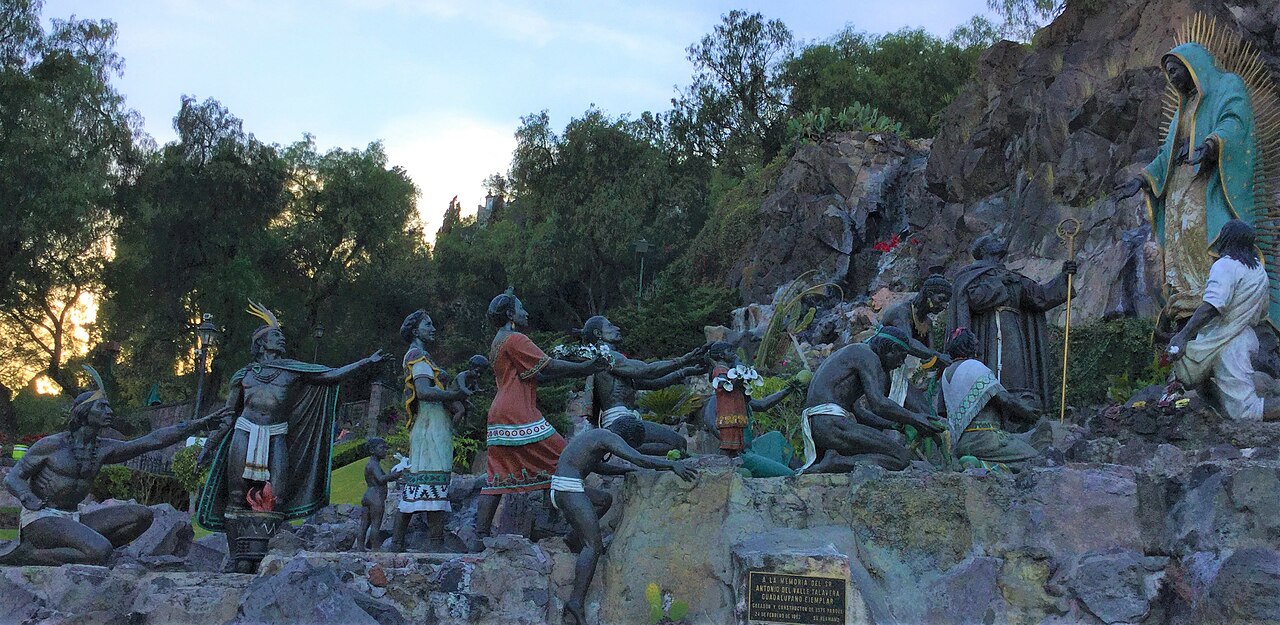 Representación de indígenas venerando a la Virgen de Guadalupe Historicidad La historicidad de la aparición ha sido analizada desde sus inicios. En 1556, con motivo de la celebración de la Natividad de María, Francisco de Bustamante durante un sermón afirmó lo siguiente: La devoción en esta ciudad que ha estado creciendo en nuestra iglesia dedicada a Nuestra Señora, que han intitulado Guadalupe, es gravemente perjudicial para los nativos, porque les hace creer que la imagen pintada por un indio hace milagros. Padre Francisco de Bustamante, sermón del 8 de septiembre de 1556, en el texto Informaciones de 1556.[52] En esos días se encontraba al frente de la arquidiócesis de México, Alonso de Montúfar, quien era conocido como uno de los principales impulsores del culto Guadalupano.[52] En referencia al examen de Philip Serna Callahan a la tilma utilizando cámara infrarroja en 1979, el profesor Jody Brant Smith escribió: "si Marcos la hizo, la hizo sin hacer un boceto preliminar -. En sí mismo un procedimiento casi milagroso [...] El bien pudo haberle echado una mano restaurando la imagen, pero sólo restaurando las adiciones, como el ángel y la luna a los pies de la Virgen"[53] El misionero y lingüista Bernardino de Sahagún (1499-1590), al escribir en 1576 sobre la devoción del Tepeyac en su libro Historia general de las cosas de Nueva España, dijo que el origen del culto a Tonantzin «no se sabía de cierto».[54] 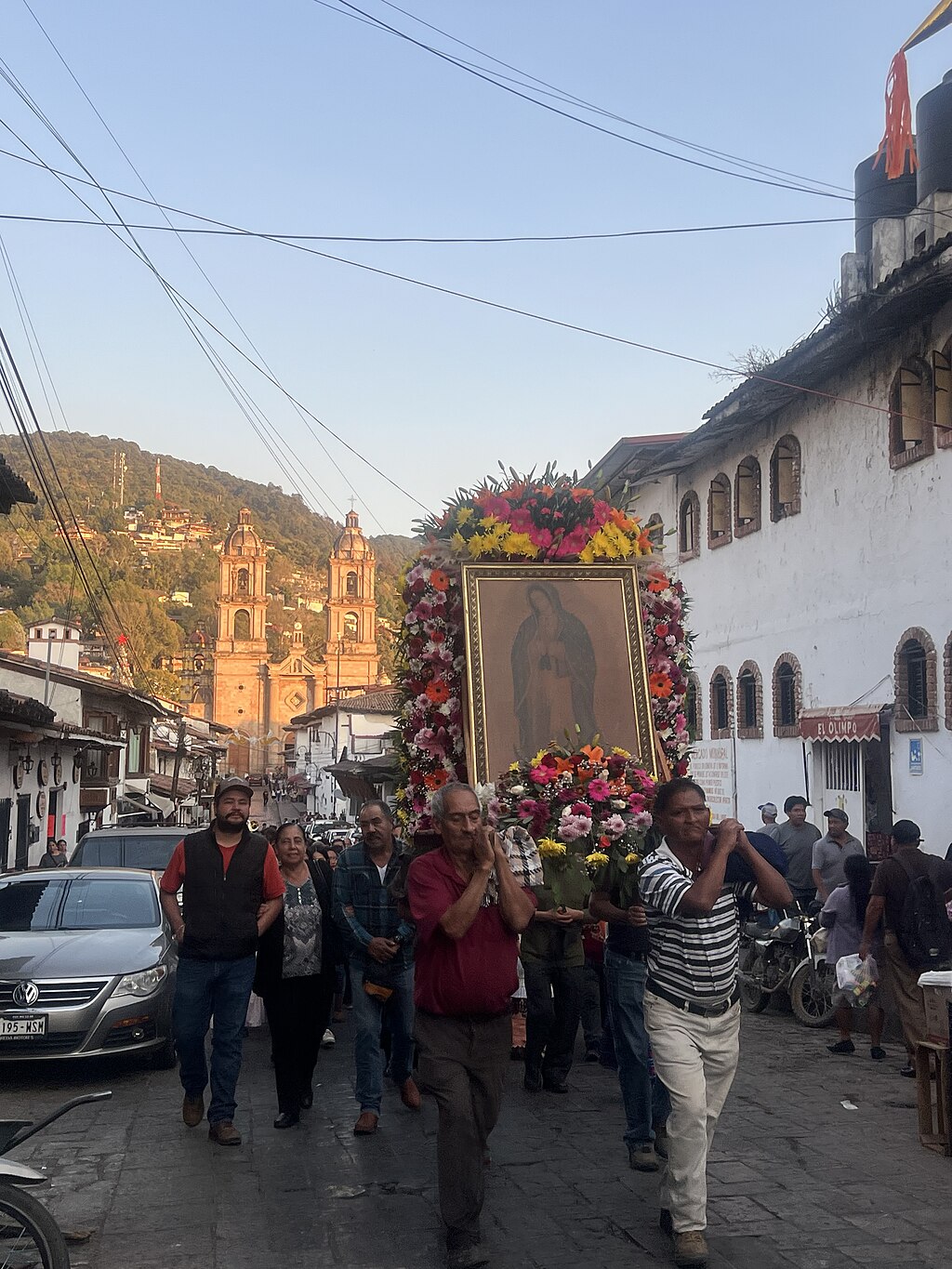 Procesión del Pueblo de Dios, del Día de la Virgen de Guadalupe en Valle de Bravo. Estado e México De acuerdo con Joaquín García Icazbalceta, historiador del siglo xix, fray Juan de Zumárraga (1468-1548) vivió muchos años, y se conservan de él muchas cartas y notas, y una regla cristiana que de acuerdo con Icazbalceta "que si no es suya, como parece seguro, á lo menos fue compilada y mandada imprimir por él". Además agrega que en ninguno de estos textos menciona haber sido testigo del milagro que le adjudicarían más de un siglo más tarde. Por el contrario, dentro de la regla cristiana―que fue publicada en Nueva España antes de su muerte―, se pregunta lo siguiente: «¿Por qué ya no ocurren milagros?». La respuesta es: «Porque piensa el Redentor del mundo que ya no son menester». GARCíA ICAZBALCETA JOAQUíN, Carta acerca del origen de la imagen de Nuestra Señora de Guadalupe de México (Pub. de 1896)[55] En respuesta a los argumentos de Icazbalceta, dos apologistas guadalupanos ―Primo Feliciano Velázquez y Fortino Hipólito Vera― sostuvieron que Zumárraga se refiere a que el Redentor ya no realiza milagros «pedidos por curiosidad»; que el texto no lo escribió Zumárraga, sino solamente lo aprobó como autoridad religiosa; y que, por último, es imposible que Zumárraga negara los milagros que santos medievales y renacentistas habían llevado a cabo según la tradición cristiana.[56] Icazbalceta también negó la historia de la aparición e indicó en un informe confidencial al arzobispo Labastida, en 1883, que nunca existió tal persona llamada Juan Diego Cuauhtlatoatzin. Respondiendo a esta afirmación, varios escritores, entre historiadores, eruditos y religiosos, se han encargado de mostrar documentación como el testamento de la hija de Juan García Martín, documento del siglo xvi que menciona a Juan Diego por su nombre, y las Informaciones jurídicas de 1666, un compendio de testimonios que los indígenas habían dado sobre la existencia y virtudes de Juan Diego:  Imagen de La virgen de Guadalupe en la Basílica Primo Feliciano Velázquez en La aparición de Santa María de Guadalupe.[56] Fortino Hipólito Vera (obispo de Cuernavaca) en Contestación histórico-crítica.[57] Agustín de la Rosa en su Defensa de la aparición guadalupana.[58] Jesús García Gutiérrez mostró una lista de más de 50 documentos históricos guadalupanos en su Primer siglo guadalupano.[59] José Bravo Ugarte en su libro Cuestiones históricas guadalupanas.[60] Mariano Cuevas en su libro Álbum histórico del IV Centenario guadalupano.[61] Joel Romero Salinas en su libro Eclipse guadalupano.[62] El sacerdote historiador estadounidense Stafford Poole[cita requerida] y el antiguo abad de la Basílica de Guadalupe, Guillermo Schulenburg, han rechazado la existencia de Juan Diego. En 1995, Schulenburg declaró a la revista católica mexicana Ixtus lo siguiente: Ixtus: ¿Existió Juan Diego? Schulenburg: No. Es un símbolo, no una realidad. Ixtus: ¿Entonces cómo encaja la beatificación que de él hizo el papa? Schulenburg: Esa beatificación es un reconocimiento de culto, no es un reconocimiento de la existencia física y real del personaje; por lo mismo, no es propiamente una beatificación. Entrevista a Guillermo Schulenburg[63] Meses después, Schulenburg renunció espontáneamente a su cargo de abad de la basílica de Guadalupe, cargo que había ejercido por más de treinta años.[64] En 1897, Eduardo Sánchez Camacho, obispo de Tamaulipas fue forzado a dejar su puesto después de expresar una similar opinión.[cita requerida] En 1999 tras la inminente canonización, un grupo de canónigos de la Basílica encabezados por Schulenburg escribió a Angelo Sodano sobre las serias dudas que tenían de la autenticidad de la existencia histórica de Juan Diego y que ignorar estos informes podría poner en duda la credibilidad y seriedad de la Iglesia.[65] La Santa Sede ordenó una extensa investigación ante la postura de Schulenburg, y finalmente se consideró históricamente probada la existencia de Juan Diego Cuauhtlatoatzin como persona real. Tres historiadores, Eduardo Chávez Sánchez, José Luis Guerrero Rosado y Fidel González Fernández, publicaron las conclusiones de esta investigación en un libro de más de 500 páginas titulado El encuentro de la Virgen de Guadalupe y Juan Diego (México: Porrúa, 1999).[66] |
 グアダルーペの聖母を崇拝する先住民たちの描写 歴史性 この出現の歴史性は、その初めから分析されてきた。1556年、聖母マリアの降誕を祝う際、フランシスコ・デ・ブスタマンテは説教の中で次のように述べた。 この街で、グアダルーペと名付けられた聖母に捧げられた教会で高まっている信仰は、先住民にとって非常に有害だ。なぜなら、インディオが描いた絵が奇跡を起こすと彼らに信じ込ませているからだ。 フランシスコ・デ・ブスタマンテ神父、1556年9月8日の説教、1556年の文書「情報」より。[52] 当時、メキシコ大司教区の長であったアロンソ・デ・モントゥファーは、グアダルーペ崇拝の主要な推進者の一人として知られていた。[52] 1979年にフィリップ・セルナ・キャラハンが赤外線カメラを用いてティルマを調査したことについて、ジョディ・ブラント・スミス教授は次のように記して いる。「マルコスがこれを描いたのであれば、下絵を描かずに描いたことになる。それ自体が、ほとんど奇跡的な手法だ [...] 聖母は、天使や聖母の足元に描かれた月など、追加された部分だけを修復することで、マルコスを助けたのかもしれない」[53] 宣教師であり言語学者でもあるベルナルディーノ・デ・サアグン(1499-1590)は、1576年に著書『ヌエバ・エスパーニャの事物総覧』の中でテペヤックの信仰について記し、トナンツィン崇拝の起源は「確かなことはわからない」と述べた[54]。  バジェ・デ・ブラボの聖母グアダルーペの日に、神の民の行列が行われた。メヒコ州 19世紀の歴史家ホアキン・ガルシア・イカズバルセタによれば、フアン・デ・スマルガ修道士(1468-1548)は長生きし、彼の手紙やメモ、そしてイ カズバルセタによれば「彼自身のものではないとしても、少なくとも彼が編集し、印刷を命じた」キリスト教の規則が数多く残されている。さらに、これらの文 書には、1世紀以上後に彼に帰せられることになる奇跡を目撃したことについて一切言及されていないと付け加えている。それどころか、彼の死前にヌエバ・エ スパーニャで出版されたキリスト教の教訓集の中で、彼は次のように疑問を投げかけている。 「なぜ奇跡はもはや起こらないのか?」。 その答えは、「世界の救い主が、もはや奇跡は必要ないと考えるからである」というものである。 ガルシア・イカズバルセタ・ホアキン、『メキシコのグアダルーペの聖母の像の起源に関する手紙』(1896年出版)[55] イカズバルセタの主張に対して、グアダルーペの2人の擁護者、プリモ・フェリシアーノ・ベラスケスとフォルティーノ・イポリート・ベラは、スマルガが言及 しているのは、救い主が「好奇心から求められた」奇跡をもはや行わないということだ、この文章はスマルガが書いたものではなく、宗教的権威として承認した だけだ、そして最後に、 ズマラガが、キリスト教の伝統に従って中世やルネサンスの聖人たちが行った奇跡を否定することは不可能だとも主張した。[56] イカズバルセタはまた、この出現の物語を否定し、1883年にラバスティダ大司教宛ての秘密報告書の中で、フアン・ディエゴ・クアウトラトアツィンという人物は実在しなかったと述べた。 この主張に対して、歴史家、学者、宗教家など、複数の著者が、フアン・ガルシア・マルティンの娘の遺言(16世紀の文書で、フアン・ディエゴの名前が記載 されている)や、1666年の法的情報(先住民たちがフアン・ディエゴの存在と美徳について述べた証言の要約)などの文書を提示している。  バシリカにあるグアダルーペの聖母像 プリモ・フェリシアーノ・ベラスケス『聖マリア・デ・グアダルーペの出現』[56] フォルティーノ・イポリート・ベラ(クエルナバカ司教)『歴史的・批判的反論』[57] アグスティン・デ・ラ・ロサ『グアダルーペの出現の擁護』[58] ヘスス・ガルシア・グティエレスは、彼の著書『グアダルーペの最初の世紀』の中で、50以上のグアダルーペに関する歴史的文書の一覧を示している。[59] ホセ・ブラボ・ウガルテは、彼の著書『グアダルーペに関する歴史的問題』の中で。[60] マリアーノ・クエバスは、彼の著書『グアダルーペ400周年歴史アルバム』の中で。[61] ホエル・ロメロ・サリナスは著書『グアダルーペの皆既日食』で言及している。[62] アメリカの司祭であり歴史家でもあるスタッフォード・プール[要出典]と、グアダルーペ大聖堂の元修道院長ギジェルモ・シュレンバーグは、フアン・ディエ ゴの存在を否定している。1995年、シュレンバーグはメキシコのカトリック雑誌『イクストゥス』に次のように述べている。 Ixtus:フアン・ディエゴは実在したのか? シュレンバーグ:いいえ。彼は象徴であり、現実の人物ではない。 Ixtus:では、教皇による彼の列福はどのように解釈すべきか? シュレンバーグ:その列福は、崇拝の対象としての認定であり、その人物が実際に物理的に存在したことを認定するものではない。したがって、厳密には列福ではない。 ギジェルモ・シュレンバーグへのインタビュー[63] 数か月後、シュレンブルクは30年以上務めたグアダルーペ大聖堂の修道院長職を自発的に辞任した[64]。1897年、タマウリパス州司教エドゥアルド・サンチェス・カマチョも同様の見解を表明した後、職を辞するはめになった[要出典]。 1999年、列聖が差し迫った後、シュレンブルク率いる大聖堂の聖職者グループは、アンジェロ・ソダーノに、フアン・ディエゴの歴史的存在の信憑性につい て深刻な疑問を抱いていること、また、これらの報告を無視することは教会の信頼性と真剣さを疑わせる可能性があることを書面で伝えた[65]。 聖座はシューレンブルクの立場を受けて広範な調査を命じ、最終的にフアン・ディエゴ・クアウトラトアツィンが実在の人物であったことは歴史的に証明された と結論づけられた。3人の歴史家、エドゥアルド・チャベス・サンチェス、ホセ・ルイス・ゲレロ・ロサド、フィデル・ゴンサレス・フェルナンデスが、この調 査の結論を500ページ以上の本『グアダルーペの聖母とフアン・ディエゴの出会い』(メキシコ:ポルア、1999年)にまとめた。[66] |
| Posible sincretismo Interpretación de la imagen como Anexo;Códice Guadalupe Algunos historiadores[27] califican como un sincretismo la asimilación de la imagen de la Virgen de Guadalupe con la de la deidad mexica Toci[27] en el Tepeyacac ―el cual fue un sitio de adoración de la diosa― proporcionando una forma de que los españoles del siglo xvi ganaran el apoyo de la población indígena de México. Puede haber proporcionando a los indígenas mexicanos del siglo xvi un medio para practicar secretamente su religión previa a la conquista.[27] La crítica de fray Bernardino de Sahagún del culto en el Tepeyac parece haber provenido principalmente de su preocupación por una aplicación sincretista del nombre nativo Tonantzin (Nuestra madre) a la Virgen María. Sahagún lo menciona en uno de sus textos[51] denotando que las peregrinaciones indígenas a ese sitio persistían en la época del fraile. Para la década de los 30 del siglo xvi, y tomando como referente la fecha del Nican Mopohua, el proceso de Conquista de México se encontraba aún en proceso en gran parte del territorio del actual México, y menos de una década atrás iniciaba el esfuerzo imperial español de la evangelización en los territorios conquistados a cargo de las órdenes mendicantes. Según Lafaye[8] en ese entonces en la Nueva España las creencias "eran el producto inestable de aportaciones religiosas heterogéneas, debido a grupos étnicos desiguales", así como "las comunidades indígenas en el mundo rural, los conventos en la sociedad criolla, el medio de los esclavos y de las castas en las ciudades, parecían haber sido focos específicos de apariciones de creencias sincréticas específicamente mexicanas, y de prácticas mágicas" cuyas coincidencias[67] encontraron los recién conquistados a partir de la adopción o la imposición del catolicismo, con sus antiguas creencias. El proceso de conquista y posterior colonización de la Nueva España tuvo consecuencias y cambios radicales en lo político, económico y lo social,[6][68] con la religión católica como manifestación elemental al ser uno de sus más importantes ejes sociales y estar imbricada en todos sus aspectos.[69] Dicho contexto determinaría el origen del culto guadalupano en México y su posterior crecimiento y consolidación. |
シンクレティズムの可能性 画像の解釈:別添資料;グアダルーペ写本 一部の歴史家[27]は、テペヤカック(女神が崇拝されていた場所)におけるグアダルーペの聖母像とメシカ神トシ[27]の像の融合をシンクレティズムと 評価している。これは16世紀のスペイン人がメキシコの先住民からの支持を得る手段となった。それは、16世紀のメキシコ先住民に、征服以前の宗教を密か に実践する手段を提供した可能性がある[27]。 テペヤックでの崇拝に対するフレイ・ベルナルディーノ・デ・サアグンの批判は、主に、先住民の名「トナンツィン(私たちの母)」が聖母マリアに融合的に適 用されていることへの懸念から生じていたようだ。サアグンは、その著作の一つでこのことを言及しており、修道士が活躍した時代にも、先住民によるこの場所 への巡礼が続いていたことを示している。 16世紀の30年代、ニカン・モポフアの出版日を基準とすると、メキシコ征服の過程は現在のメキシコ領の大部分でまだ進行中であり、10年も経たないうち に、スペイン帝国は征服地での布教活動を、托鉢修道会に委託して開始していた。ラファイエ[8]によれば、当時のヌエバ・エスパーニャにおける信仰は、 「不均質な民族集団による、さまざまな宗教的要素が混在した不安定な産物」であり、「農村部の先住民コミュニティ、クレオール社会における修道院、都市部 の奴隷やカースト階級は、 特にメキシコ特有の融合的な信仰や魔術的慣習が生まれた中心地だった」と述べている。その共通点[67]は、カトリックの採用や強制によって、新たに征服 された人々が自分たちの古い信仰に見出したものだった。 ヌエバ・エスパーニャの征服とそれに続く植民地化のプロセスは、政治、経済、社会に抜本的な変化と影響をもたらした[6]、[68]。カトリック教は、最 も重要な社会的軸の一つであり、あらゆる側面に深く関わっていたため、その影響は特に顕著であった[69]。このような状況の中で、メキシコにおけるグア ダルーペの崇拝は誕生し、その後、その影響力は拡大し、定着していったのである。 |
| La Virgen de Guadalupe en la historia de México o guadalupanismo La Virgen María de Guadalupe ha tenido un lugar importante en la historia de México, desde un poco después de la Conquista de México, hasta nuestros días. Independencia 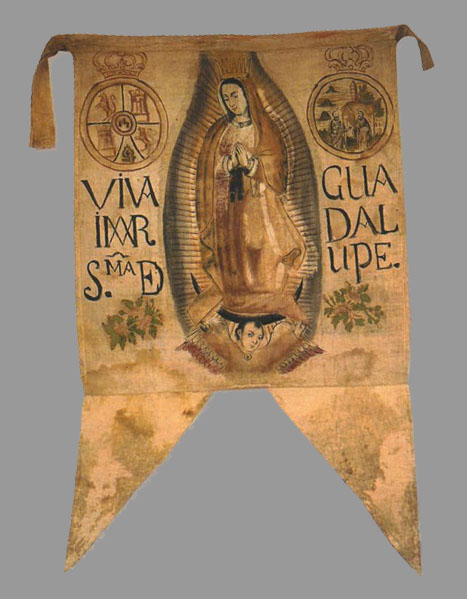 Anverso del estandarte con la imagen de la Virgen de Guadalupe, enarbolado por Miguel Hidalgo y Costilla en la iglesia de Atotonilco (Guanajuato) cuando iba de camino de Dolores a San Miguel el Grande el 16 de septiembre de 1810, horas después del grito de Dolores que dio inicio a la guerra de la independencia de México. 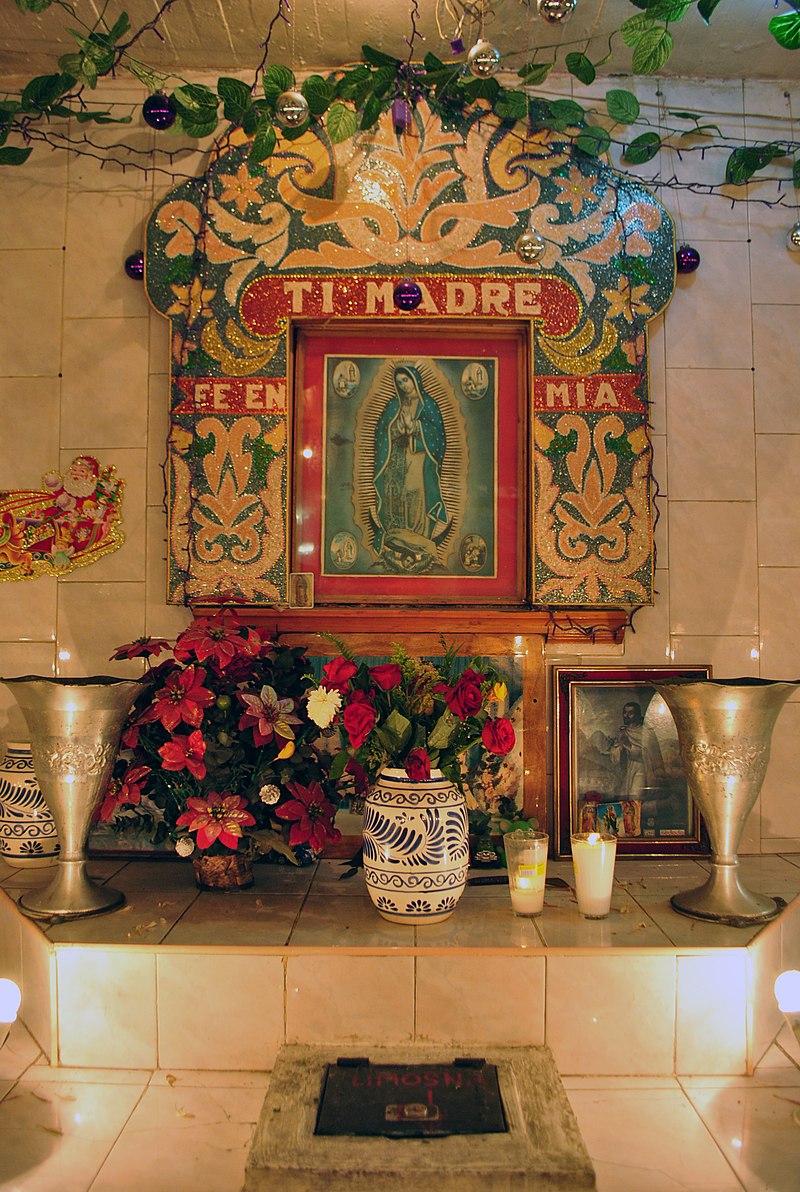 Altar callejero en un mercado de la Ciudad de México. Los Guadalupes, una sociedad secreta con actividad intensa entre 1811 y 1814 impulsada por los ideales liberales insurgentes, tomó su nombre en honor de la Virgen de Guadalupe como símbolo de unidad nacional. Esta sociedad fue una de las principales precursoras de la Independencia de México. El movimiento de independencia de México tuvo como primer estandarte la Virgen de Guadalupe. En su camino de Dolores a San Miguel el Grande, Miguel Hidalgo y Costilla se detuvo a orar en la iglesia de Atotonilco (Guanajuato) mientras sus seiscientos hombres esperaban en el atrio. Al salir enarboló una imagen capaz de unir al pueblo para la empresa de la Independencia Nacional.[70] En el edicto de excomunión contra los insurgentes del 24 de septiembre de 1810, don Manuel Abad y Queipo, obispo de Michoacán, señaló que Miguel Hidalgo y Costilla «pintó en su estandarte la imagen de nuestra augusta patrona, Nuestra Señora de Guadalupe, y le puso la inscripción siguiente: Viva la Religión. Viva nuestra Madre Santísima de Guadalupe. Viva Fernando VII. Viva la América y muera el mal gobierno».[71] El 11 de marzo de 1813, desde Ometepec (estado de Guerrero), José María Morelos expidió un decreto exaltando a la Guadalupana, «para que sea honrada y todo varón declare ser devoto de la Santa Imagen, soldado y defensor de la Patria» y dos años después pediría como última concesión ir a orar a la virgen antes de ser ejecutado en Ecatepec en 1815.[72] |
メキシコの歴史におけるグアダルーペの聖母、あるいはグアダルーペ信仰 グアダルーペの聖母マリアは、メキシコ征服直後から今日に至るまで、メキシコの歴史において重要な位置を占めてきた。 独立  1810年9月16日、メキシコ独立戦争のきっかけとなったドロレスの叫びから数時間後、ミゲル・イダルゴ・イ・コスティージャがドロレスからサン・ミゲ ル・エル・グランデに向かう途中、アトトニルコ(グアナフアト)の教会で掲げた、グアダルーペの聖母像が描かれた旗の表側。  メキシコシティの市場にある街頭祭壇。 1811年から1814年にかけて、反乱軍の自由主義的理想に駆られて活発に活動した秘密結社「グアダルーペ」は、国民的結束の象徴としてグアダルーペの 聖母に敬意を表してその名を取った。この結社は、メキシコ独立の主要な先駆者の一つであった。メキシコ独立運動の最初の旗印は、グアダルーペの聖母であっ た。ドロレスからサン・ミゲル・エル・グランデに向かう途中、ミゲル・イダルゴ・イ・コスティージャはアトトニルコ(グアナフアト)の教会で祈りを捧げ、 600人の部下は中庭で待っていた。教会を出ると、彼は国民を団結させ、国家の独立という大事業に挑むことができる像を掲げた。[70] 1810年9月24日の反乱者に対する破門の布告で、ミチョアカン州司教のマヌエル・アバド・イ・ケイポは、ミゲル・イダルゴ・イ・コスティージャが「そ の旗に、我らが崇高なる守護聖人、グアダルーペの聖母の像を描き、次のような碑文を記した」と述べた。宗教万歳。聖母グアダルーペ万歳。フェルナンド7世 万歳。アメリカ万歳、悪政は滅びよ」と記した」と述べた。[71] 1813年3月11日、 ホセ・マリア・モレロスはオメテペック(ゲレロ州)から、グアダルーペの聖母を称える法令を発布し、「聖母を敬い、すべての男性が聖なる像の信奉者、兵 士、祖国の守護者であることを宣言する」よう求めた。そして2年後、1815年にエカテペックで処刑される前に、聖母に祈りを捧げることを最後の願いとし て求めたのである。[72] |
| Primer Imperio de México Agustín I de México crea la Orden Nacional de Nuestra Señora de Guadalupe. A la abdicación del emperador, en el otoño de 1824 cayó en desuso. México Independiente Manuel Félix Fernández acampaba a un lado del arroyo en la Sierra Mixteca. Uno de sus hombres se atrevió a bajar hasta el agua y fue abatido por los arcabuces enemigos. El bravo general arrojó su sable a la otra orilla y gritó: «Va mi espada en prenda, voy por ella». Toda la tropa lo siguió hasta la victoria y él, agradecido, cambió su nombre por Guadalupe Victoria en agradecimiento a la Virgen por la victoria concedida. Posteriormente sería el primer presidente de México. Otro presidente, el general Vicente Guerrero, peregrinó a Guadalupe para depositar personalmente a los pies de la Virgen las banderas y trofeos ganados a Barradas. Antonio López de Santa Anna, reactiva 30 años después de su fundación la Orden Nacional de Nuestra Señora de Guadalupe y consiguió el reconocimiento de la Iglesia católica en 1854 por disposición del papa Pío IX. Ese mismo año volvió a caer en desuso con el triunfo de la Revolución de Ayutla. Ignacio Manuel Altamirano, en su libro Pasajes y leyendas y costumbres de México, cuenta del presidente, general Juan Álvarez, antiguo insurgente, que «...hizo su peregrinación oficial a la Villa de Guadalupe», y repite la misma frase hablando del general Ignacio Comonfort, también presidente de México. Ya en 1828, el Congreso estableció como fiesta nacional el 12 de diciembre, día de la Virgen de Guadalupe.[73] El gobierno liberal del presidente Benito Juárez, al trasladarse a Veracruz y establecer el calendario de fiestas obligatorias, expidió el 11 de agosto de 1859 un decreto por el cual se declaró día festivo el 12 de diciembre,[13][73] y Sebastián Lerdo de Tejada, Ministro de Justicia, Relaciones y Gobernación, comentó este hecho llamando «intocable» a la fecha guadalupana.[74] En 1856, como miembro del gobierno de reforma del presidente Ignacio Comonfort y mediante la llamada «Ley Juárez», Benito Juárez había acabado con los privilegios de la Iglesia, y mediante la «Ley Lerdo» se justificó la expropiación de su patrimonio, pero sin tocar el Santuario de la Virgen de Guadalupe, política también seguida por los presidentes posteriores, más allá de su abierta posición anticlerical.[73] Valentín Gómez Farías encabeza una moción para «entronizar en el Congreso Nacional a Nuestra Santísima Madre de Guadalupe». |
メキシコ第一帝国 メキシコ皇帝アグスティン1世は、グアダルーペの聖母国家勲章を創設した。1824年秋、皇帝が退位すると、この勲章は廃れた。 独立メキシコ マヌエル・フェリックス・フェルナンデスは、ミテクカ山脈の小川沿いに陣を敷いていた。部下の1人が川まで降りようとしたところ、敵の火縄銃で撃たれた。 勇敢な将軍は、剣を対岸に投げつけ、「剣を賭けて、取りに行く」と叫んだ。全軍は彼に従って勝利を収め、彼は感謝の意を込めて、聖母マリアに勝利をもたら してくれたことへの感謝を込めて、自分の名前をグアダルーペ・ビクトリアに変更した。その後、彼はメキシコ初代大統領となった。 もう一人の大統領、ビセンテ・ゲレロ将軍は、バラダスから奪った旗や戦利品を聖母マリアの足元に直接捧げるため、グアダルーペへ巡礼した。 アントニオ・ロペス・デ・サンタ・アナは、創設から30年後にグアダルーペの聖母国家勲章を復活させ、1854年に教皇ピウス9世の決定によりカトリック教会の承認を得た。しかし、その同じ年、アユトラ革命の勝利により、この勲章は再び廃れた。 イグナシオ・マヌエル・アルタミラノは、著書『メキシコの逸話と伝説と習慣』の中で、元反乱軍将軍であるフアン・アルバレス大統領について、「...グア ダルーペの町へ公式の巡礼を行った」と記している。また、同じくメキシコ大統領であったイグナシオ・コモンフォート将軍についても、同じ表現を繰り返して いる。 1828年、議会は12月12日をグアダルーペの聖母の日として国民の祝日と定めた[73]。ベニート・フアレス大統領の自由主義政権は、ベラクルスに移 転し、祝祭日のカレンダーを制定すると、1859年8月11日に12月12日を祝日とする法令を発布した[13]。[73]。セバスティアン・レルド・ デ・テハダ司法・内務大臣は、この事実について、グアダルーペの日は「手つかず」であると述べた。1856年、イグナシオ・コモンフォート大統領の改革政 権の一員として、ベニート・フアレスは「フアレス法」によって教会の特権を廃止し、「レルド法」によって教会の財産の収用を正当化したが、 しかし、グアダルーペの聖母聖堂は手つかずのまま残された。この方針は、その後、公然と反教権主義の立場をとった大統領たちにも引き継がれた。[73] バレンティン・ゴメス・ファリアスが、「グアダルーペの聖母を国民議会に戴冠させる」という動議を主導した。 |
| Segundo Imperio de México Maximiliano I crea la Orden de Guadalupe una de las órdenes imperiales de México (originalmente Orden Nacional de Nuestra Señora de Guadalupe), conocida oficialmente en el imperio como Orden Imperial de Nuestra Señora de Guadalupe. Siglo xx Manuel Garibi Tortoler cuenta que cuando se dio la orden de expulsar de México al general Plutarco Elías Calles (presidente de la República y fundador del Banco de México), los comisionados para ejecutar la orden lo sorprendieron durmiendo; en la mesa de noche, junto a su lecho, encontraron una imagen de la Virgen de Guadalupe y una lámpara encendida ante ella. El entonces presidente de México Adolfo López Mateos (1958-1964) fue cuestionado en una gira por Venezuela por una periodista quien le preguntó si la imagen de la Virgen de Guadalupe iba a formar parte del intercambio cultural México-Venezuela y la respuesta del presidente mexicano fue: «La imagen de la Virgen de Guadalupe no está sujeta a intercambio alguno, la imagen pertenece al pueblo creyente de México»; en rueda de prensa en Río de Janeiro, afirmó: «La imagen de la Virgen de Guadalupe no es considerada una obra pictórica porque las manos que la pintaron no son de este mundo..., es sin duda la más valiosa reliquia del género religioso que existe en México». En el año 2000, el entonces presidente electo Vicente Fox Quesada al conocer el resultado de las elecciones levantó un estandarte de la Virgen de Guadalupe, así mismo visitó la Basílica de Guadalupe en los días posteriores, hecho que molestó a no creyentes y a grupos masónicos, además de violar la ley al participar en actividades religiosas como representante del Ejecutivo. |
メキシコ第二帝政 マクシミリアン1世は、メキシコの帝国勲章の一つであるグアダルーペ勲章(元々はグアダルーペの聖母国家勲章)を創設した。帝国では正式にグアダルーペの聖母帝国勲章として知られている。 20世紀 マヌエル・ガリビ・トルトラーは、プルタルコ・エリアス・カジェス将軍(共和国大統領、メキシコ銀行創設者)をメキシコから追放する命令が出されたとき、 その命令を実行する委員たちが、彼が眠っているところを発見したと語っている。ベッドサイドのテーブルには、グアダルーペの聖母の像と、その前に灯された ランプがあった。 当時のメキシコ大統領アドルフォ・ロペス・マテオス(1958-1964)は、ベネズエラ訪問中に、グアダルーペの聖母の像がメキシコとベネズエラの文化 交流の一部となるかどうかについて、ジャーナリストから質問を受けた。メキシコ大統領は「グアダルーペの聖母の像は、いかなる交換の対象にもならない。こ の像は、メキシコの信者たちのものである」と答えた。リオデジャネイロでの記者会見で、彼はこう述べた。「グアダルーペの聖母の像は絵画作品とは見なされ ない。なぜなら、それを描いた手はこの世のものではないからだ...。それは間違いなく、メキシコに現存する宗教的遺物の中で最も貴重なものである」。 2000年、当時の大統領当選者ビセンテ・フォックス・ケサダは選挙結果を知ると、グアダルーペの聖母の旗を掲げ、その後数日間でグアダルーペ大聖堂を訪 問した。この行為は、非信者やフリーメイソン団体を不快にさせただけでなく、行政機関の代表として宗教活動に参加したことで法律違反にもなった。 |
| Canonización de Juan Diego Cuauhtlatoatzin Después de que Juan Diego fuera beatificado el 6 de mayo de 1990, en la Basílica de Guadalupe (México),[11] en 1998, la Congregación para las Causas de los Santos decidió crear una comisión histórica para investigar la existencia histórica de Juan Diego Cuauhtlatoatzin. Esta comisión encontró en la tradición oral indígena, decisiva en cualquier estudio de los pueblos mexicanos, y en algunos documentos como el llamado Códice Escalada, fundamentos suficientes para afirmar la historicidad del indígena. El 31 de julio de 2002 el papa Juan Pablo II canonizó a Juan Diego en la basílica de Guadalupe durante uno de sus viajes apostólicos a Ciudad de México.[75] 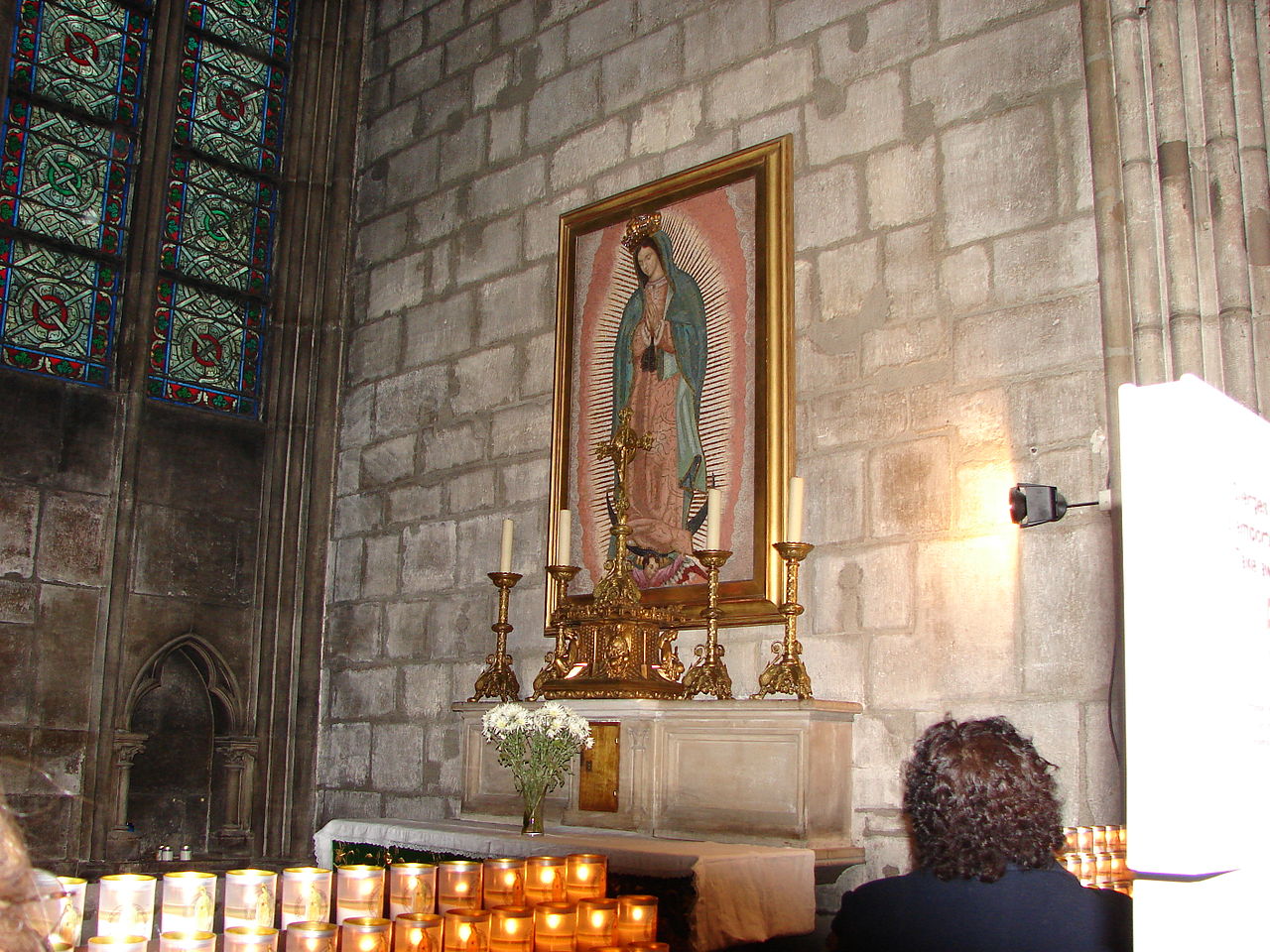 Imagen de la Virgen de Guadalupe en la catedral de Notre Dame, París, Francia 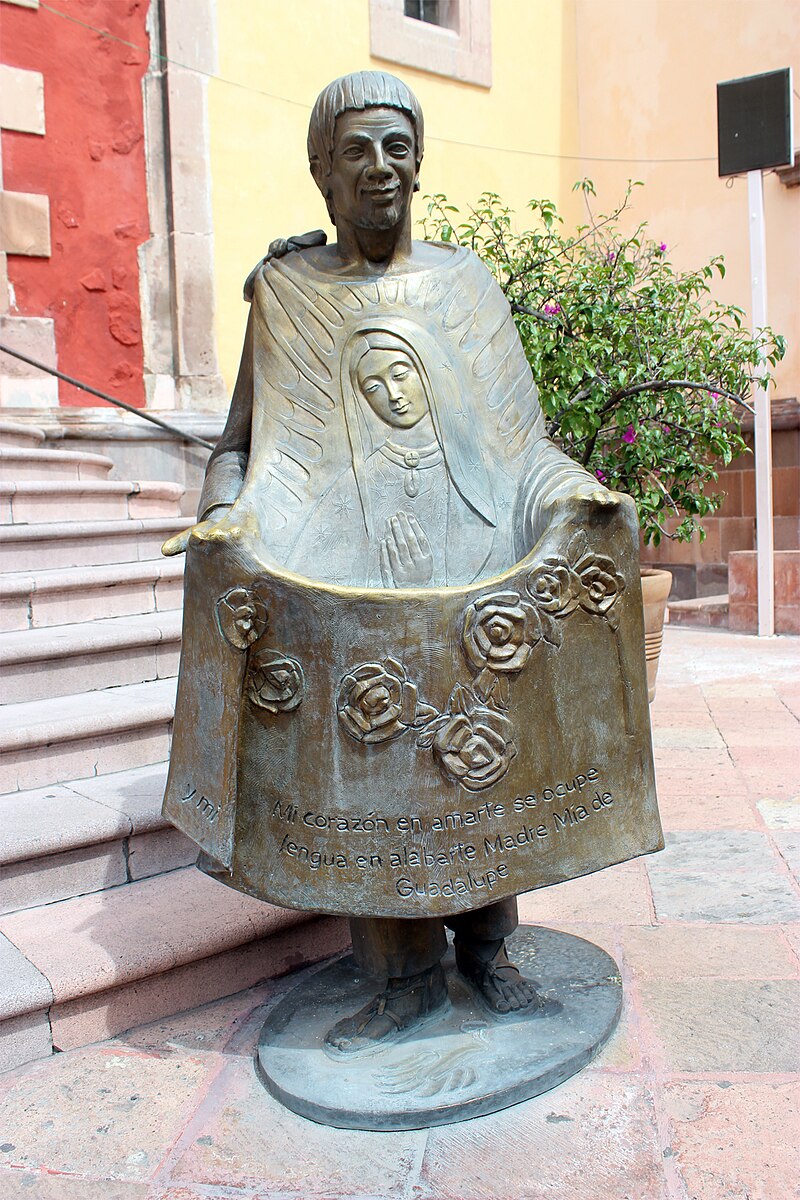 Escultura de San Juan Diego con la imagen de la virgen de Guadalupe |
フアン・ディエゴ・クアウトラトアツィンの列聖 フアン・ディエゴが1990年5月6日にグアダルーペ大聖堂(メキシコ)で列福された後、[11] 1998年、聖人列聖省はフアン・ディエゴ・クアウトラトアツィンの歴史的存在を調査するための歴史委員会を設置することを決定した。この委員会は、メキ シコの人々の研究において決定的な役割を果たす先住民の口承の伝統や、「エスカラダ写本」と呼ばれる文書など、この先住民の歴史的存在を立証するのに十分 な根拠を見出した。 2002年7月31日、教皇ヨハネ・パウロ2世は、メキシコシティへの使徒的訪問中に、グアダルーペ大聖堂でフアン・ディエゴを列聖した。  フランス、パリのノートルダム大聖堂にあるグアダルーペの聖母像  グアダルーペの聖母像を手に持つ聖フアン・ディエゴの彫刻 |
Estudios de la imagen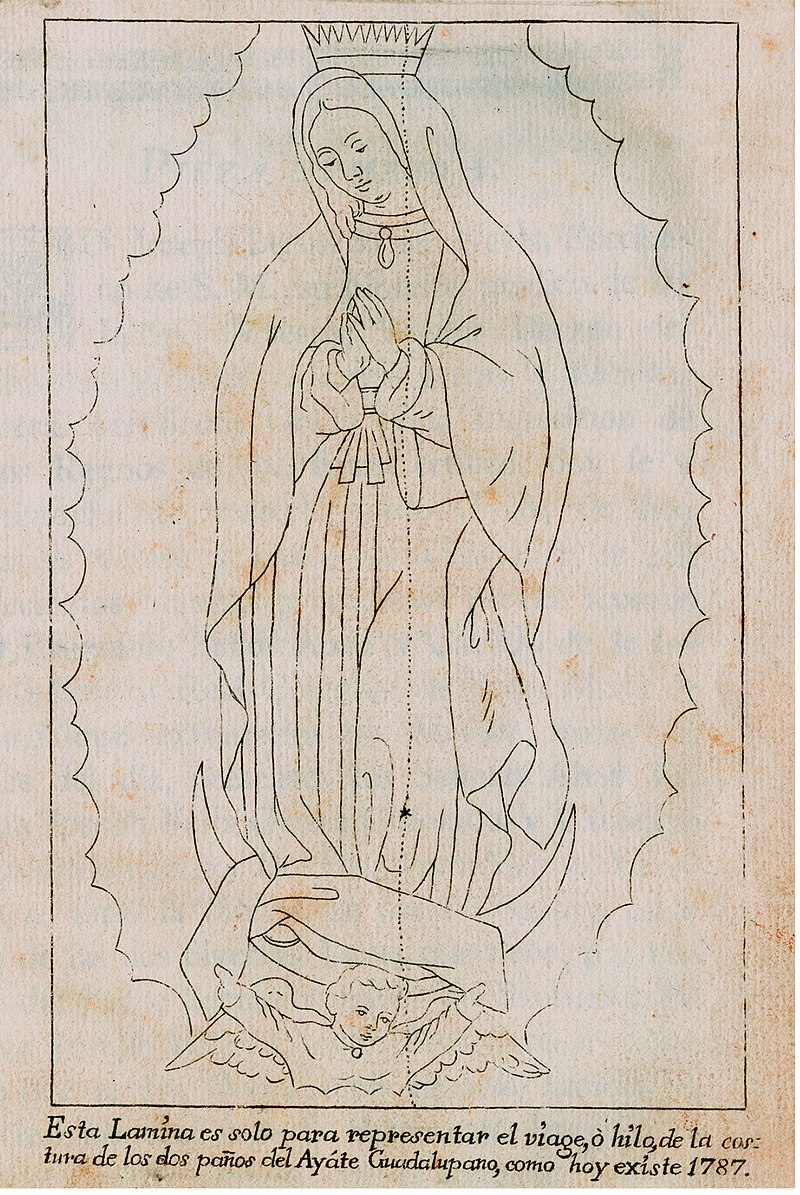 Dibujo que muestra uno de los primeros análisis guadalupanos en el que se estudia como es que se pudo plasmar la imagen de la virgen María cuando el ayate estaba partido a la mitad y unido con un hilo. Véase también: Anexo:Estudios sobre la tilma de Juan Diego. Múltiples estudios sobre la Tilma de Juan Diego, han sido realizados a través de los siglos, tanto de la tela, como de las tintas o colorantes, el procedimiento de impresión, las imágenes en los ojos de la Virgen y del obispo Zumárraga, las estrellas y sus constelaciones, la temperatura, latidos, dimensión áurea, por diferentes métodos científicos desde fotografía con rayos infrarrojos hasta al tecnología de ampliación y transmisión de imágenes digitales satelitales. Unas de ellas son las que realizó en 1751, el pintor Miguel Cabrera, Joseph de Alcíbar y José de Ibarra, como parte de una comisión de 7 pintores, comprobaron e informaron en “Maravilla Americana” que en la Imagen no es una pintura: no hay rastros de pintura ni pinceladas de ningún tipo, por delante ni por detrás. La imagen no podía explicarse como humanamente hecha. En 1979 los norteamericanos Philip Callahan y Jody Brant Smith, asociados a un centro católico de estudios marianos, fotografiaron la imagen con cámara infrarroja y no encontraron explicación científica para la hechura del manto, túnica, manos y rostro de la Virgen.[76] En 1929 el fotógrafo Alfonso Marcué González identificó la imagen de un hombre reflejada en el ojo derecho, por ello profundizaron el análisis en los ojos y en 1951 José Carlos Salinas Chávez, descubrió un busto humano también en el ojo izquierdo; en 1956 el Dr. Javier Torroella-Bueno vio la curvatura del ojo al igual que en sus pacientes. Ese mismo año el Dr. Lavoignet, encontró el efecto Purkinge-Samson. En 1974 el Dr. Graue reportó que ve el fondo del ojo "como en sus pacientes vivos". José Aste Tonsmann en 1979 culminó años de trabajo donde descubrió 13 imágenes en los ojos de la Virgen y a Juan Diego como reflejo en el ojo de una de las imágenes. En 1982, el restaurador de arte José Sol Rosales examinó la imagen con estereomicroscopía e identificó sulfato de calcio, hollín de pino, en colores blanco y azul, tierras verdes (suciedad), redes hechas de carmín y otros pigmentos, y también oro. Rosales encontró en el trabajo materiales y métodos coincidentes con los de un trabajo humano del siglo xvi.[77] Norberto Rivera Carrera, arzobispo de México, comisionó un estudio en 1999 acerca de la factura del ayate, Leoncio Garza Valdés, un pediatra y microbiólogo que había trabajado previamente en el Sudario de Turín, reclamó una inspección de fotografías de la imagen en las que el descubrió tres imágenes superpuestas en la tilma. La primera imagen sería la Virgen de Guadalupe de Extremadura, España con las iniciales M.A., en la segunda pintura la misma Virgen de Extremadura pero con rasgos indígenas y en la tercera la Virgen de Guadalupe del Tepeyac que conocemos hoy día. Sin embargo no pudo citar ningún otro observador independiente que haya visto las mismas características.[78] Gilberto Aguirre, quien acompañó a Garza-Valdés en el examen de 1999, examinó las mismas fotografías e indicó que, si bien estaba de acuerdo en que la pintura había sido extensamente forzada, se oponía a las conclusiones de Garza Valdés y sostuvo que las condiciones de realización del estudio fueron inadecuadas. La inexistencia de fotografías que comprueben la tesis de Garza Valdés, y el hecho de que esas tres imágenes sobrepuestas implicarían anacronismos históricos, ha desacreditado en medios investigativos las conclusiones de Garza Valdés. Al respecto él dijo a un periódico de San Antonio, Texas en el año 2002 lo siguiente: El Dr. Garza-Valdés y yo tenemos las mismas imágenes, pero nuestras conclusiones son totalmente diferentes. No encuentro a nadie que esté de acuerdo con el Dr. Garza-Valdés.... En segundo lugar, afirma que el no sólo ve las otras dos pinturas, sino a un bebé desnudo de Jesús en los brazos de la Virgen, así como las iniciales M.A. y la fecha de 1556. Yo he estudiado estas fotos, pero no veo estas cosas.[79] Tela En 1946 el Instituto de Biología de la Universidad Nacional de México comprobó que las fibras procedían de un agave, es decir, un maguey. De acuerdo con el restaurador José Sol Rosales en 1982, el análisis al microscopio de la tela en donde fue pintada la imagen y su comportamiento indican que está hecha de una mezcla de cáñamo y lino, no de fibras de agave como se creía.[80][81] |
画像の研究 グアダルーペの最初(1787)の分析の一つを示す図。それは、アヤテが半分に裂けて糸で結ばれていたときに、聖母マリアの像がどのように描かれたかを研究したものである。 参照:付録:フアン・ディエゴのティルマに関する研究。 何世紀にもわたり、フアン・ディエゴのティルマについて、布地、インクや染料、 印刷方法、聖母とズマラガ司教の目に映った像、星と星座、温度、心拍数、黄金比など、赤外線写真から衛星画像の拡大・伝送技術に至るまで、様々な科学的手法によって行われてきた。 そのうちのいくつかは、1751年に画家ミゲル・カブレラ、ホセ・デ・アルシバル、ホセ・デ・イバラが、7人の画家からなる委員会の一員として行ったもの だ。彼らは「アメリカの驚異」の中で、この像は絵画ではないことを確認し、報告している。像の前面にも背面にも、絵の具の痕跡や筆跡は一切見られない。こ の像は、人間の手によるものとは説明できないものだった。1979年、カトリックの聖母マリア研究センターに所属するアメリカ人のフィリップ・キャラハン とジョディ・ブラント・スミスが、赤外線カメラで像を撮影したが、聖母の衣、チュニック、手、顔の作りについて科学的な説明は見つからなかった。 1929年、写真家のアルフォンソ・マルクエ・ゴンサレスは、右目に映った男性の像を確認した。この発見を受けて、両眼の詳細な分析が行われ、1951年 にはホセ・カルロス・サリナス・チャベスが左目にも人間の胸像を発見した。1956年、ハビエル・トロエラ・ブエノ博士は、患者の眼球と同様の曲率をこの 像の眼球に見出した。同年、ラヴォイニエ博士はパーキンジ・サムソン効果を発見した。1974年、グラウエ博士は「生きた患者たちと同じように」眼底が見 えることを報告した。1979年、ホセ・アステ・トンズマンは長年の研究の結果、聖母の目に13の画像を発見し、そのうちの1つの目にフアン・ディエゴが 映っていることを発見した。 1982年、美術修復家のホセ・ソル・ロサレスは、立体顕微鏡で画像を検査し、硫酸カルシウム、松の煤、白と青の色、緑色の土(汚れ)、カーマインやその 他の顔料で作られた網、そして金も確認した。ロサレスは、この作品に16世紀の人間の作品と一致する素材や技法を見出した。[77] メキシコの大司教ノルベルト・リベラ・カレラは、1999年にアヤテの制作に関する調査を委託した。小児科医であり微生物学者であり、以前トリノの聖骸布 の研究に携わっていたレオンシオ・ガルサ・バルデスが、この画像の写真を調査し、ティルマに3つの画像が重なっていることを発見した。最初の像はスペイ ン、エストレマドゥーラ州のグアダルーペの聖母で、イニシャル「M.A.」が記されていた。2番目の像は、同じエストレマドゥーラの聖母であるが、先住民 の特徴を備えていた。3番目の像は、今日我々が知っているテペヤックのグアダルーペの聖母であった。しかし、彼は、同じ特徴を見た他の独立した観察者を引 用することはできなかった。[78] 1999年の調査でガルサ・バルデスに同行したギルベルト・アギレは、同じ写真を検証し、絵が大幅に改ざんされていたことは認めるものの、ガルサ・バルデ スの結論には反対し、調査の実施条件が不適切だったと主張した。ガルザ・バルデスの説を裏付ける写真が存在しないこと、また、これら3枚の画像を重ね合わ せると歴史的な時代錯誤が生じるという事実から、ガルザ・バルデスの結論は研究界では信用を失っている。この点について、彼は2002年にテキサス州サン アントニオの新聞に次のように述べている。 ガルザ・バルデス博士と私は同じ画像を持っているが、私たちの結論はまったく異なる。ガルザ・バルデス博士の意見に同意する者は誰も見当たらない...。 第二に、彼は他の2つの絵画だけでなく、聖母の腕に抱かれた裸の幼子イエス、そしてイニシャル「M.A.」と1556年の日付も確認していると主張してい る。私はこれらの写真を研究したが、そのようなものは見当たらない。[79] 布 1946年、メキシコ国立大学生物学研究所は、この繊維がリュウゼツラン、すなわちマゲイに由来するものであることを確認した。1982年に修復家ホセ・ ソル・ロサレスが行った分析によると、この絵が描かれた布を顕微鏡で観察した結果、その性質から、この布はアガベの繊維ではなく、麻とリネンの混合繊維で できていることがわかった。[80][81] |
Fiesta de la Virgen de Guadalupe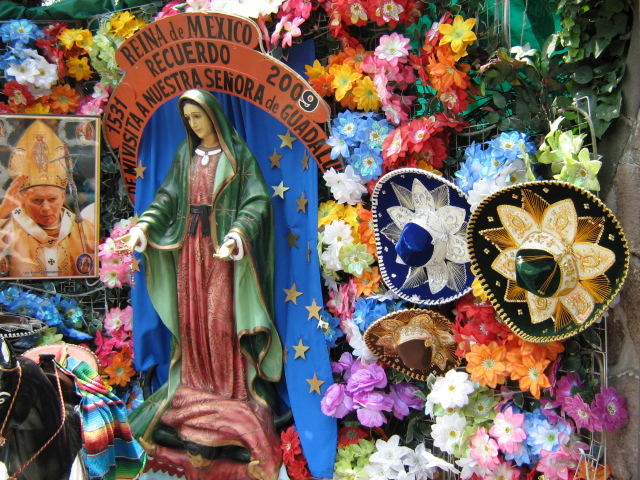 Artesanías guadalupanas. La fiesta de la Virgen se celebra el 12 de diciembre. La noche del día anterior, las iglesias en todo lo ancho y largo del país se colman de fieles para celebrar una fiesta a la que llaman «las mañanitas a la Guadalupana» o serenata a la Virgen. El santuario de Guadalupe, ubicado en el cerro del Tepeyac en la Ciudad de México, es visitado ese día por más de 5 millones de personas. Se tiene por costumbre que tales peregrinaciones no solo incluyan fieles y organizadores, sino danzantes llamados Matlachines, quienes lideran las procesiones hasta llegar a la basílica. Los Diarios de Juan Bautista a mediados del siglo xvi y las Cartas de 1797 de Servando Teresa de Mier, ambos dan la fecha 8 de septiembre[82] para una celebración dedicada al natalicio de María (madre de Jesús): "La misma fiesta del santuario de Guadalupe que todavía celebran hoy los indios en el día 8 de septiembre... así como celebran los españoles el 12 de diciembre...".[83] Fue por las Informaciones jurídicas de 1666 por las cuales se pidió y consiguió una fiesta y misa propia para Nuestra Señora de Guadalupe y la traslación de la fecha de la fiesta de la Virgen de Guadalupe, del 8 de septiembre al 12 de diciembre, última fecha en que la Virgen se le apareció a Juan Diego. Debido a estas Informaciones en el año 1754, durante el pontificado de Benedicto XIV, la Congregación de Ritos confirmó el valor auténtico de las apariciones y concedió la celebración de misa y oficio propios para la fiesta de Guadalupe para el día 12 de diciembre.[84][85] |
グアダルーペの聖母祭 グアダルーペの工芸品。 聖母の祭りは12月12日に祝われる。前日の夜、全国の教会は信者たちで溢れ、彼らは「ラス・マニャーニータス・ア・ラ・グアダルーペナ」と呼ばれる聖母 へのセレナーデを祝う。メキシコシティのテペヤック丘にあるグアダルーペの聖地には、この日500万人以上の人々が訪れる。 こうした巡礼には、信者や主催者だけでなく、マトラチネスと呼ばれる踊り手たちも参加するのが慣例で、彼らは大聖堂まで行列を先導する。 16世紀半ばのフアン・バウティスタの日記と、1797年のセルバンド・テレサ・デ・ミエルの手紙は、どちらも9月8日をマリア(イエスの母)の誕生を祝う日として記している[82]。 「グアダルーペの聖地での祭りは、今日でもインディアスたちが9月8日に祝っている…スペイン人たちが12月12日に祝うのと同じように…」 1666年の法的情報により、グアダルーペの聖母のための独自の祝祭とミサが要求され、認められた。また、グアダルーペの聖母の祝祭日が9月8日から12 月12日、つまり聖母がフアン・ディエゴに最後に現れた日に変更された。この情報により、1754年、教皇ベネディクト14世の在位中に、典礼省は御出現 の真正性を確認し、12月12日をグアダルーペの祝日として、そのためのミサと典礼を祝うことを認めたのである。[84][85] |
| Honores papales El 12 de octubre de 1895, la Virgen de Guadalupe fue coronada canónicamente en México.[86] En 1910 el papa Pío X la nombró patrona de América Latina.[86] Pío XII la llamó "Emperatriz de las Américas" en 1945.[86] Anualmente, la basílica de Santa María de Guadalupe tiene al menos el doble de visitantes que los santuarios marianos más conocidos, por lo que constituye un destacado fenómeno social y cultural.[87] |
教皇による栄誉 1895年10月12日、グアダルーペの聖母はメキシコで正式に戴冠した。[86] 1910年、教皇ピオ10世は彼女をラテンアメリカの守護聖人に任命した。[86] ピオ12世は1945年に彼女を「アメリカ大陸の女帝」と呼んだ。[86] 毎年、サンタ・マリア・デ・グアダルーペ大聖堂には、最も有名な聖母マリアの聖地よりも少なくとも2倍以上の訪問者が訪れ、それは顕著な社会的・文化的現象となっている。[87] |
| En movimientos políticos Debido a su asociación con la justicia social, la imagen de Nuestra Señora de Guadalupe se ha utilizado como símbolo en todas las regiones para promover movimientos políticos y movilizar a las masas. Por ejemplo, la imagen se ha utilizado de manera más notable en el movimiento de Independencia de México a principios del siglo xix, el Movimiento de Trabajadores Agrícolas Unidos en los EE. UU. en el siglo xx y en causas políticas contemporáneas como la inmigración.[88][89] En la Independencia de México, la imagen de Nuestra Señora de Guadalupe se asoció con el movimiento después de que el Padre Miguel Hidalgo reuniera y uniera a los insurgentes bajo su estandarte. De hecho, el primer presidente de la república mexicana, José Miguel Ramón Adaucto Fernández y Félix, quien estuvo muy involucrado en la guerra de Independencia de México, cambió su nombre por el de Guadalupe Victoria en señal de devoción. En la Unión de Campesinos, su líder, César Chávez, era un católico devoto que recurrió a sus creencias religiosas para exigir mejores salarios y prácticas laborales para los trabajadores agrícolas en los EE. UU.[89][90][91] Incorporó sus creencias religiosas en el movimiento organizando misas y oraciones antes de las reuniones, y dirigiendo una peregrinación de Delano a Sacramento en 1966 durante la Cuaresma.[90] Al igual que en el movimiento de Independencia de México, la famosa peregrinación de 1966 que atrajo la atención nacional sobre la causa fue encabezada bajo un estandarte con la imagen de Nuestra Señora de Guadalupe.[90] La imagen de Nuestra Señora de Guadalupe también está presente en la discusión política contemporánea sobre inmigración.[88][89] Artistas como Ester Hernández y Consuelo Jiménez Underwood incorporan o reinventan su imagen en obras de arte que comentan sobre la política de inmigración.[92][93] |
政治運動において 社会正義との関連から、グアダルーペの聖母の像は、あらゆる地域で政治運動を推進し、大衆を動員するためのシンボルとして用いられてきた。例えば、この像 は、19世紀初頭のメキシコ独立運動、20世紀の米国における農業労働者組合運動、そして移民問題などの現代的な政治運動において、最も顕著に使用されて きた。[88][89] メキシコ独立戦争では、ミゲル・イダルゴ神父が反乱軍をその旗印の下に結集させた後、グアダルーペの聖母の像がこの運動と結びつけられた。実際、メキシコ 独立戦争に深く関わったメキシコ共和国の初代大統領、ホセ・ミゲル・ラモン・アダウクト・フェルナンデス・イ・フェリックスは、敬虔な信仰の証として、自 分の名前をグアダルーペ・ビクトリアに変更した。 農民組合のリーダー、セザール・チャベスは敬虔なカトリック教徒であり、その信仰を武器に、米国の農業労働者に、より良い賃金と労働条件を求める運動を展 開した。[91] 彼は、集会前にミサや祈りを開催したり、1966年の四旬節にデラノからサクラメントへの巡礼を指揮したりするなど、宗教的信念を運動に取り入れた。 [90] メキシコ独立運動と同様、1966年の有名な巡礼は、この運動を全国的に注目させるきっかけとなり、グアダルーペの聖母マリアの像が描かれた旗を先頭に、 行進が行われた。[90] グアダルーペの聖母の像は、移民に関する現代の政治議論にも登場している。[88][89] エステル・エルナンデスやコンスエロ・ヒメネス・アンダーウッドなどの芸術家は、移民政策について論評する芸術作品にこの像を取り入れたり、再創造したり している。[92][93] |
| En el arte Movimiento chicano Basándose en el significado de Nuestra Señora de Guadalupe en la cultura chicana, muchos artistas chicanos veneran su imagen y reimaginan visualmente la figura religiosa dentro de un contexto feminista y contemporáneo.[93][94][95] Más que un simple símbolo religioso, los artistas chicanos ven a Nuestra Señora de Guadalupe como un ícono feminista empoderador y una proclamación del orgullo indígena.[94] Sin embargo, estas obras de arte no han estado exentas de controversia, ya que muchos artistas se han enfrentado a una intensa reacción de católicos conservadores o grupos tradicionalistas que ven sus obras de arte como "irrespetuosas e irreverentes".[96] Una de las controversias más famosas fue provocada por el collage digital de Nuestra Señora de Alma López, que luego condujo a un libro titulado "Our Lady of Controversy: Alma López's Irreverent Apparition".[97] A pesar de esto, artistas chicanos como Yolanda López, Alma López, Margarita 'Mita' Cuarón, Ester Hernández y Consuelo Jiménez Underwood, entre otras, han utilizado el retrato de Nuestra Señora de Guadalupe para explorar temas de represión, fuerza femenina y para elevar a las mujeres.[98] |
芸術において チカーノ運動 チカーノ文化におけるグアダルーペの聖母の意味に基づき、多くのチカーノ芸術家は彼女の像を崇拝し、フェミニスト的かつ現代的な文脈の中でこの宗教的人物 を視覚的に再解釈している。[93][94][95] チカーノの芸術家たちは、グアダルーペの聖母を単なる宗教的シンボルではなく、エンパワーメントをもたらすフェミニストの象徴、そして先住民としての誇り を宣言するものとして捉えている。[94] しかし、これらの芸術作品は論争を免れてはいない。多くの芸術家が、彼らの芸術作品を「無礼で不敬である」とみなす保守的なカトリック教徒や伝統主義者グ ループからの激しい反発に直面してきたからだ。[96] 最も有名な論争のひとつは、アルマ・ロペスの聖母マリアのデジタルコラージュが引き起こしたもので、その後『論争の聖母:アルマ・ロペスの不遜な御出現』 という本が出版された。それにもかかわらず、ヨランダ・ロペス、アルマ・ロペス、マルガリータ・ミタ・クアロン、エステル・エルナンデス、コンスエロ・ヒ メネス・アンダーウッドなどのチカーノ系アーティストたちは、グアダルーペの聖母像を用いて、抑圧や女性の力といったテーマを探求し、女性を称賛してき た。 |
| Historia guadalupana en cine y televisión Cine 1917 - Tepeyac /El milagro del Tepeyac (México)[99] 1918 - La Virgen de Guadalupe (México) [cortometraje documental][100] 1926 - El milagro de la Guadalupana /Milagros de la Guadalupana (México)[101] 1931 - Alma de América (México)[102] 1939 - La Reina de México (México) [Mediometraje][103] 1942 - La virgen morena (México)[104] 1942 - La virgen que forjó una patria (México)[105] 1957 - La sonrisa de la Virgen (México)[106] 1959 - Las rosas del milagro (México)[107] 1976 - La Virgen de Guadalupe (México)[108] 1987 - El pueblo mexicano que camina (México) [Documental][109] 2006 - Guadalupe (México, España)[110] 2015 - Guadalupe: The Miracle and the Message /Guadalupe: El milagro y el mensaje (EUA) [mediometraje documental][111][112] 2020 - Nuestra Señora de Guadalupe (EUA) [Largometraje documental) 2024 - Guadalupe: Madre de la Humanidad Televisión 1981 - El Gran Acontecimiento. Nican Mopohua (México) [TV-Mediometraje animado][113] 1997 - Los enigmas de Guadalupe (México) [Documental][114] 2001 - Juan Diego. Messenger of Guadalupe / Juan Diego. Mensajero de Guadalupe (EUA) [Episodio de miniserie de animación][115] 2002 - La Virgen de Guadalupe (México) [TV-Serie][116] 2002 - Virgen de Guadalupe, entre la fe y la razón (México) [TV-Mediometraje][117] 2004 - El misterio de la Virgen de Guadalupe (México) [TV-Documental][118] 2008 - presente: La rosa de Guadalupe telenovela que presenta conflictos que luego son resueltos cuando un personaje le reza a la virgen y aparece una flor blanca como prueba de que la virgen escuchó el pedido y realizó el milagro. 2010-1531. La historia que aún no termina (México) [TV-Documental][119] 2012 - Historias de la Virgen Morena (México, Estados Unidos) telenovela mexicana-estadounidense. 2015 - Juan Diego. El indio de Guadalupe (México) [TV-Largometraje][120] |
グアダルーペの物語を映画とテレビで 映画 1917年 - テペヤック / テペヤックの奇跡(メキシコ)[99] 1918年 - グアダルーペの聖母(メキシコ)[短編ドキュメンタリー][100] 1926年 - グアダルーペの奇跡 / グアダルーペの奇跡(メキシコ)[101] 1931年 - アメリカの魂(メキシコ)[102] 1939年 - メキシコの女王(メキシコ)[中編映画][103] 1942年 - 黒い聖母(メキシコ)[104] 1942年 - 祖国を築いた聖母(メキシコ)[105] 1957年 - 聖母の微笑み(メキシコ)[106] 1959年 - 奇跡のバラ(メキシコ)[107] 1976年 - グアダルーペの聖母(メキシコ)[108] 1987年 - 歩むメキシコの人々(メキシコ)[ドキュメンタリー][109] 2006年 - グアダルーペ(メキシコ、スペイン)[110] 2015年 - グアダルーペ:奇跡とメッセージ(アメリカ)[中編ドキュメンタリー][111][112] 2020年 - グアダルーペの聖母(アメリカ)[長編ドキュメンタリー] 2024年 - グアダルーペ:人類の母 テレビ 1981年 - 大いなる出来事。ニカン・モポフア(メキシコ)[テレビ中編アニメ][113] 1997年 - グアダルーペの謎(メキシコ)[ドキュメンタリー][114] 2001年 - ファン・ディエゴ。グアダルーペの使者 / Juan Diego. Messenger of Guadalupe (米国) [アニメミニシリーズの一話][115] 2002年 - グアダルーペの聖母 (メキシコ) [テレビシリーズ][116] 2002年 - 『信仰と理性の狭間にあるグアダルーペの聖母』(メキシコ)[テレビ中編映画][117] 2004年 - 『グアダルーペの聖母の謎』(メキシコ)[テレビドキュメンタリー][118] 2008年~現在:グアダルーペのバラ ドラマシリーズ。登場人物が聖母に祈りを捧げると、白い花が現れ、聖母がその願いを聞き入れて奇跡を起こしたことを示すという、葛藤が解決されるストーリー。 2010年~1531年。まだ終わらない物語(メキシコ)[テレビドキュメンタリー][119] 2012年 - 『ヒストリアス・デ・ラ・ヴィルヘン・モレナ』(メキシコ、アメリカ)メキシコとアメリカの共同制作のテレビドラマ。 2015年 - 『フアン・ディエゴ。グアダルーペのインディオ』(メキシコ)[テレビ映画][120] |
| Coatlaxopeuh Día de la Virgen de Guadalupe Guadalupe (España) Cerro de Guadalupe Juan Diego Cuauhtlatoatzin |
コアトラショペウ グアダルーペの聖母の日 グアダルーペ(スペイン) グアダルーペの丘 フアン・ディエゴ・クアウトラトアツィン(このページの情報) |
| Bibliografía «Información que el señor arzobispo de México D. Fray Alonso de Montúfar mandó practicar sobre un sermón que el 8 de septiembre de 1556 predicó fray Francisco de Bustamante acerca del culto de nuestra señora de Guadalupe», versión paleográfica del texto completo, realizada por fray Fidel de Jesús Chauvet, con comentario. Sin fecha (posiblemente de fines del siglo xx o principios del siglo xxi). Chauvet menciona que este texto se publicó por primera vez en 1888 en España. Consultado el 17 de diciembre de 2008. Chávez, Eduardo:«La verdad de Guadalupe.» México: Ediciones Ruz, 2009. Chimalpahin Quauhtlehuanitzin, Domingo Francisco de San Antón Munón: Relaciones originales de Chalco-Amaquemecan. México: Fondo de Cultura Económica, 1965. De Sahagún, Fray Bernardino (1499-1590): Historia general de las cosas de la Nueva España [1576]. México: Porrúa, 1956. Escalada, Xavier: Enciclopedia guadalupana (5 tomos). México: Enciclopedia Guadalupana, 1997. Galera Lamadrid, Jesús: Nican mopohua, breve análisis literario e histórico. México: Porrúa, 2001. Francisco Morales Padrón (1990). Primeras cartas sobre América (1493-1503). Secretariado de Publicaciones de la Universidad de Sevilla. ISBN 84-7405-517-2. Francisco Montes González (2015). Sevilla guadalupana. Arte, historia y devoción. Secretariado de Publicaciones de la Diputación de Sevilla. ISBN 978-978-84-7798-3. Gamboa Ojeda, Leticia: «Reseña a “'La Virgen de Guadalupe, imagen y tradición”», en David Brading: Historia mexicana, LII (2), págs. 546-551; 2004. González de Alba, Luis (s/f): «La Virgen Guadalupana, contradicción permanente», en Razonamientos (3). Consultado el 17 de diciembre de 2008. Gruzinsky, Serge (1994), La guerra de las imágenes. De Cristóbal Colón a "Blade Runner", Fondo de Cultura Económica, México. León-Portilla, Miguel: Tonantzín Guadalupe, Pensamiento náhuatl y mensaje cristiano en el “Nican mopohua”. México: Fondo de Cultura Económica, 2000. Siller Acuña, Clodomiro L.: La evangelización guadalupana. México, D. F.: Cuadernos Estudios Indígenas n.º 1, 1984. Velázquez, Primo Feliciano: La aparición de Santa María de Guadalupe. México: Jus, 1931. |
参考文献 「メキシコ大司教フアン・デ・モントゥファーが、1556年9月8日にフランシスコ・デ・ブスタマンテがグアダルーペの聖母崇拝について説教した内容につ いて調査を命じた情報」、全文の古文書学的版、フィデル・デ・ヘスス・ショーヴェによる注釈付き。日付不明(おそらく20世紀末か21世紀初頭)。ショー ヴェは、このテキストが1888年にスペインで初めて出版されたと述べている。2008年12月17日参照。 チャベス、エドゥアルド:『グアダルーペの真実』。メキシコ:エディシオンズ・ルズ、2009年。 チマルパヒン・クアウトレワニチン、ドミンゴ・フランシスコ・デ・サン・アントン・ムノン:『チャルコ・アマケメカンに関する原典』。メキシコ:Fondo de Cultura Económica、1965年。 デ・サアグン、フレイ・ベルナルディーノ(1499-1590):『新スペインの事物に関する総論』[1576年]。メキシコ:Porrúa、1956年。 エスカラーダ、ザビエル:『グアダルーペ百科事典』(全5巻)。メキシコ:エンシクロペディア・グアダルーペ、1997年。 ガレラ・ラマドリッド、ヘスス:『ニカン・モポワ、簡潔な文学的・歴史的分析』。メキシコ:ポルア、2001年。 フランシスコ・モラレス・パドロン(1990)。『アメリカに関する最初の書簡(1493-1503)』。セビリア大学出版局。ISBN 84-7405-517-2。 フランシスコ・モンテス・ゴンサレス(2015)。『グアダルーペのセビリア。芸術、歴史、信仰』 セビリア県出版事務局。ISBN 978-978-84-7798-3。 ガンボア・オヘダ、レティシア:「『グアダルーペの聖母、イメージと伝統』の書評」、デビッド・ブレイディング著『メキシコの歴史』LII (2)、546-551 ページ、2004 年。 ゴンサレス・デ・アルバ、ルイス(日付不明):「グアダルーペの聖母、永続的な矛盾」、『Razonamientos (3)』所収。2008年12月17日閲覧。 グルジンスキー、セルジュ(1994年)、『イメージの戦争。クリストファー・コロンブスから「ブレードランナー」まで』、Fondo de Cultura Económica、メキシコ。 レオン・ポルティージャ、ミゲル:『トナンツィン・グアダルーペ、ナワトル思想とキリスト教のメッセージ「ニカン・モポワ」に表れるもの』。メキシコ:Fondo de Cultura Económica、2000年。 Siller Acuña, Clodomiro L.: 『グアダルーペの福音化』メキシコ、D. F.: Cuadernos Estudios Indígenas n.º 1、1984年。 Velázquez, Primo Feliciano: 『聖マリア・デ・グアダルーペの出現』メキシコ: Jus、1931年。 |
| Obras literarias dedicadas a la Virgen de Guadalupe Eduardo Chávez Sánchez: La Verdad de Guadalupe. Ediciones Ruz 2008 ISBN 9786077617037 José Lucas Anaya: La milagrosa aparición de Nuestra Señora de Guadalupe de México. Estudio, edición y notas de Alejandro González Acosta. México: UNAM 1995. Francisco de Castro: La octava Maravilla y sin segundo milagro de México, perpetuado en las rosas de Guadalupe y escrito heroicamente en octavas (1729). Estudio, edición y notas de Alberto Pérez Amador Adam. México: Fondo de Cultura Económica 2011. José Antonio Villerías y Roelas: Guadalupe. En cuatro libros comprendidos en México 24 de marzo del año del Señor 1724. Transcripción, traducción castellana y notas de Ignacio Osorio Romero. México: UNAM 1991. Francisco Montes González (2015). Sevilla guadalupana. Arte, historia y devoción. Secretariado de Publicaciones de la Diputación de Sevilla. ISBN 978-84-7798-377-4. |
グアダルーペの聖母に捧げられた文学作品 エドゥアルド・チャベス・サンチェス:『グアダルーペの真実』。エディシオンズ・ルス、2008年 ISBN 9786077617037 ホセ・ルカス・アナヤ:『メキシコのグアダルーペの聖母の奇跡的な出現』。アレハンドロ・ゴンサレス・アコスタによる研究、編集、注釈。メキシコ:UNAM、1995年。 フランシスコ・デ・カストロ:『メキシコにおける八番目の驚異、そして他に類を見ない奇跡、グアダルーペの薔薇に刻まれ、英雄的に八行詩に綴られたもの (1729年)』研究、編集、注釈:アルベルト・ペレス・アマドール・アダム。メキシコ:Fondo de Cultura Económica 2011年。 ホセ・アントニオ・ビジェリアス・イ・ロエラス:グアダルーペ。1724年3月24日、メキシコで書かれた4冊の本。イグナシオ・オソリオ・ロメロによる転写、スペイン語訳、注釈。メキシコ:UNAM 1991年。 フランシスコ・モンテス・ゴンサレス(2015)。『セビリアのグアダルーペ。芸術、歴史、信仰』。セビリア県議会出版局。ISBN 978-84-7798-377-4。 |
| https://es.wikipedia.org/wiki/Nuestra_Se%C3%B1ora_de_Guadalupe_(M%C3%A9xico) |
|
| Coatlaxopeuh
es una palabra propuesta por el padre Mariano Jacobo Rojas de Tepoztlán
como posible origen en lengua náhuatl de la palabra Guadalupe, la
denominación de la Virgen de Guadalupe.[1] La sugerencia de una
etimología náhuatl para el nombre de la Virgen fue parte de los debates
indigenistas mexicanos de mediados del siglo xx, en los que destacados
intelectuales reinterpretaron la historia mexicana con un renovado
énfasis en la herencia indígena de la nación. Además de coatlaxopeuh,
se han sugerido muchas otras propuestas etimológicas náhuatl de
Guadalupe, pero en la literatura devocional coatlaxopeuh sigue siendo
la más aceptada.[2] |
コアトラショペウは、テポツトランのマリアノ・ハコボ・ロハス神父が、
ナワトル語におけるグアダルーペ(グアダルーペの聖母)という名称の語源として提案した言葉である。[1]
聖母の名前のナワトル語による語源の提案は、20世紀半ばのメキシコ先住民主義の議論の一部であり、著名な知識人たちが、メキシコの歴史を、先住民の遺産
に新たな重点を置いて再解釈した。コアトラショペウ以外にも、グアダルーペのナワトル語語源として多くの説が提案されているが、信仰に関する文献では、コ
アトラショペウが依然として最も広く受け入れられている。[2 |
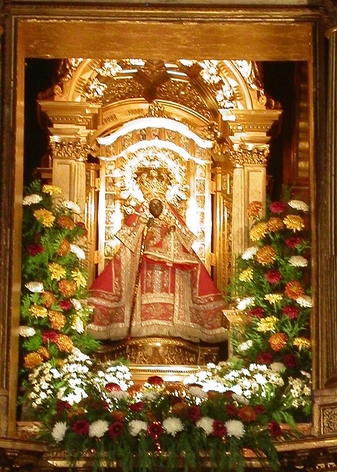 Virgen de Guadalupe, Guadalupe, Cáceres, España |
 グアダルーペの聖母、グアダルーペ、カセレス、スペイン |
| Luís Becerra y Tanco La primera sugerencia de que la palabra "Guadalupe" se había originado como una interpretación errónea de una palabra náhuatl original fue expuesta por el sacerdote Luís Becerra y Tanco en 1666.[3] El religioso planteó que, dado que Juan Diego, a quien había aparecido la virgen, no hablaba español, y dado que el idioma náhuatl no tenía las consonantes sonoras "g" o "d", era probable que el nombre hubiera sido originalmente una palabra náhuatl que luego fue malentendida por los españoles como Guadalupe. Por esta razón propuso que el nombre original podría haber sido "tequantlanopeuh ", que él tradujo como "Ella, que se originó en la cima de las rocas".[2] |
ルイス・ベセラ・イ・タンコ 「グアダルーペ」という言葉が、もともとナワトル語の単語を誤って解釈したことに由来するという最初の示唆は、1666年に司祭ルイス・ベセラ・イ・タン コによってなされた。[3] この聖職者は、聖母が現れたフアン・ディエゴはスペイン語を話さなかったこと、またナワトル語には有声音子音「g」や「d」が存在しないことから、この名 前はもともとナワトル語の言葉であり、後にスペイン人によってグアダルーペと誤解された可能性が高いと主張した。このため、彼は、元々の名前は「テカント ランオペウ」であり、それを「岩の頂上に生まれた彼女」と訳した。[2] |
| Indigenismo El padre Mario Rojas Sánchez, que tradujo el Nican Mopohua, sugirió el nombre náhuatl "Tlecuauhtlapeupeuh", que traduce como "La que emerge de la región de la luz como el Águila del fuego".[4] La erudita Jeanette Rodríguez, citando a Xavier Escalada,[5] señala que "el idioma náhuatl no contiene las letras d y g; por lo tanto, el nombre de Nuestra Señora no pudo haber sido "Guadalupe".[6] También presenta la teoría de que Juan Diego y su tío llamaron a la dama "Tlecuauhtlacupeuh", diciendo: "La comprensión náhuatl de 'Tlecuauhtlacupeuh' es La que viene volando de la luz como el águila de fuego. La región de la luz era la morada de los dioses aztecas, y el águila era una señal de los dioses. Para los españoles, sonaba como 'Guadalupe' y les recordaba a su Virgen". Rodríguez sostiene que el español pensó en "Guadalupe de Extremadura, España, pues un gran número de conquistadores provenían, precisamente, de la provincia de Extremadura y, naturalmente, eran muy devotos de la patrona local... ...la devoción a la Virgen de Guadalupe de Extremadura estaba llegando a su punto máximo en el momento en que los primeros contactos entre España y el Nuevo Mundo se produjeron".[6] Rodríguez afirma que el nombre "A los españoles ... les recordó a su Virgen de casa. Para los nativos, ... se refería a una señal que había venido de sus dioses". Esto permitió a cada lado ver en la historia algo que "entendió y valoró, lo que inevitablemente los uniría como una fuerza unificadora".[6] |
インディヘニスモ 『ニカン・モポワ』を翻訳したマリオ・ロハス・サンチェス神父は、ナワトル語の「トレクアウトルラペウペウ」という名前を提案した。これは「光の地域から火の鷲のように現れる者」と訳される。[4] 学者ジャネット・ロドリゲスは、ザビエル・エスカラダを引用して[5]、「ナワトル語には d と g の文字は存在しない。したがって、聖母の名前は「グアダルーペ」ではありえなかった」と指摘している。また、フアン・ディエゴと彼の叔父は、その女性を 「トレクアウトラクペウ」と呼んだという説も紹介している。「トレクアウトラクペウ」のナワトル語の意味は、「光の地域から火の鷲のように飛び込んでくる 者」である。光の領域はアステカ神々の住まいであり、鷲は神々のしるしであった。スペイン人にとっては、この言葉は「グアダルーペ」のように聞こえ、彼ら の聖母を彷彿とさせた」と説明している。 ロドリゲスは、スペイン人は「スペイン、エストレマドゥーラ州のグアダルーペ」を思い浮かべたと主張している。なぜなら、多くの征服者たちがまさにエスト レマドゥーラ州出身であり、当然のことながら、地元の守護聖女に深い信仰心を持っていたからだ... ...エストレマドゥーラのグアダルーペの聖母への信仰は、スペインと新大陸との最初の接触があった時期に、その頂点に達していた。[6] ロドリゲスは、「この名前は、スペイン人にとっては...故郷の聖母を思い出させるものだった。一方、先住民にとっては...彼らの神々からのしるしだっ た」と述べている。これにより、双方はこの物語を「理解し、評価する」ことができ、それが必然的に両者を結束させる力となったのだ。[6] |
| Gloria Anzaldúa Gloria Anzaldúa, en su libro Borderlands / La Frontera, propone el origen indígena de Guadalupe como Coatlalopeuh, que traduce como "Quien tiene dominio sobre las serpientes". Ella argumenta que debido a que Coatlalopeuh suena como Guadalupe, los españoles vieron a Coatlalopeuh como paralela o idéntica a "la Virgen oscura, Guadalupe, patrona del centro-oeste de España" (página 27). Anzaldúa da Coatlaxopeuh como una variación del nombre. Ella ve que ambas versiones están vinculadas históricamente a Coatlicue, cuyo nombre significa "Falda de serpiente". |
グロリア・アンサルドゥア グロリア・アンサルドゥアは、著書『Borderlands / La Frontera』の中で、グアダルーペの先住民起源をコアトラロペウ(Coatlalopeuh)と提唱している。これは「蛇を支配する者」と訳され る。彼女は、コアトラショペウがグアダルーペのように聞こえるため、スペイン人はコアトラショペウを「スペイン中西部を司る、黒い聖母グアダルーペ」と同 一視した、と論じている(27ページ)。アンサルドゥアは、コアトラショペウも同名の別形として挙げている。彼女は、どちらの名称も、その名が「蛇のス カート」を意味するコアトリクエと歴史的に関連があると見なしている。 |
| 1. Leatham 1989 2. Leatham 1989:30 3. Becerra y Tanco 1979:9 4. Rojas Sánchez 1978 5. Escalada, Xavier (1965). Los catolicos hsipanos en los Estados Unidos. New York: Centra Catolico de Patoral para Hispanos del Nordest. 6. Jeanette Rodriguez (1994). Our Lady of Guadalupe: Faith and Empowerment among Mexican-American Women. University of Texas Press. 7(英語版のみ) Anzaldúa, Gloria (1987). Borderlands : the new mestiza = La frontera (1st ed.). San Francisco: Spinsters/Aunt Lute. ISBN 978-1-879960-12-1. |
1. リーサム 1989 2. リーサム 1989:30 3. ベセラとタンコ 1979:9 4. ロハス・サンチェス 1978 5. エスカラーダ、ザビエル (1965). アメリカ合衆国のヒスパニック系カトリック教徒. ニューヨーク: 北東部ヒスパニック系カトリック教徒牧会センター. 6. Jeanette Rodriguez (1994). 『グアダルーペの聖母:メキシコ系アメリカ人女性たちの信仰とエンパワーメント』テキサス大学出版局。 |
| Bibliografía Anzaldúa, Gloria E. (2000). "Coatlalopeuh, la que domina a los serpientes". La diosa de las Américas . 12 p. Nueva York: Vintage Books . ISBN 0-375-70369-1 . Anzaldúa, Gloria E. (2007). Borderlands / La Frontera: La Nueva Mestiza . 3ra ed. San Francisco: Tía Lute Books. Barnes, Rhonda L. (1997). Exigiendo la igualdad social: una reinterpretación feminista del título de la Virgen de Guadalupelink Archivado el 5 de febrero de 2012 en Wayback Machine. . Becerra Tanco, Luis. 1979 [1675]. Felicidad de México . 3a ed. facsímil México: Editorial Jus. Behrens (von Habsburg), Helen. 1952 El tesoro de México . México Behrens (von Habsburg), Helen. 1966 La Virgen y el Dios Serpiente . México: Editorial Progres Dávila Garibi, Ignacio. 1936 Breve estudio histórico-etimológico acerca del vocablo "Guadalupe". 4a ed. México: imp. Emilio Pardo e Hijos. Aficionado, Benjamin. 1971 La imagen azteca en el pensamiento occidental . Nuevo Brunswick: Rutgers University Press. Leatham, Miguel. 1989. La hermenéutica indigenista y el significado histórico de Nuestra Señora de Guadalupe de México . Foro de folklore 22: 1/2 (1989) León-Portilla, Miguel. 1978 Pensamiento y cultura azteca: un estudio de la antigua mente náhuatl . 5ta impresión. Norman, Okla .: University of Oklahoma Press Phelan, John.L 1960. NEO-AZTECISM IN THE EIGHTEENI CENTURY AND THE GENESIS OF MEXICAN NATIONALISM . Culture In History: Essays In Honor Of Paul Radin, ed. S. Diamond, págs. 760–770. Nueva York: Columbia University Press. (inglés) Rodríguez, Mauro. 1980 Guadalupe: iHistoria o símbolo? Metico: Editorial Edicol. Rojas Sánchez, Mario, trad. 1978 Nican Mopohua . Puebla: Diócesis de Huejutla. Rojas Sánchez, Mario y J. Hernández Illescas. 1983. Las estrellas del manto de la Virgen de Guadalupe . México: Francisco Méndez Oteo. Wolf, Eric. 1958 La Virgen de Guadalupe: un símbolo nacional mexicano . Journal of American Folklore 71: 34-39 Lafaye, Jacques. 1977 Quetzalcóatl y Guadalupe: La formación de la conciencia nacional en México . México: Fondo de Cultura Económica |
参考文献 アンザルドゥア、グロリア・E. (2000). 「蛇を支配する者、コアトラロペウ」. アメリカ大陸の女神 . 12 ページ. ニューヨーク: ヴィンテージ・ブックス . ISBN 0-375-70369-1 . アンザルドゥア、グロリア・E. (2007). ボーダーランズ / ラ・フロンテラ:新しいメスティーソ。第3版。サンフランシスコ:ティア・ルート・ブックス。 バーンズ、ロンダ・L. (1997). 社会的平等を要求する:グアダルーペの聖母の称号に関するフェミニスト的再解釈リンク 2012年2月5日、ウェイバックマシンにアーカイブ。 ベセラ・タンコ、ルイス。1979年 [1675年]。『メキシコの幸福』。第3版。ファクシミリ版。メキシコ:エディトリアル・フス。 ベレンス(フォン・ハプスブルク)、ヘレン。1952年。『メキシコの宝』。メキシコ ベレンス(フォン・ハプスブルク)、ヘレン。1966年。『聖母と蛇の神』。メキシコ:エディトリアル・プログレス ダビラ・ガリビ、イグナシオ。1936年 『「グアダルーペ」という語に関する歴史的・語源的接近』。第4版。メキシコ:エミリオ・パルド・エ・イホス印刷。 アフィシオナド、ベンジャミン。1971年 『西洋思想におけるアステカのイメージ』。ニューブランズウィック:ラトガース大学出版。 リーサム、ミゲル。1989年。インディヘニスモ解釈学とメキシコのグアダルーペの聖母の歴史的意味。フォークロア・フォーラム 22: 1/2 (1989) レオン・ポルティージャ、ミゲル。1978年。アステカの思想と文化:古代ナワトル人の精神に関する研究。第5刷。ノーマン、オクラホマ州:オクラホマ大学出版局 フェラン、ジョン・L。1960年。『18世紀のネオ・アステカ主義とメキシコナショナリズムの起源』。文化の歴史:ポール・ラディンを称えるエッセイ、S・ダイアモンド編、760-770ページ。ニューヨーク:コロンビア大学出版局。(英語) ロドリゲス、マウロ。1980年。グアダルーペ:歴史か象徴か?メティコ:エディコール社。 ロハス・サンチェス、マリオ、訳。1978年。ニカン・モポワ。プエブラ:ウエフジュトラ教区。 ロハス・サンチェス、マリオ、J・エルナンデス・イレスカス。1983年。グアダルーペの聖母の衣の星たち。メキシコ:フランシスコ・メンデス・オテオ。 ウルフ、エリック。1958年 グアダルーペの聖母:メキシコの国民的シンボル。Journal of American Folklore 71: 34-39 ラファイ、ジャック。1977年 ケツァルコアトルとグアダルーペ:メキシコにおけるナショナリズムの形成。メキシコ:Fondo de Cultura Económica |
| Esta obra contiene una traducción derivada de «Coatlaxopeuh»
de Wikipedia en inglés, publicada por sus editores bajo la Licencia de
documentación libre de GNU y la Licencia Creative Commons
Atribución-CompartirIgual 4.0 Internacional. |
この作品は、英語版ウィキペディアの「コアトラショペウ」を翻訳したものであり、編集者によってGNUフリー文書利用許諾契約およびクリエイティブ・コモンズ表示-継承4.0国際ライセンスのもとで公開されている。 |
| https://es.wikipedia.org/wiki/Coatlaxopeuh |
★
リ ンク
文 献
そ の他の情報
Copyleft, CC, Mitzub'ixi Quq Chi'j, 1996-2099
☆
 ☆
☆